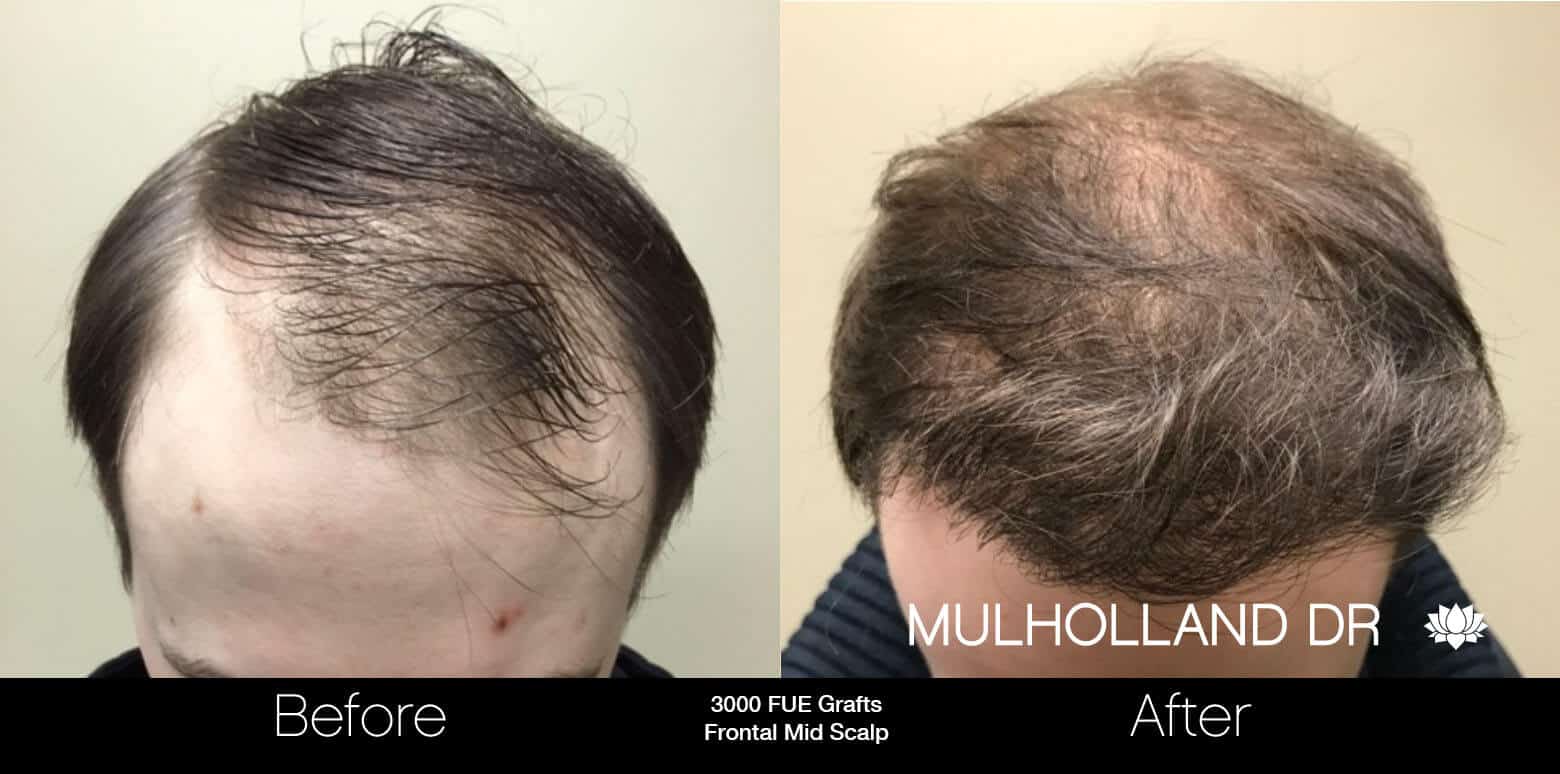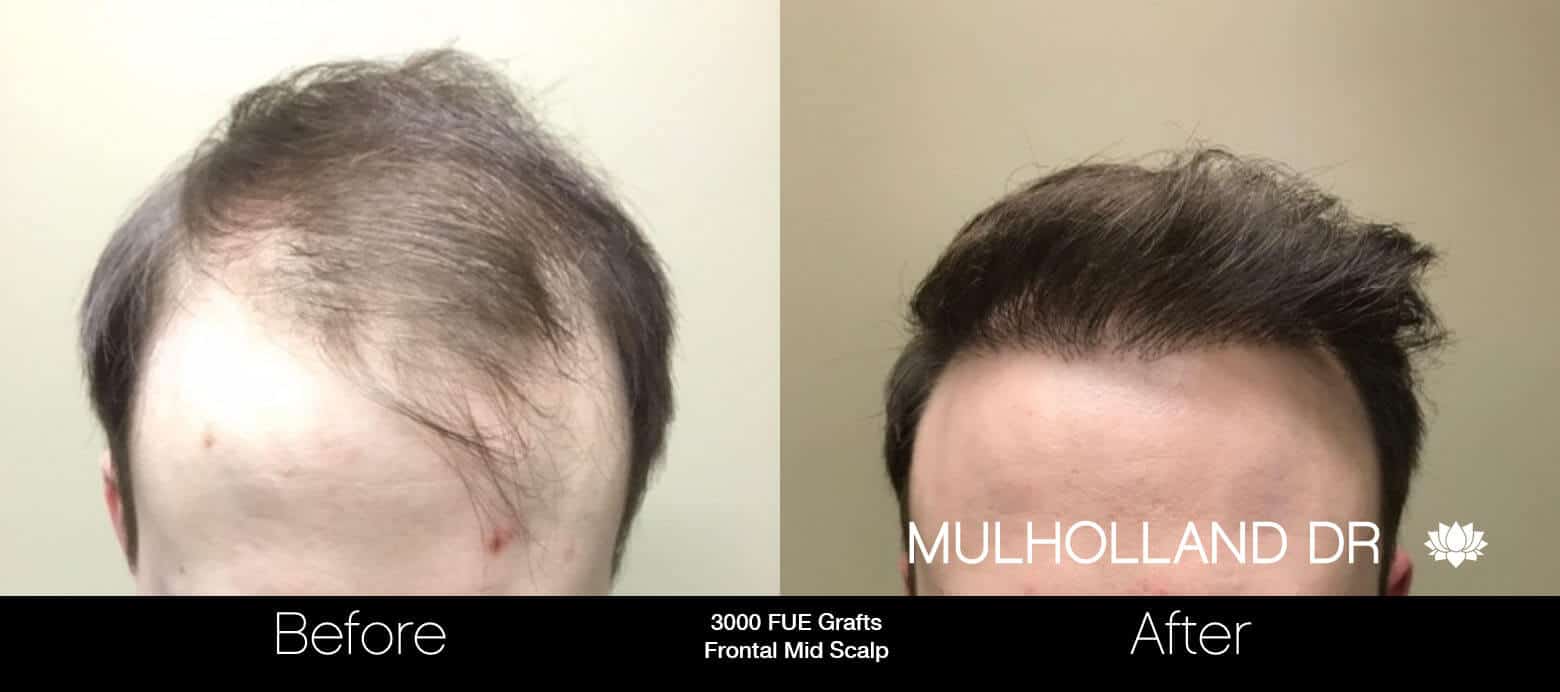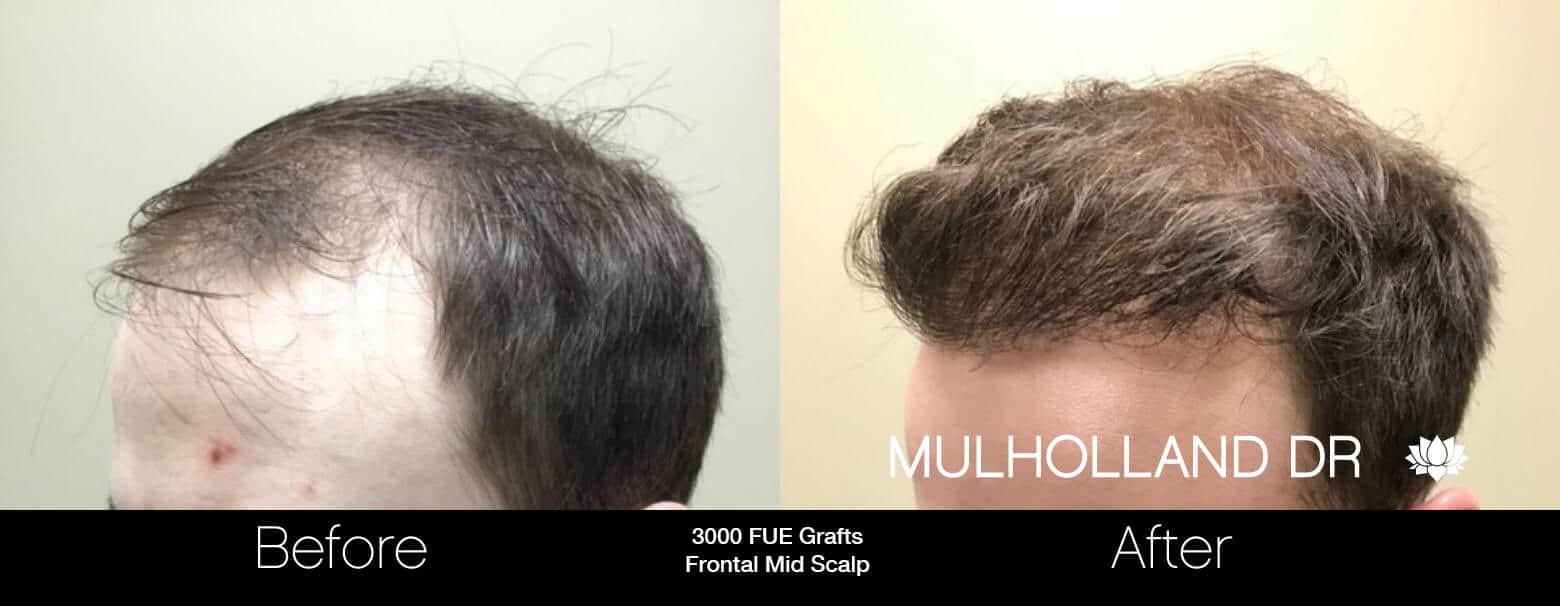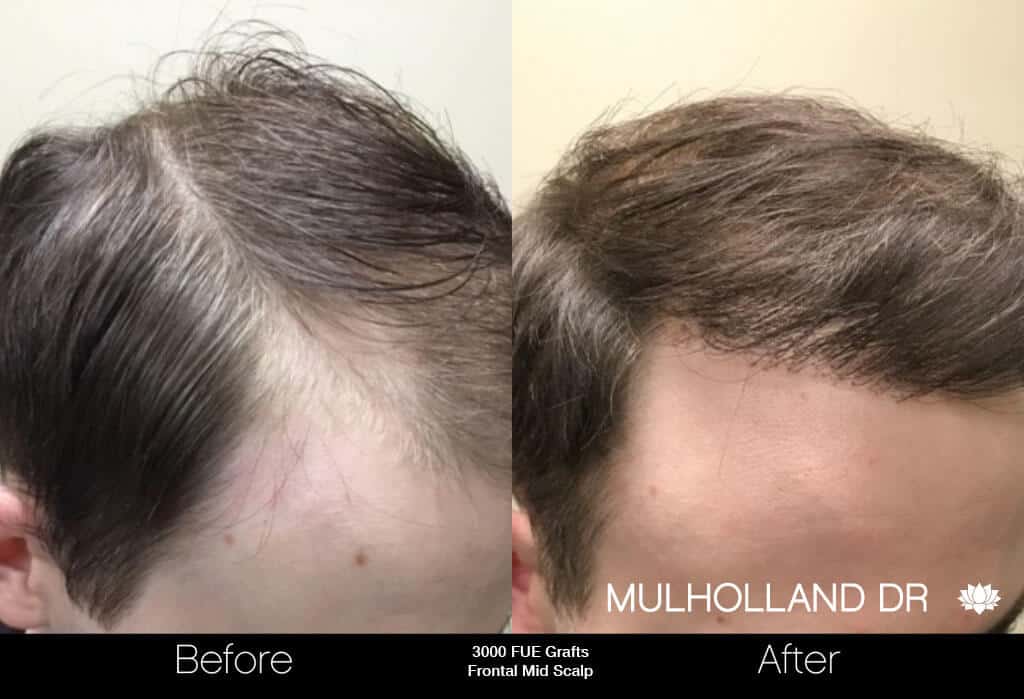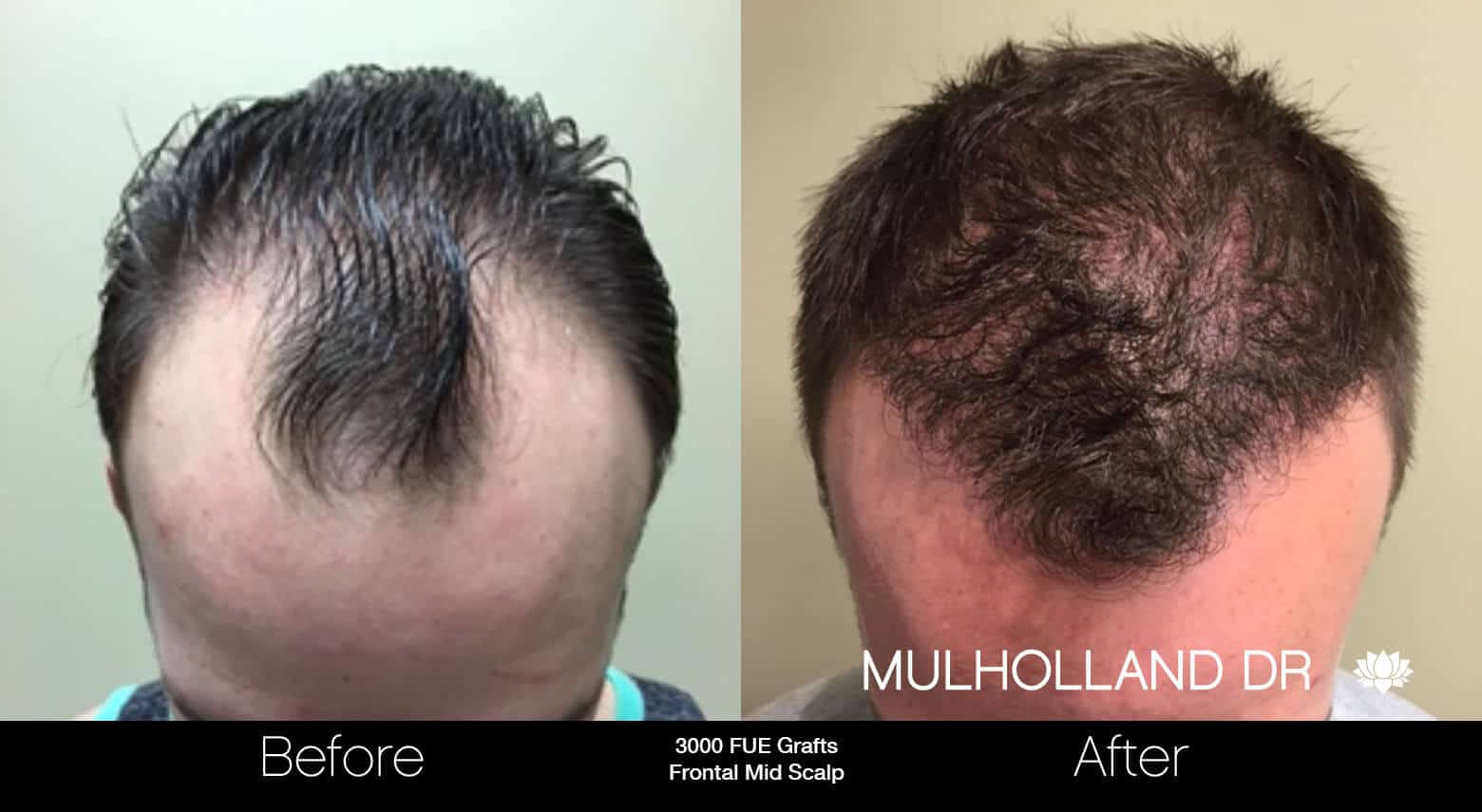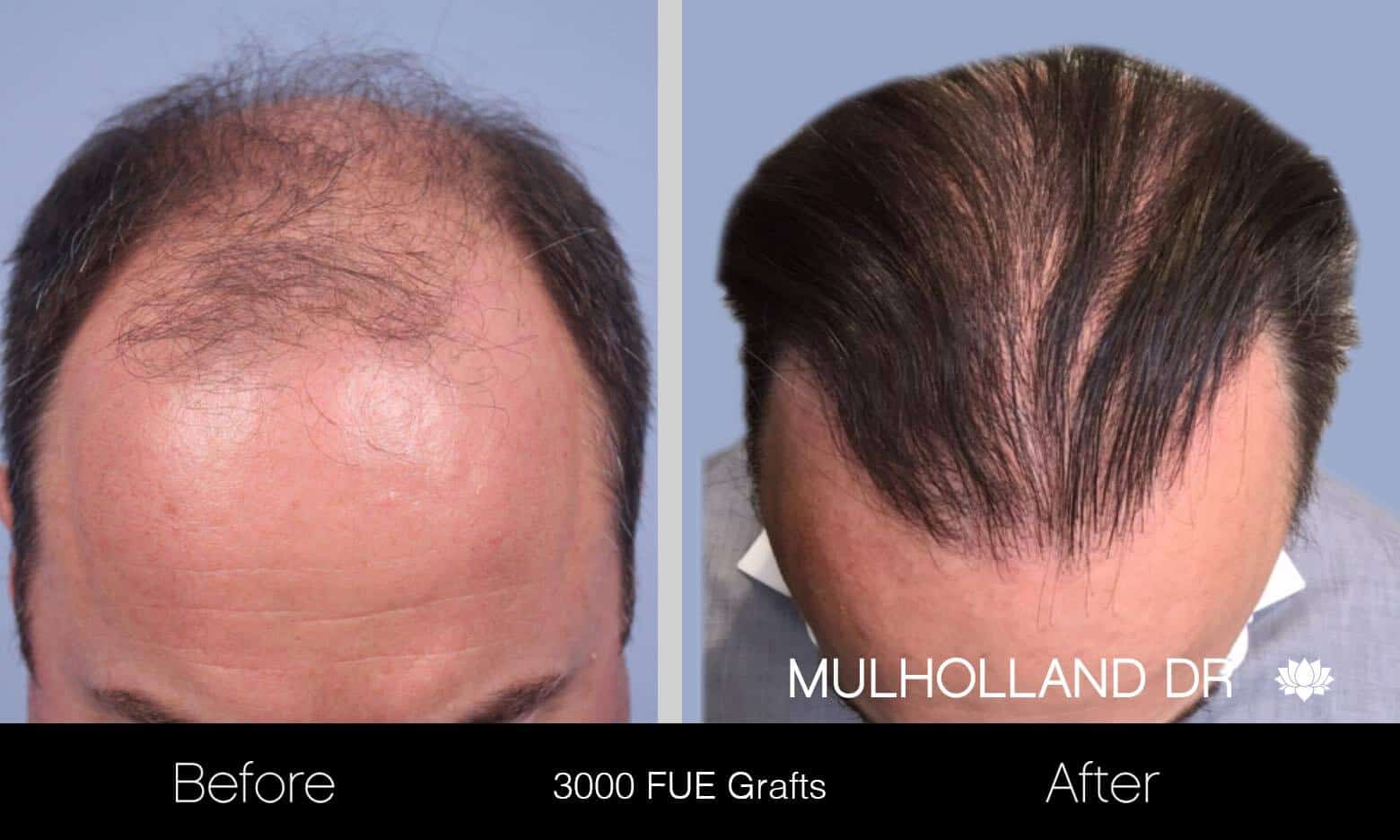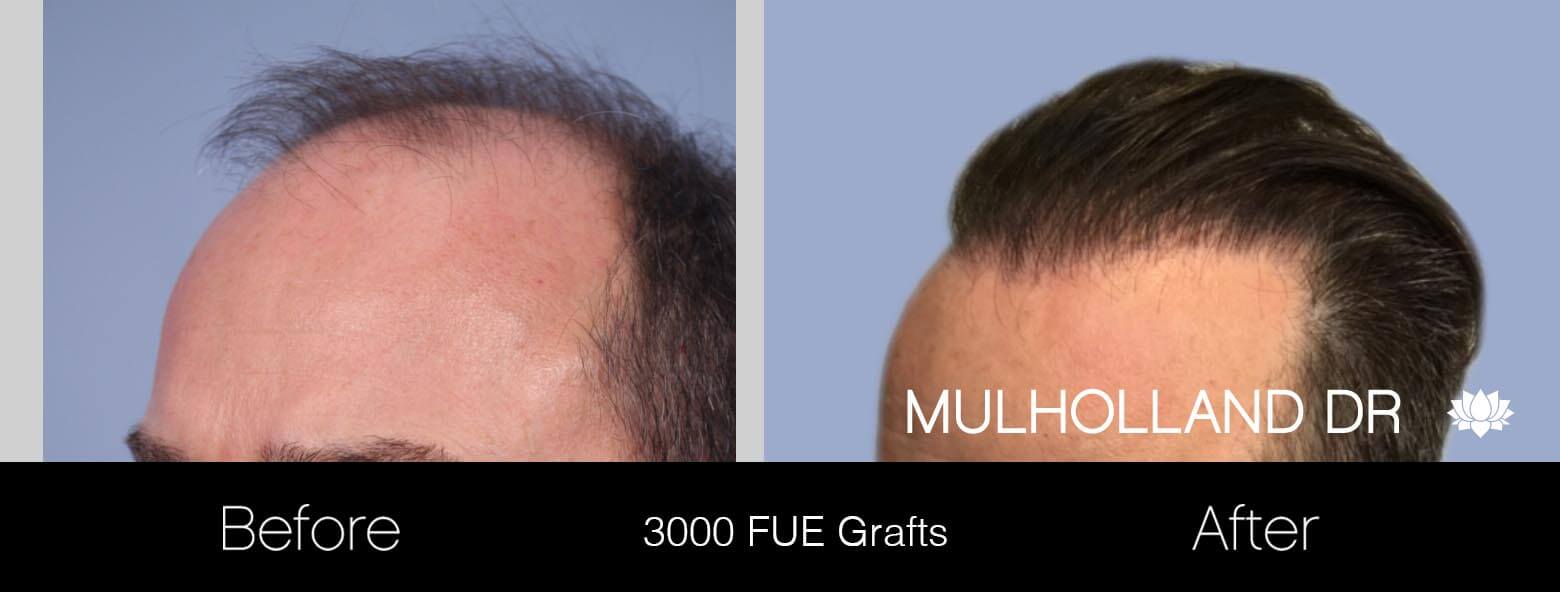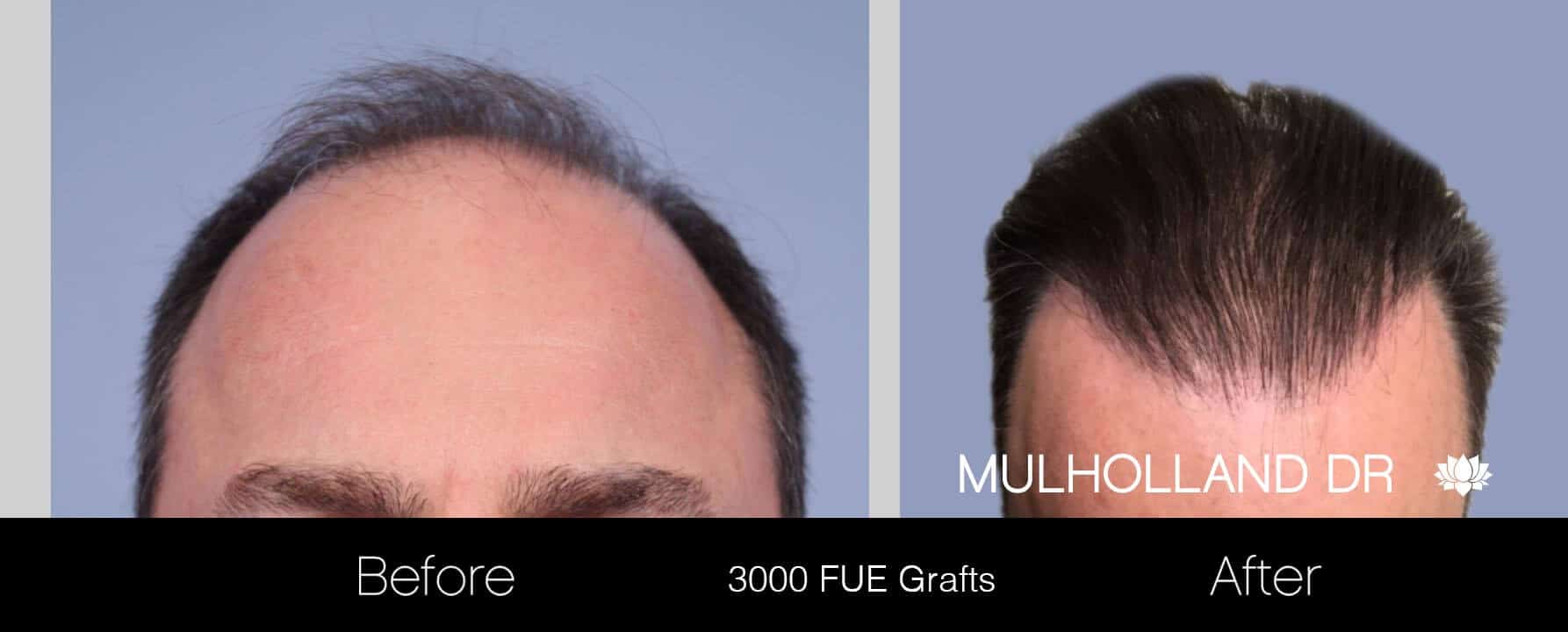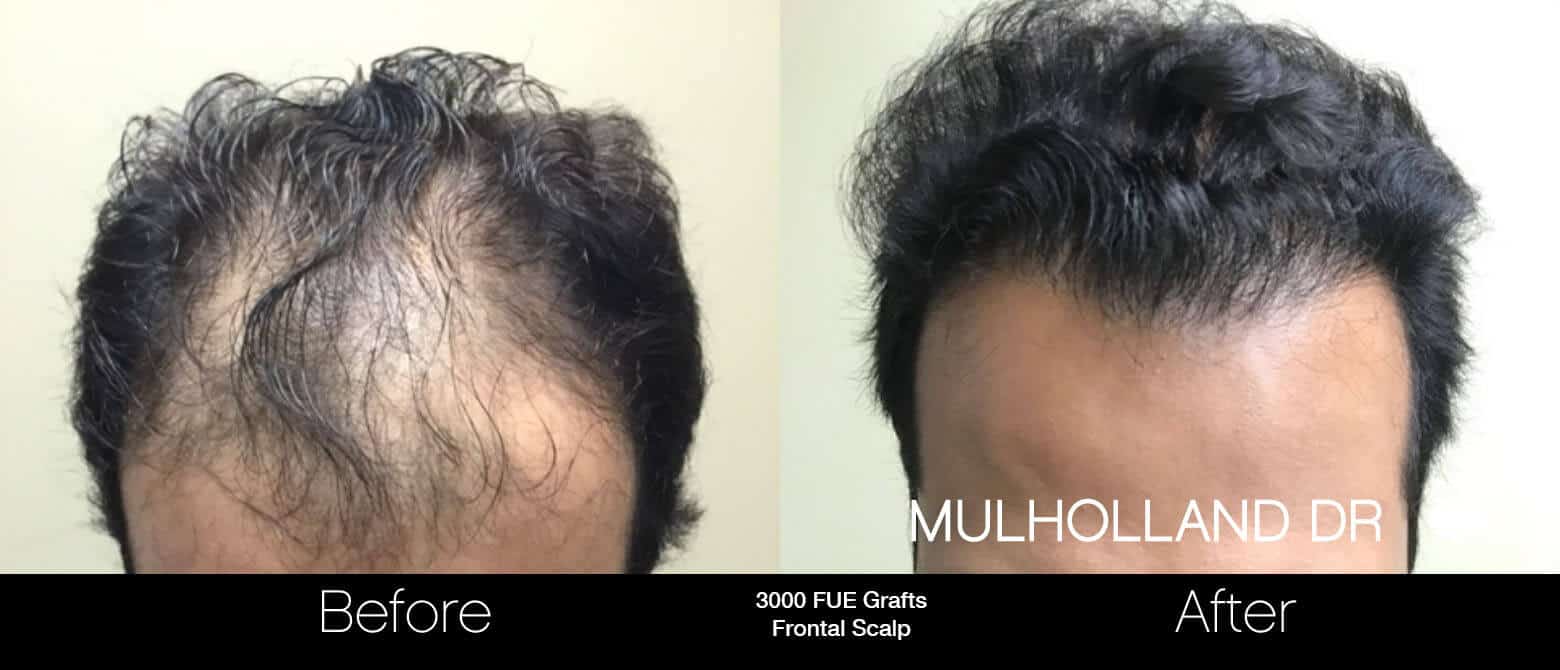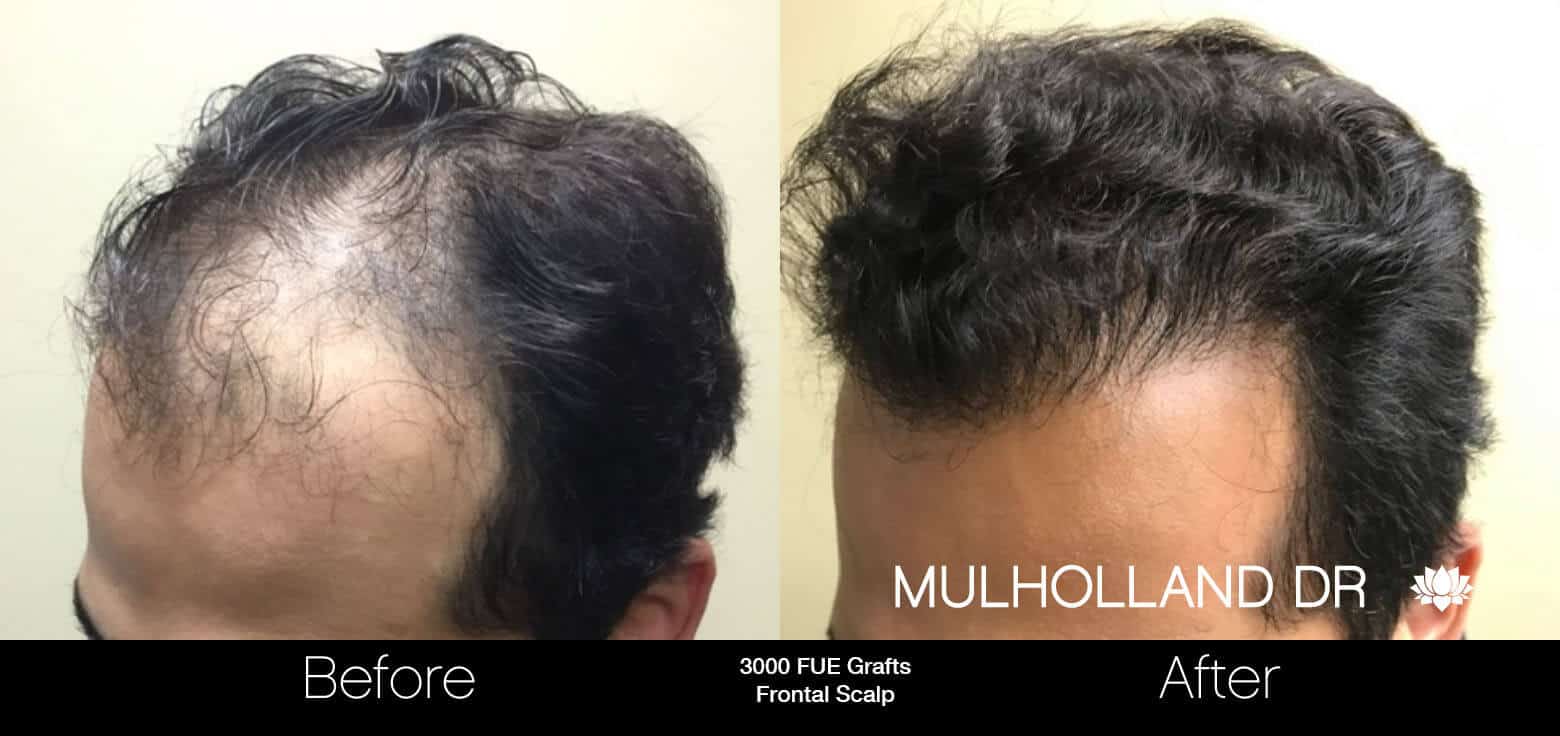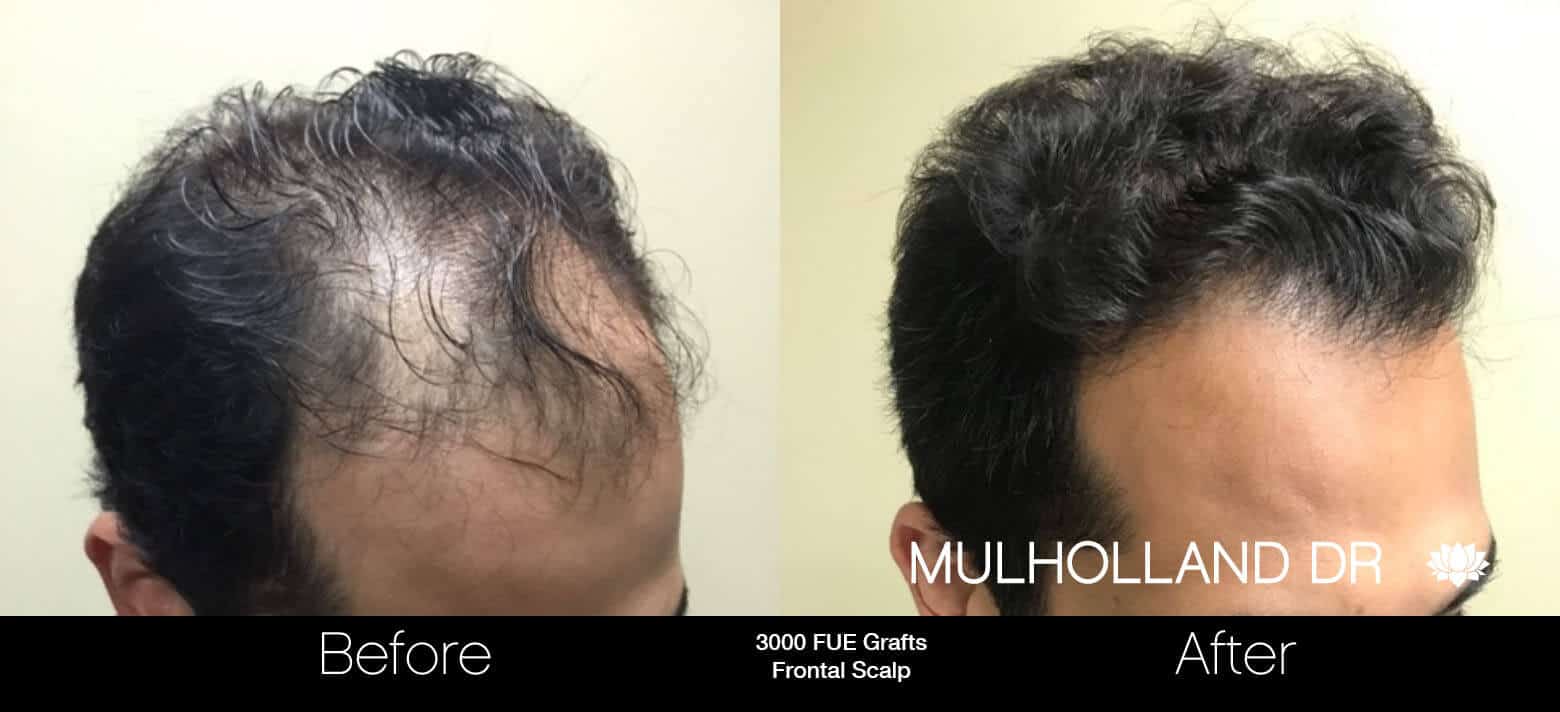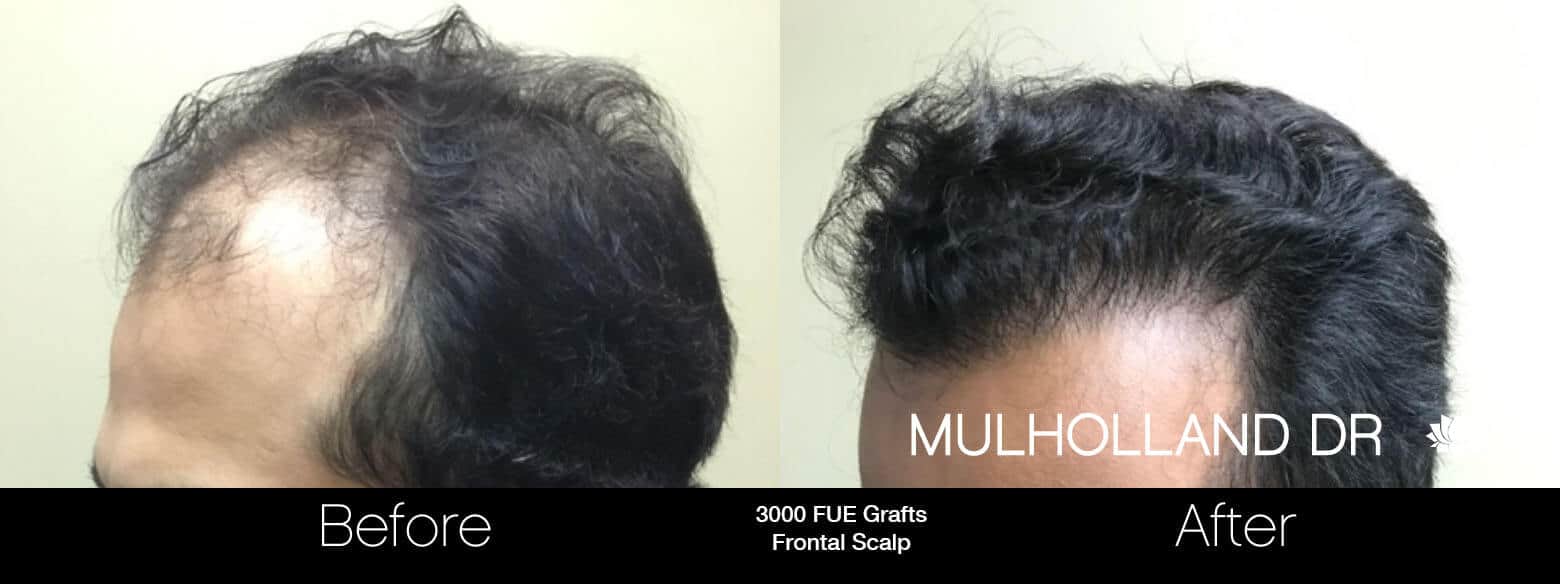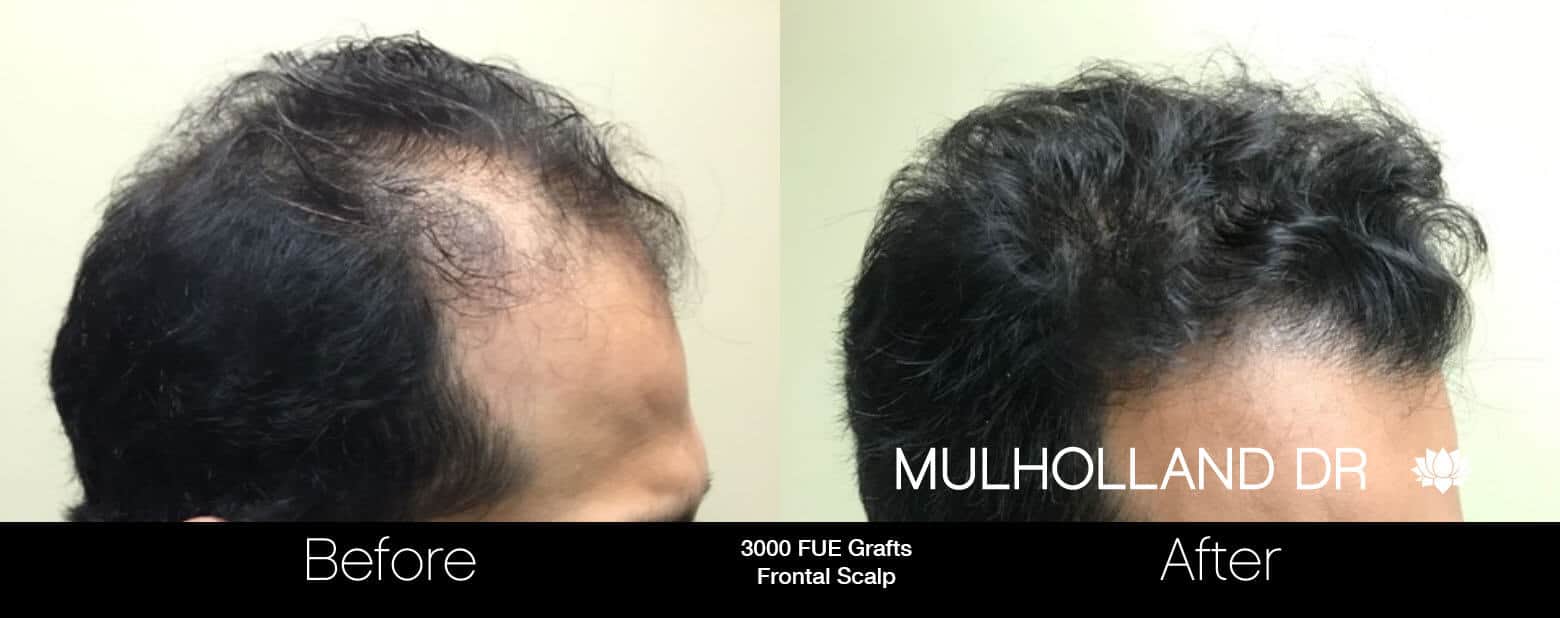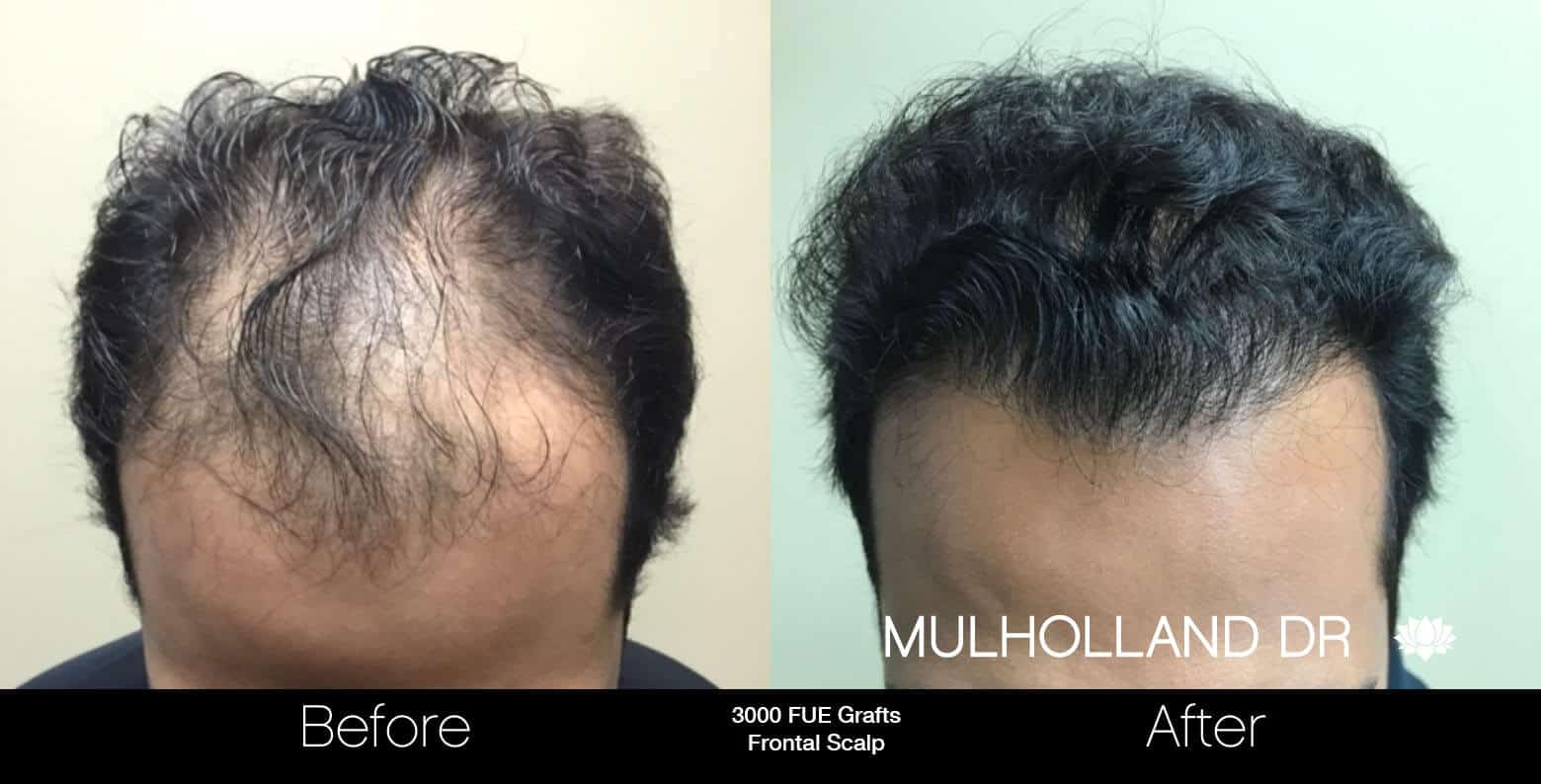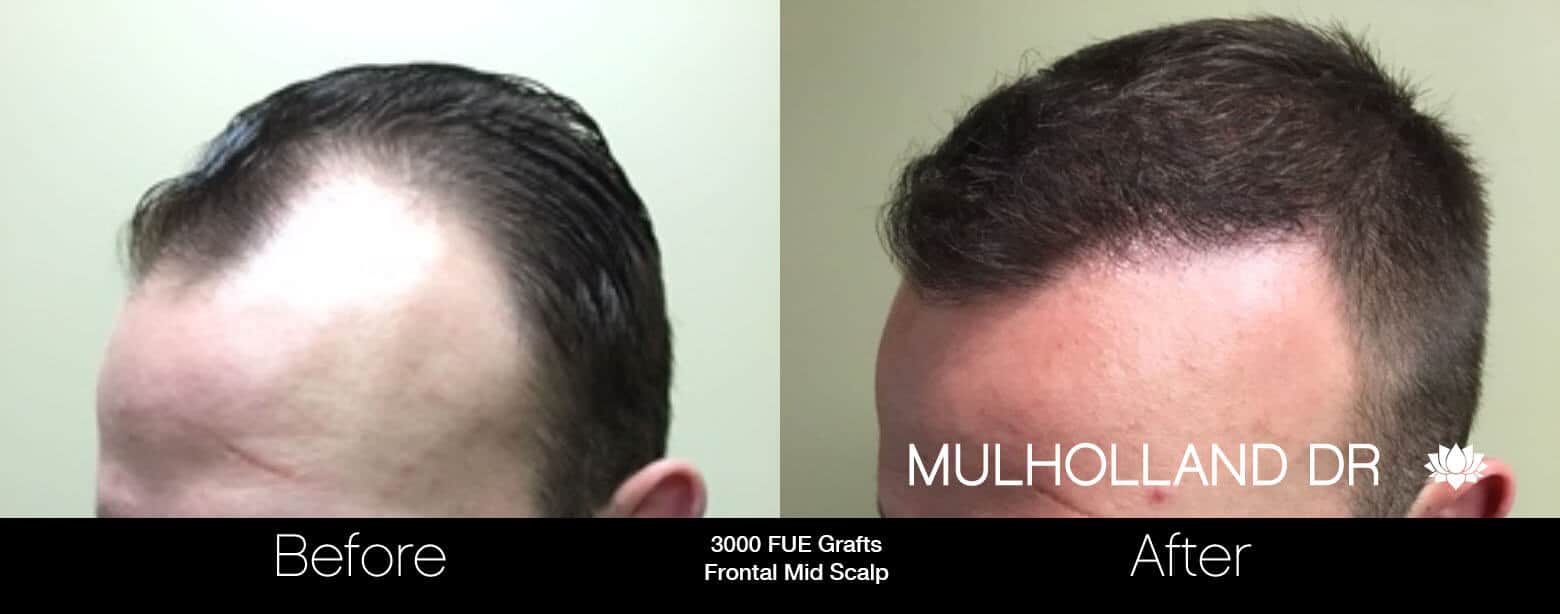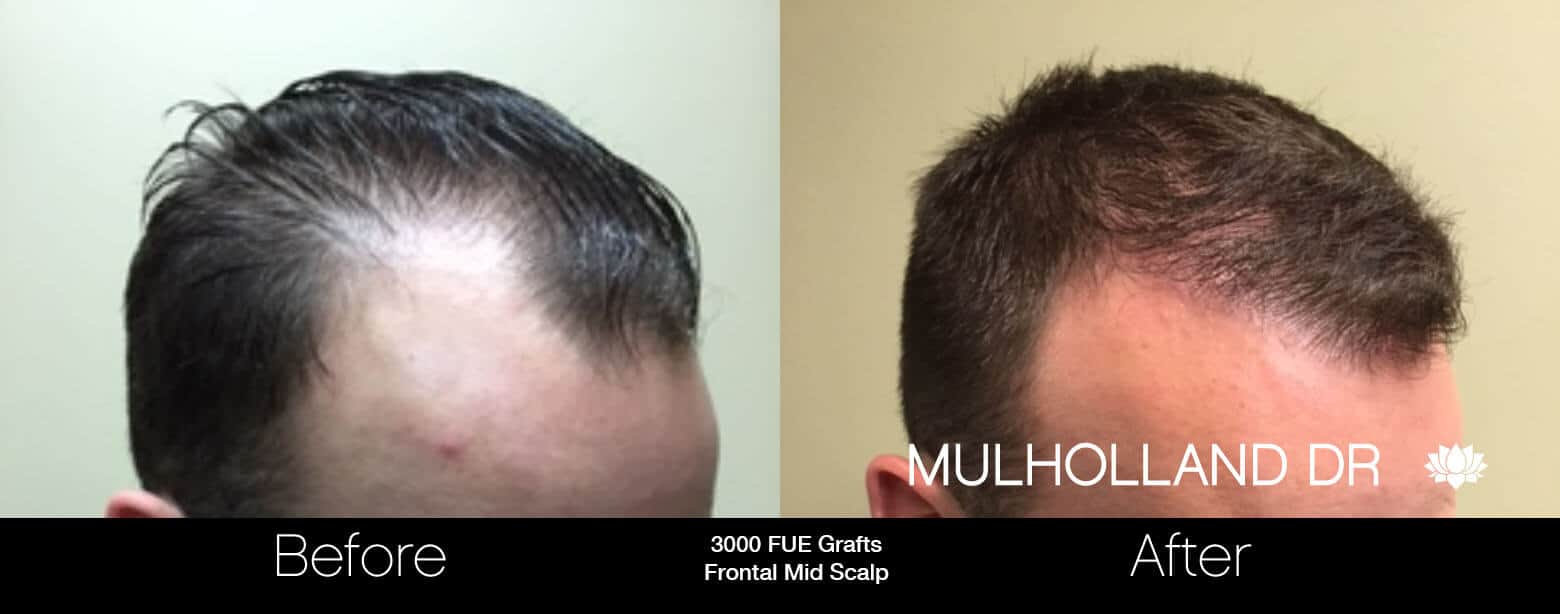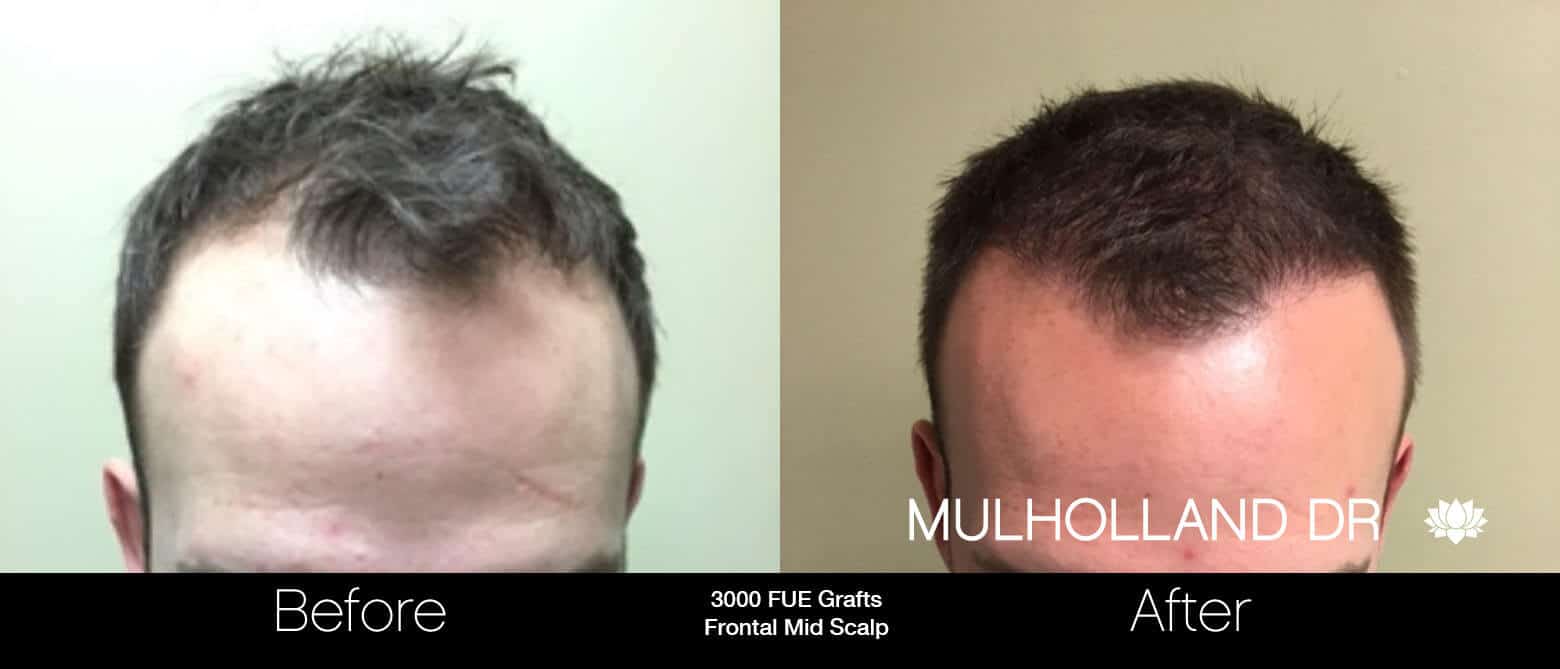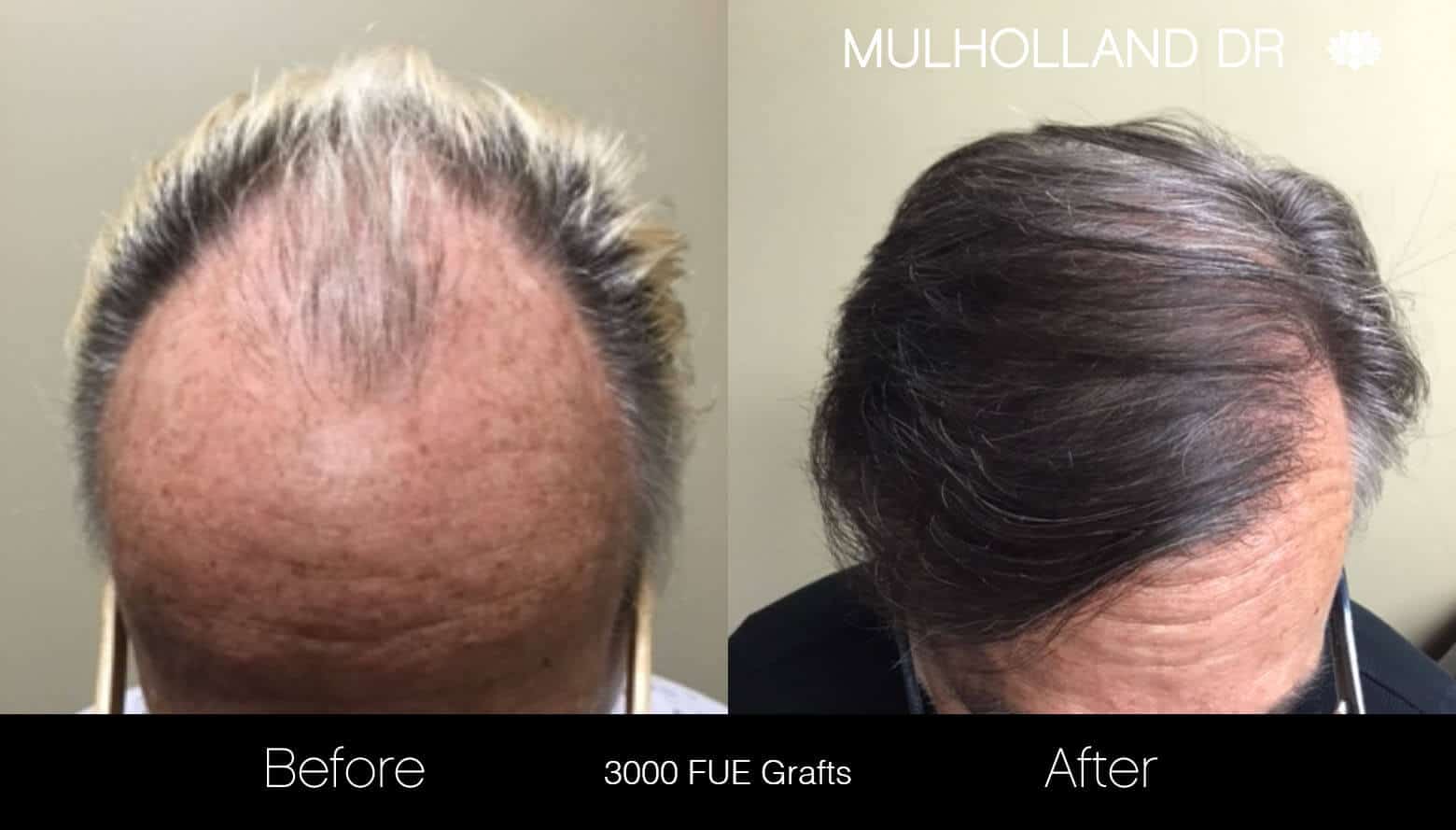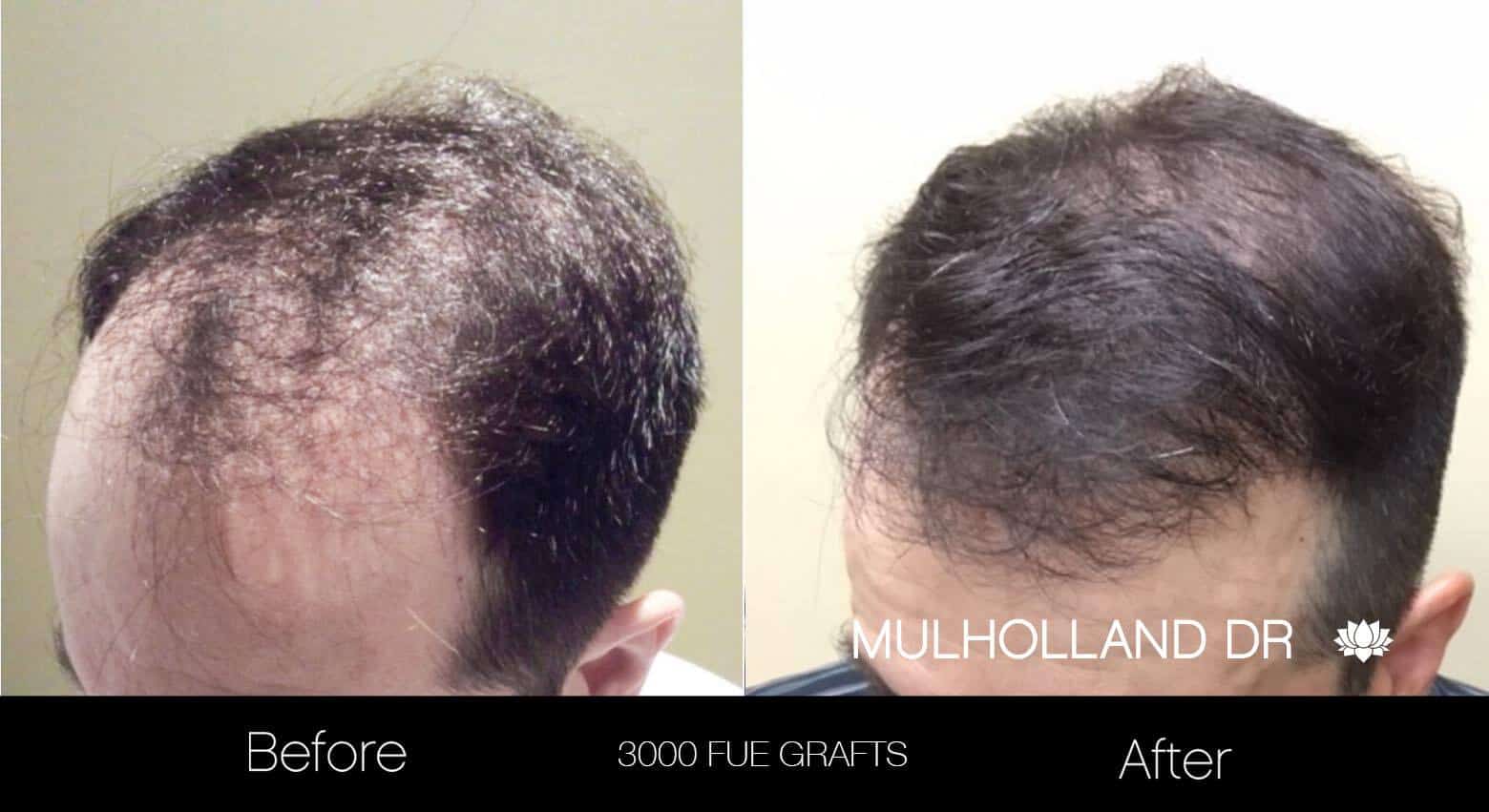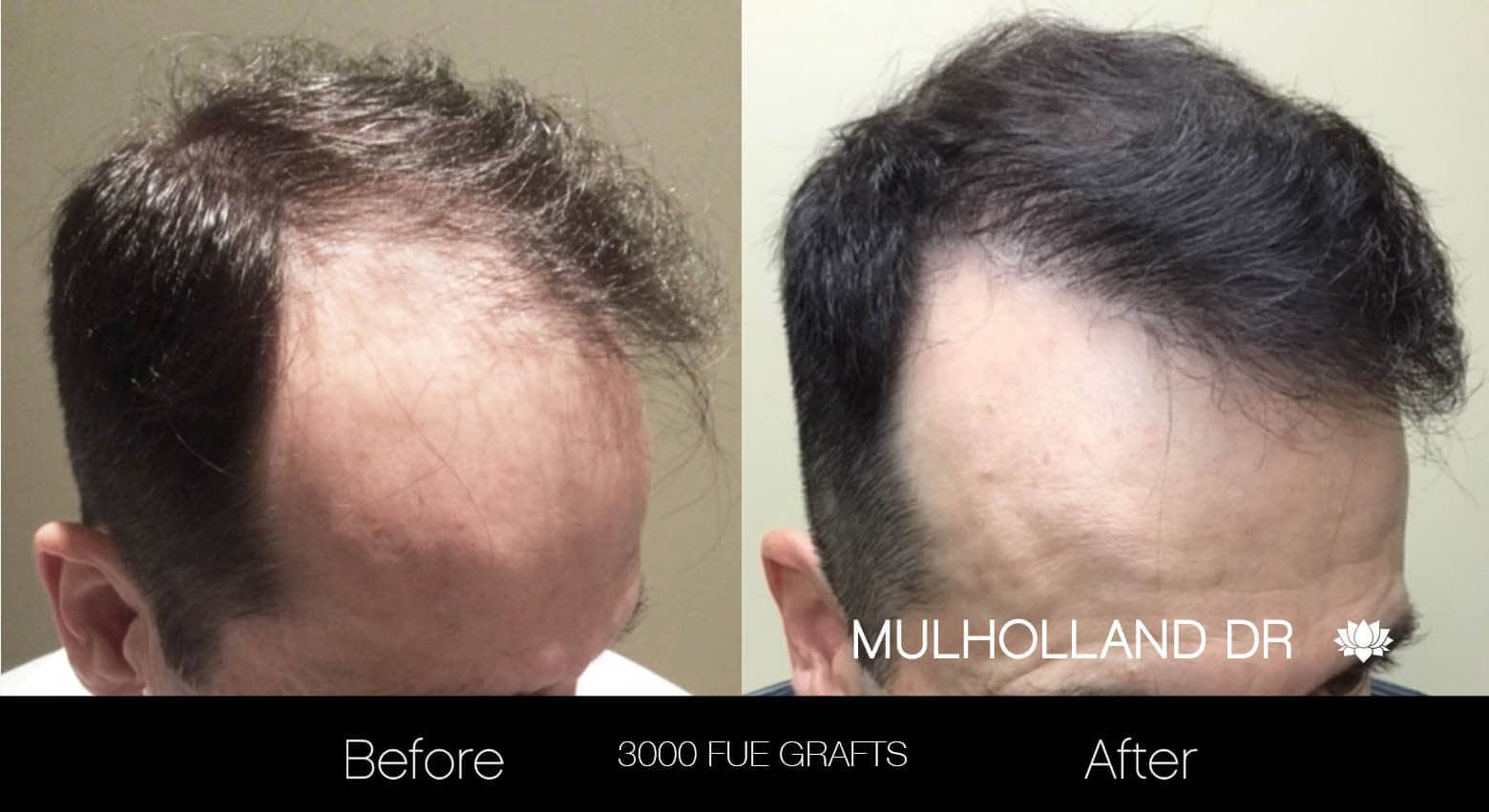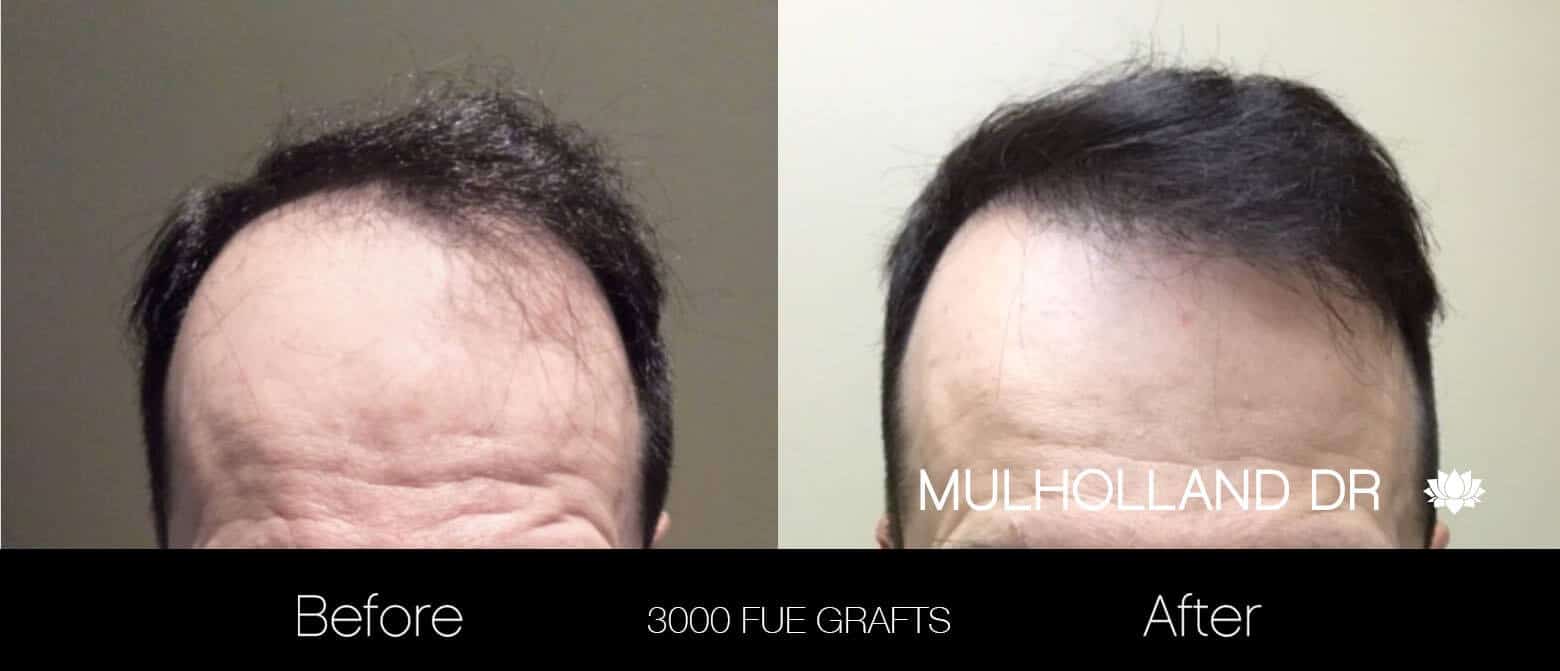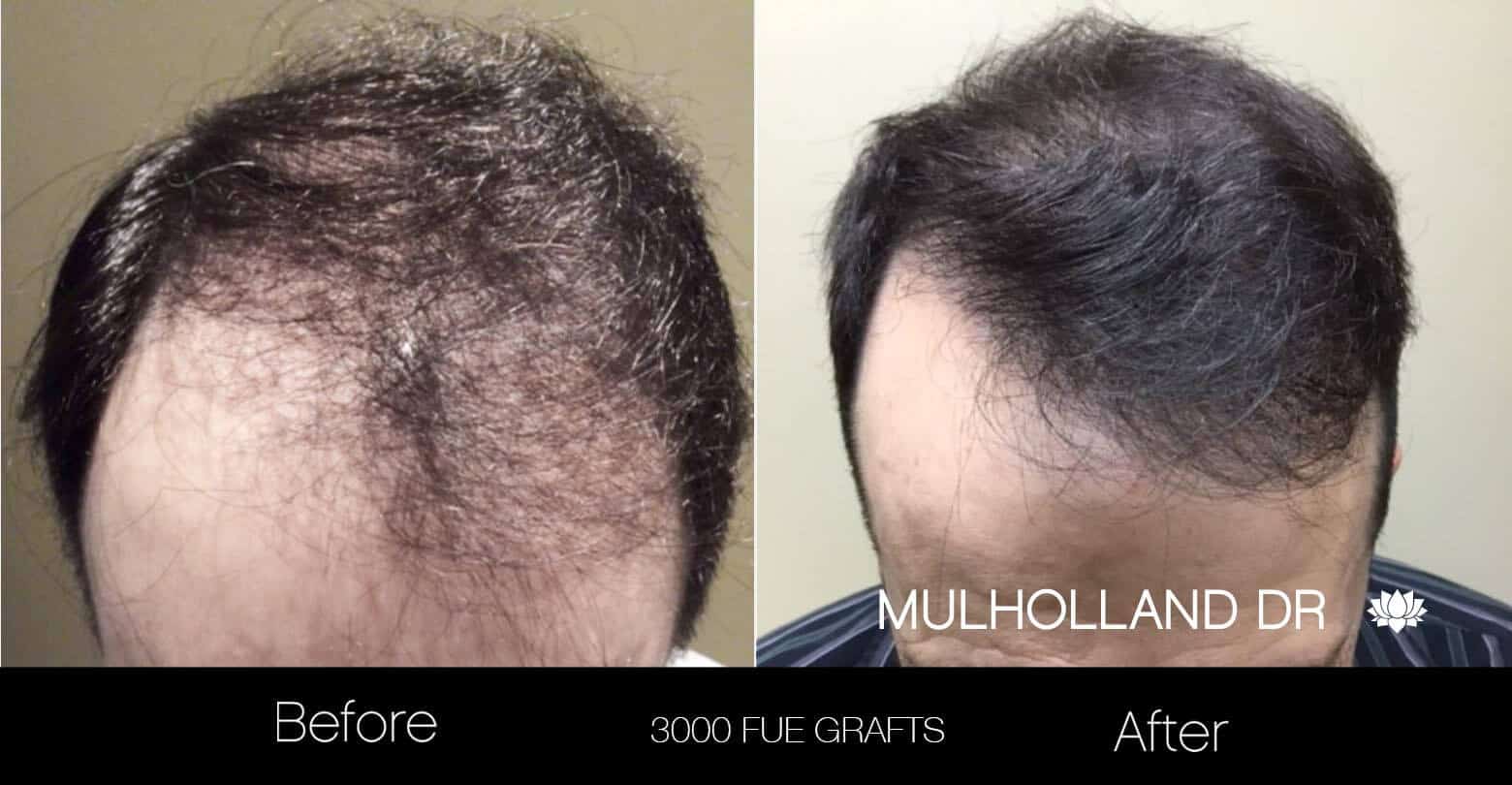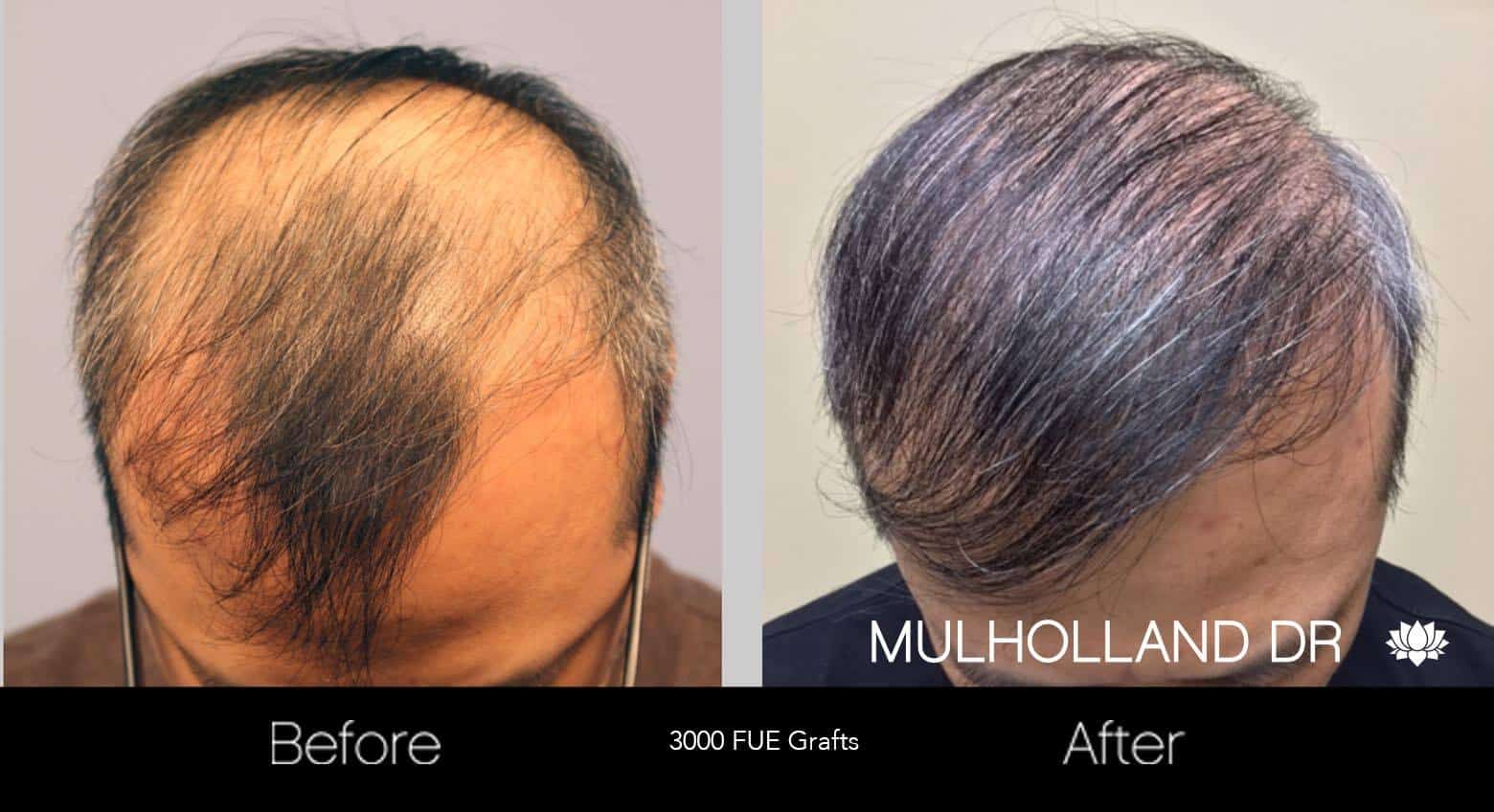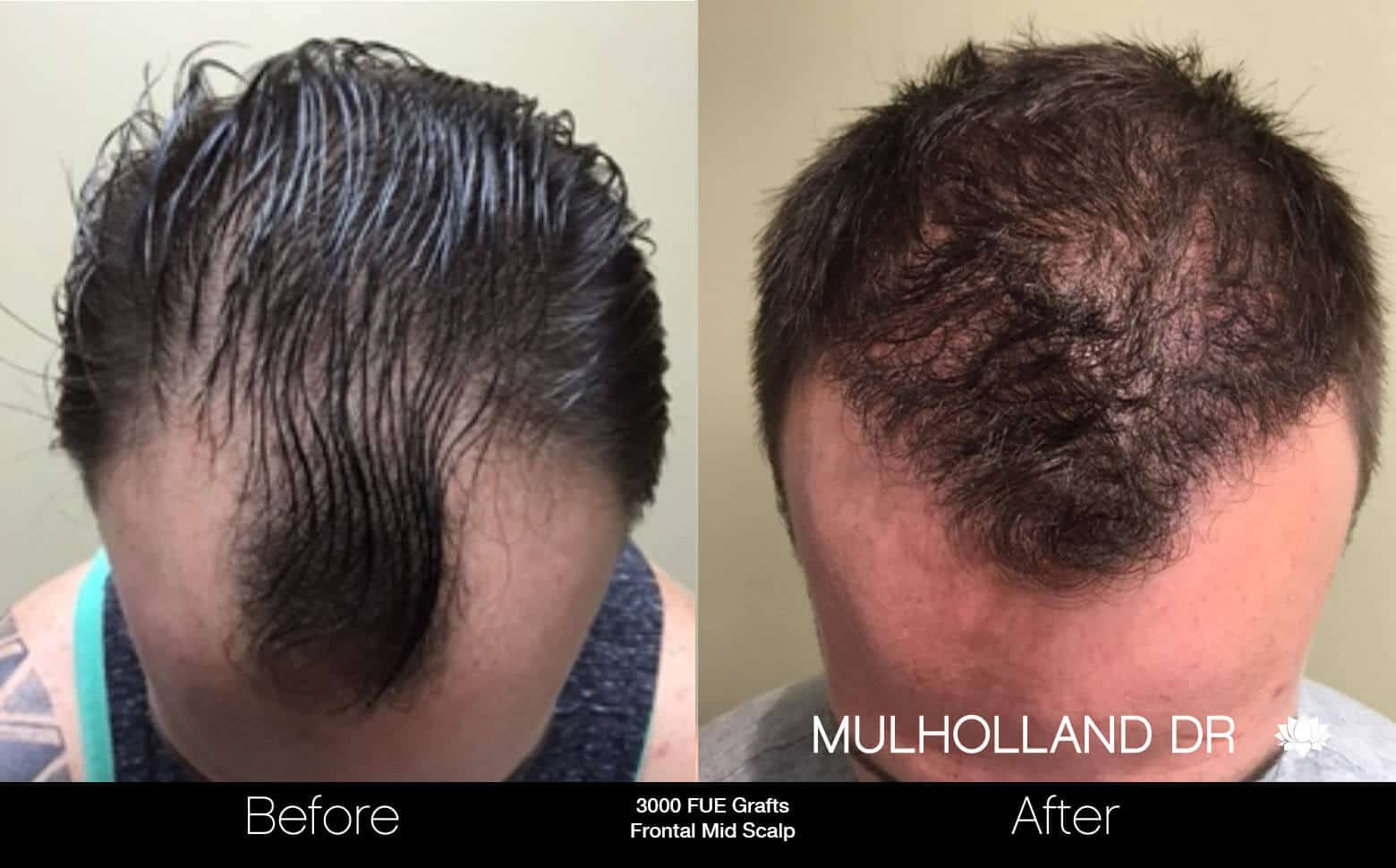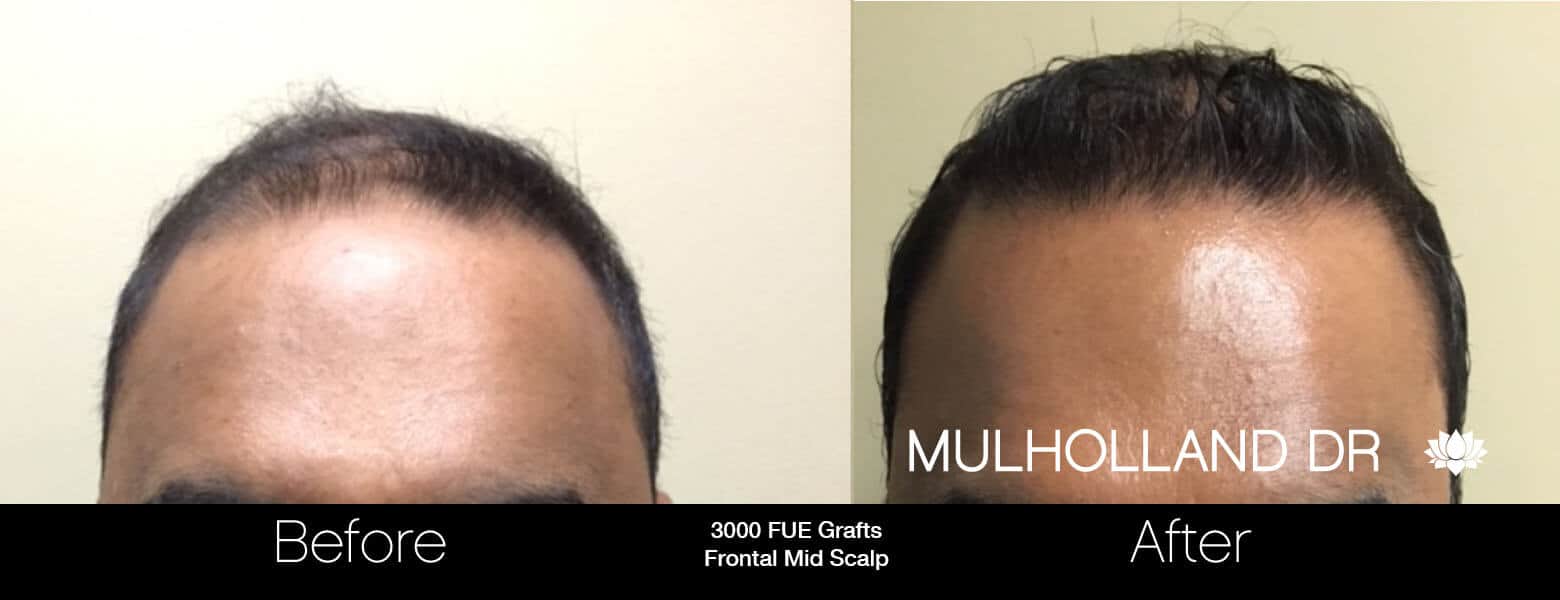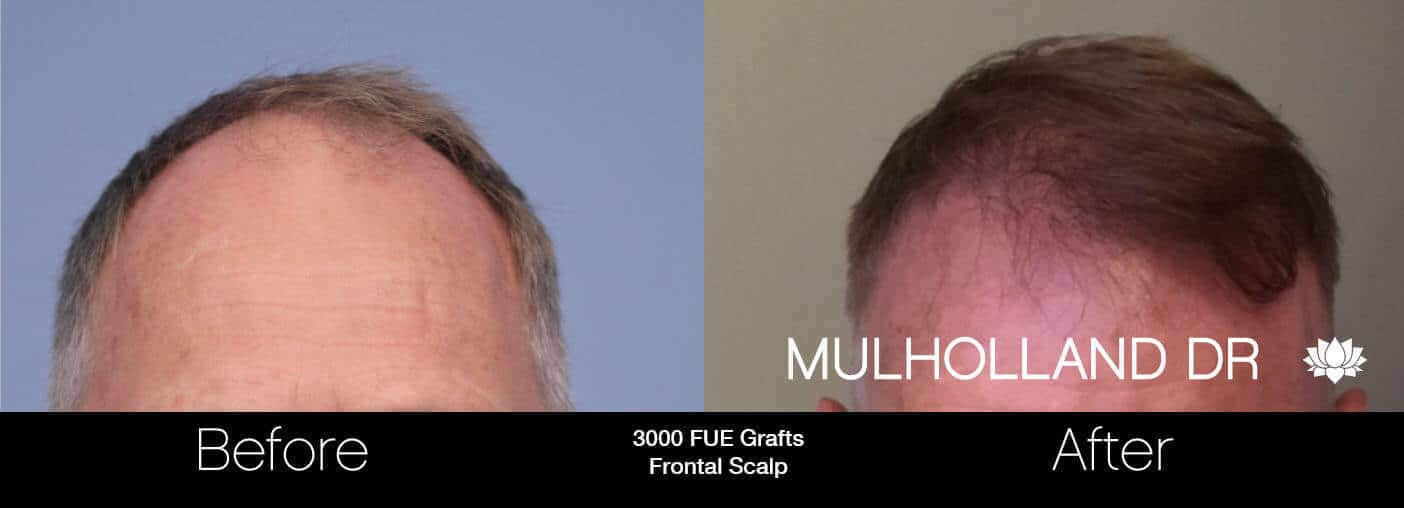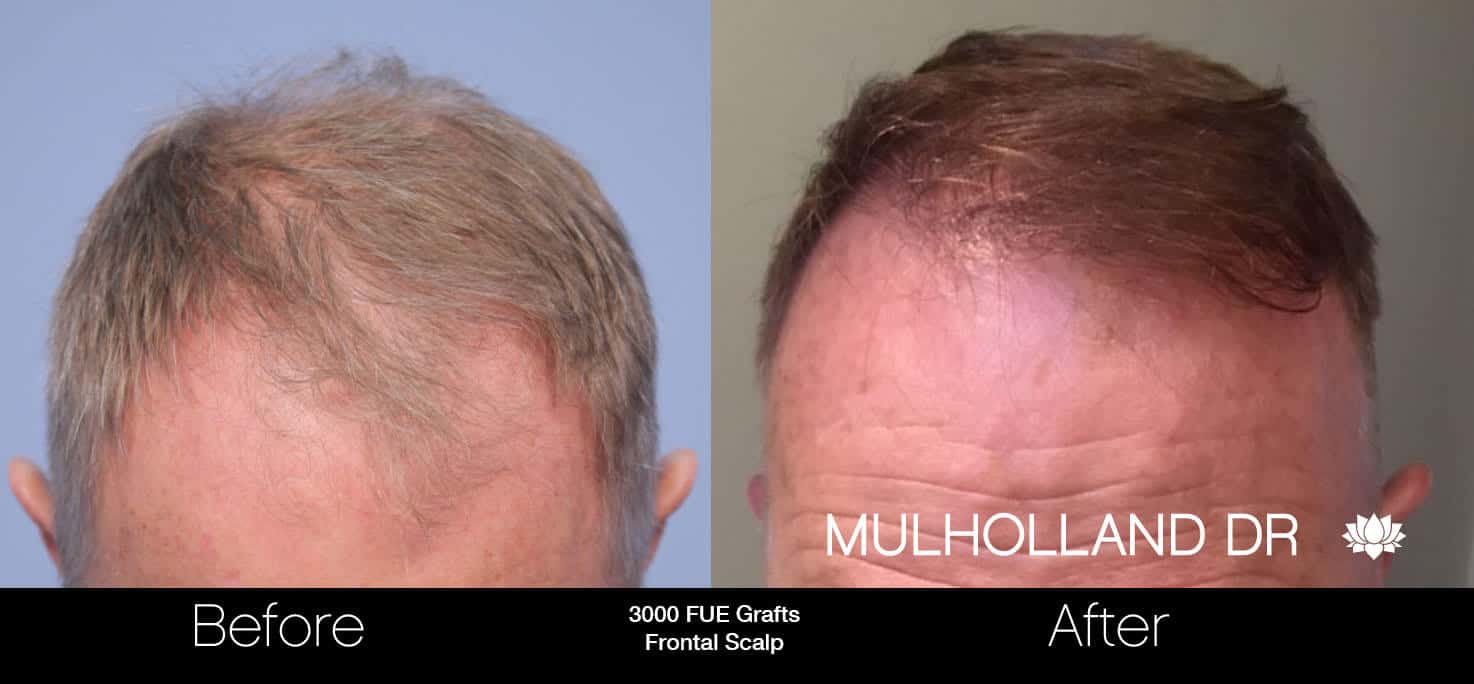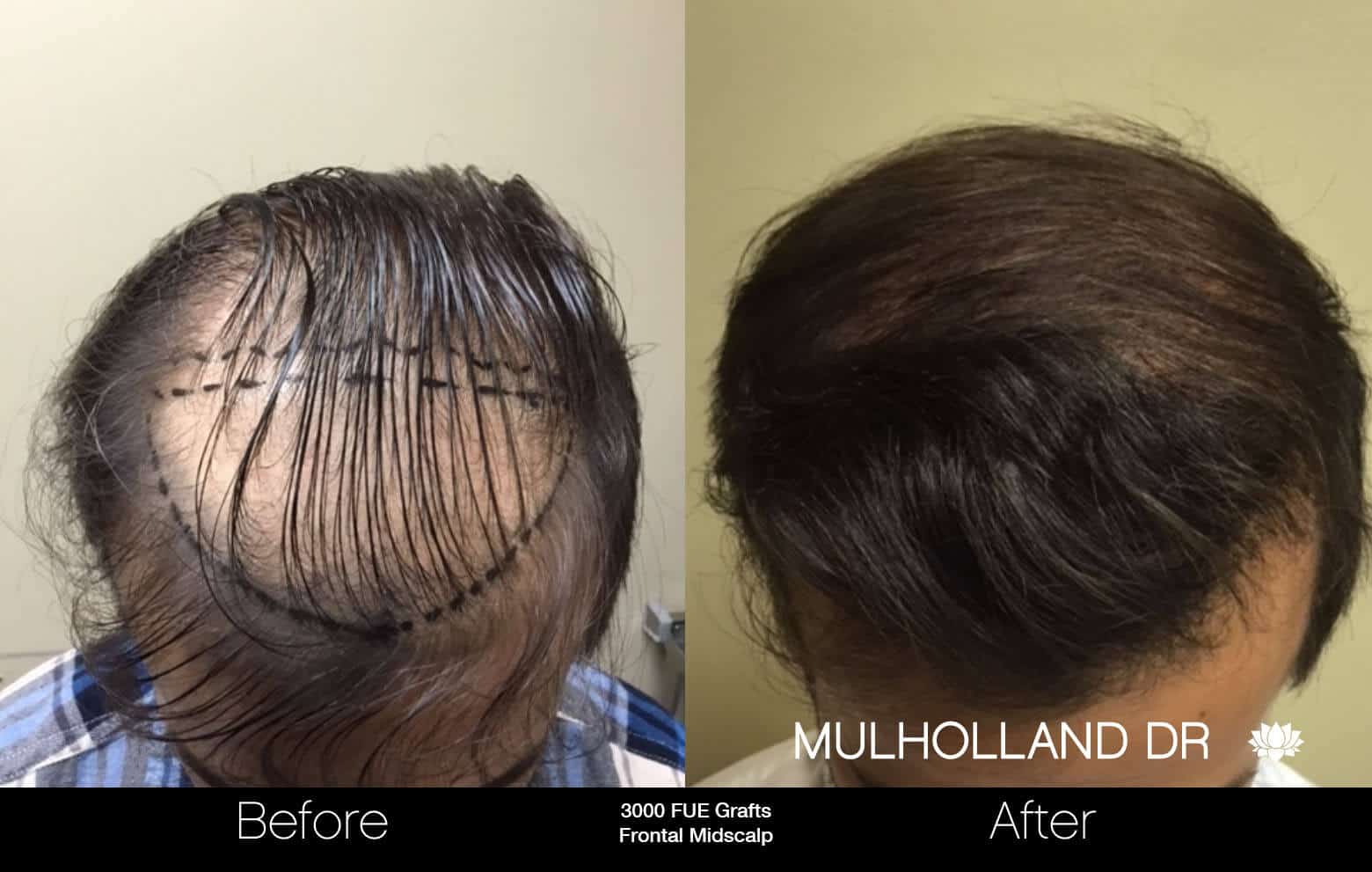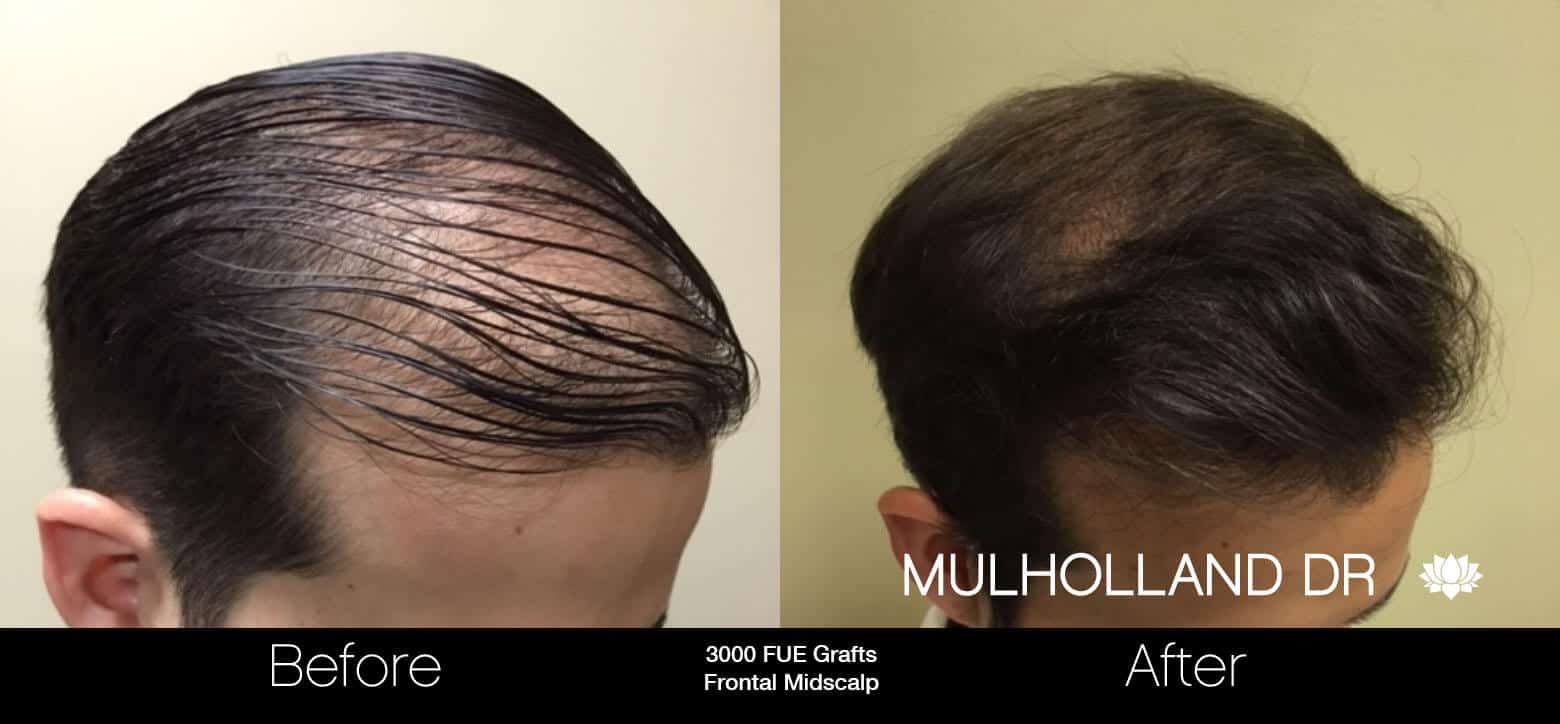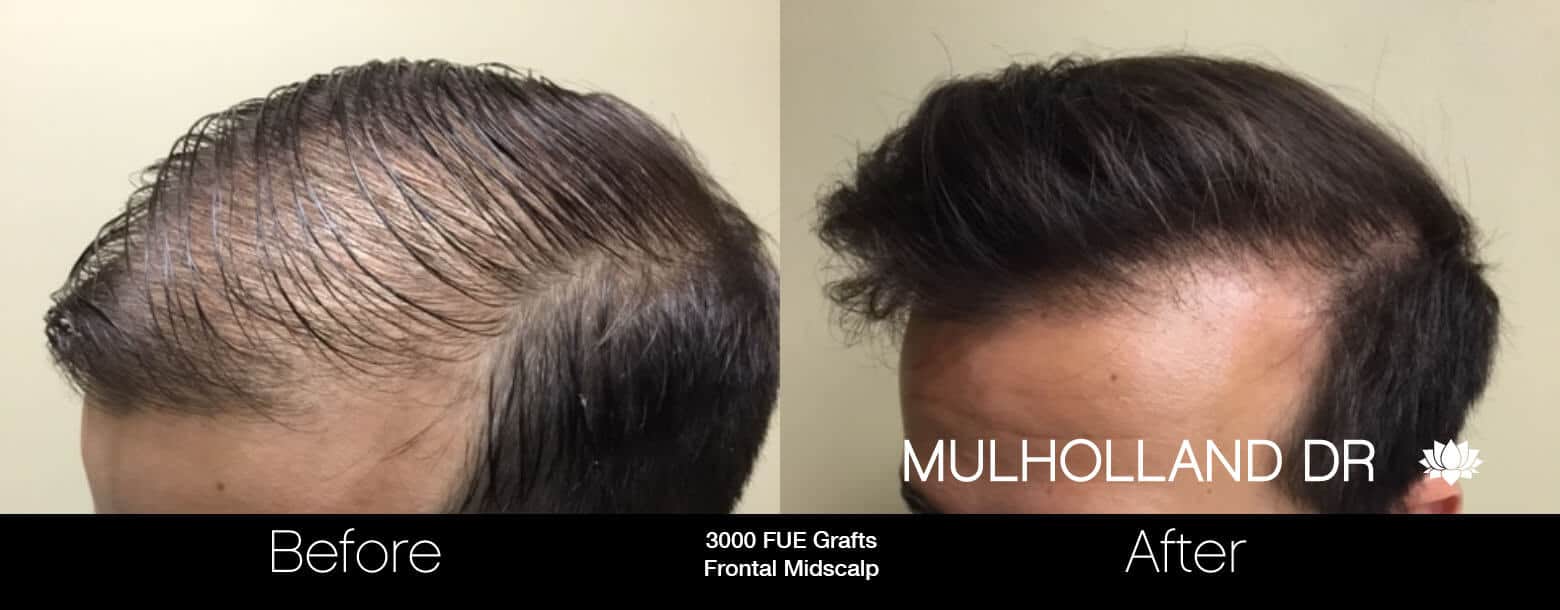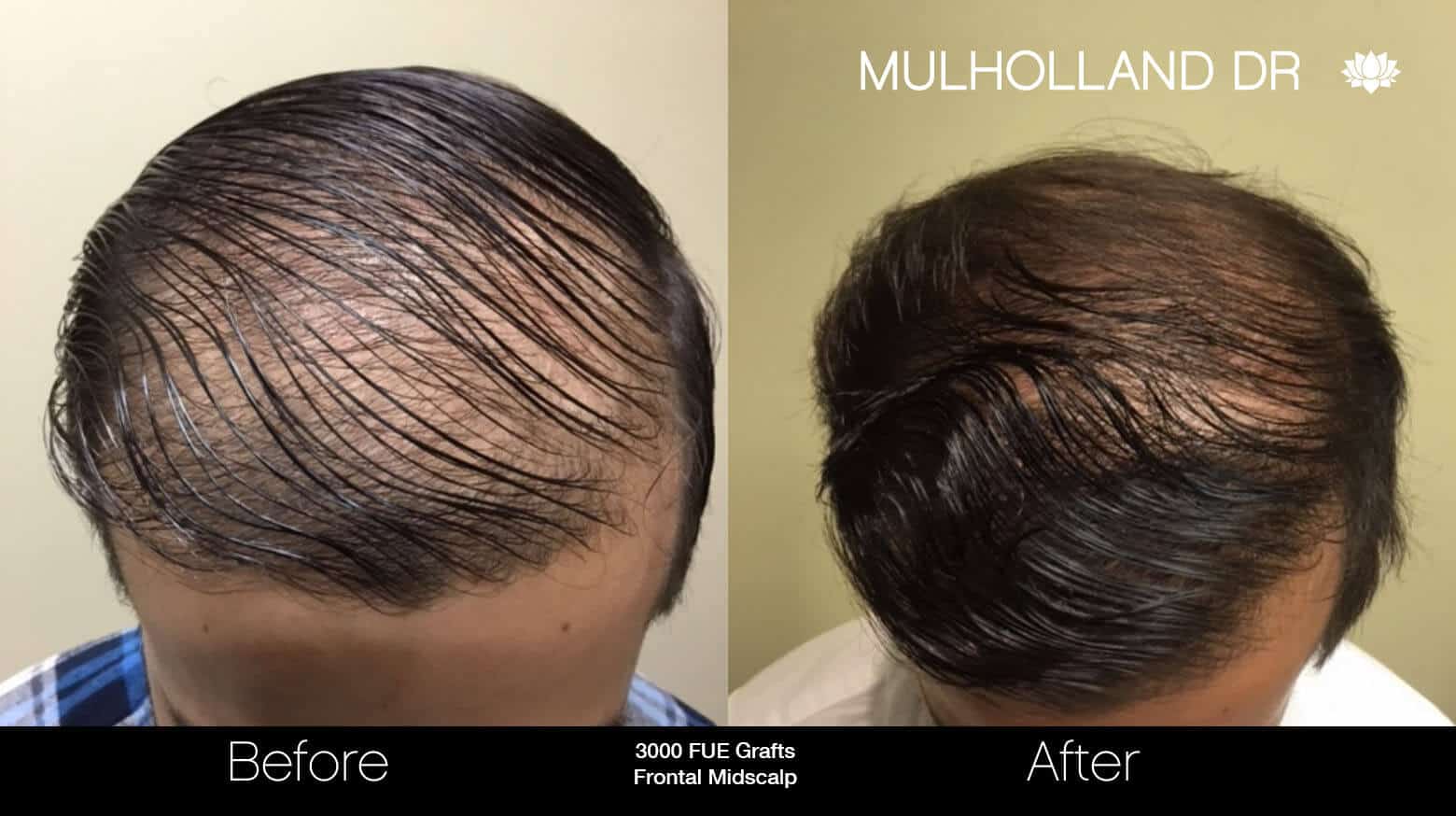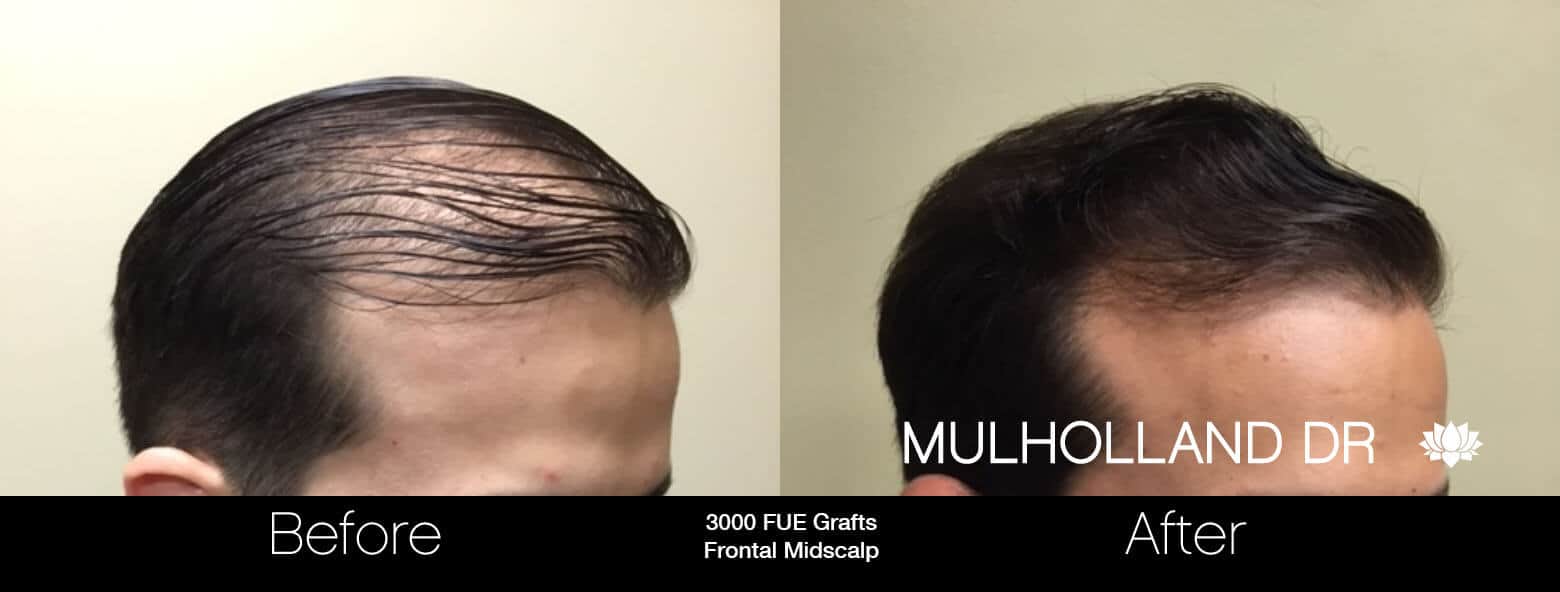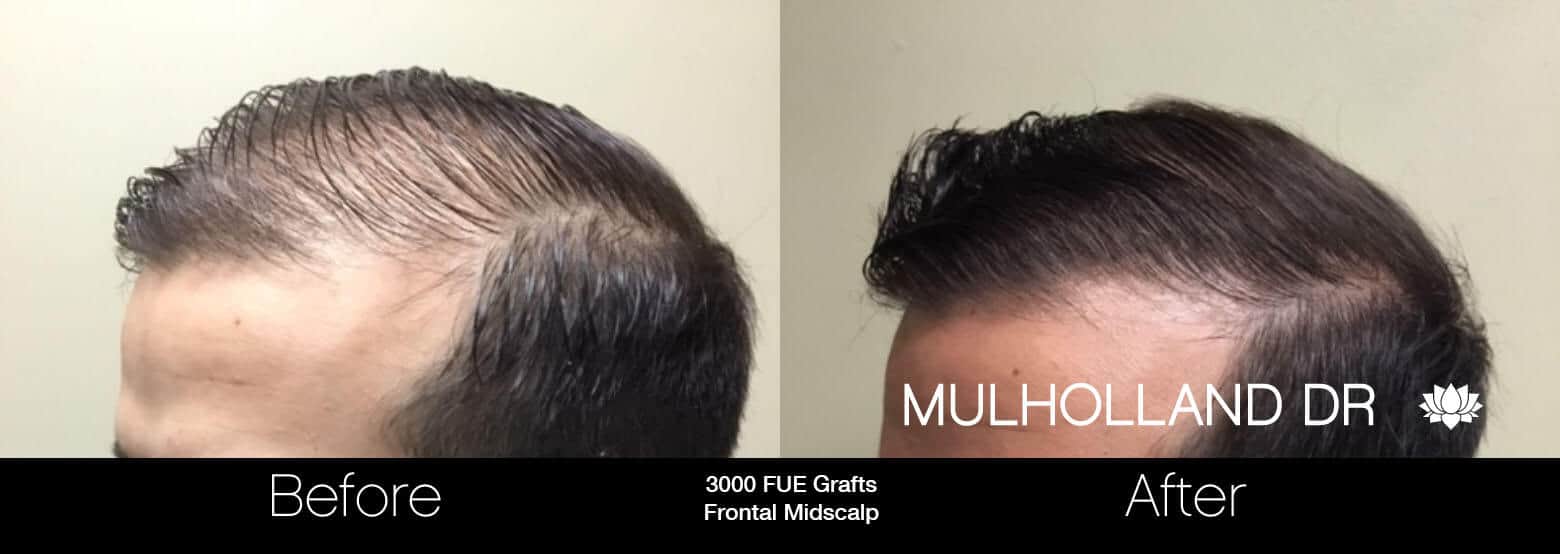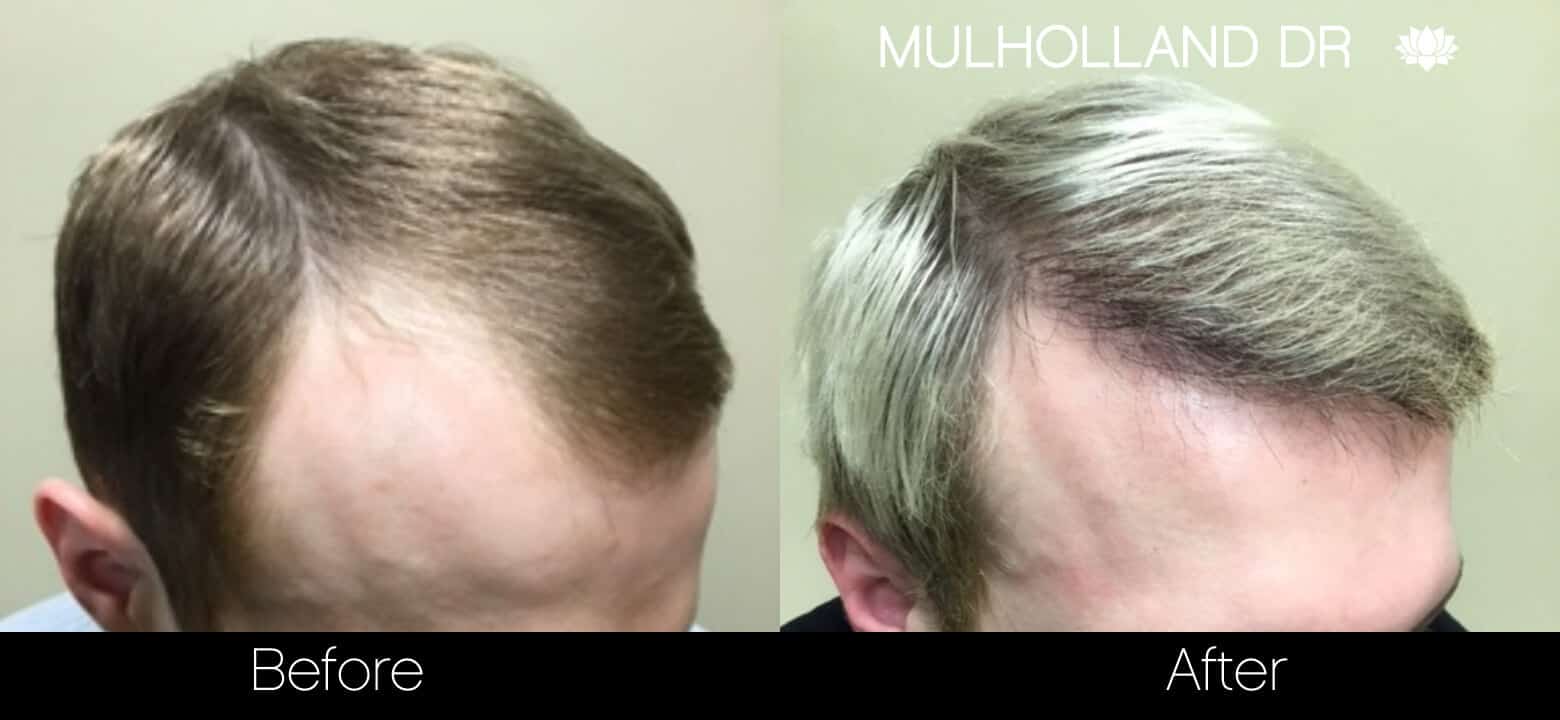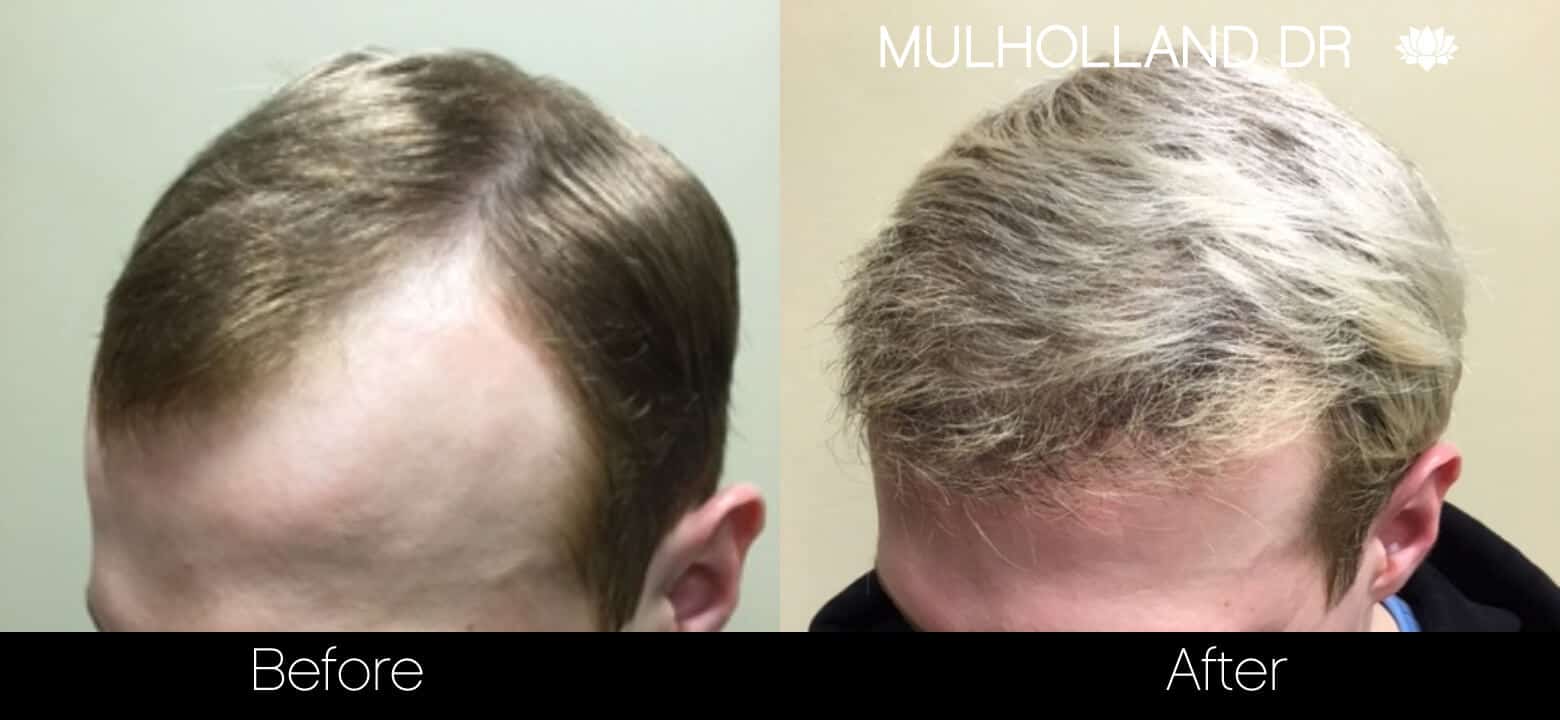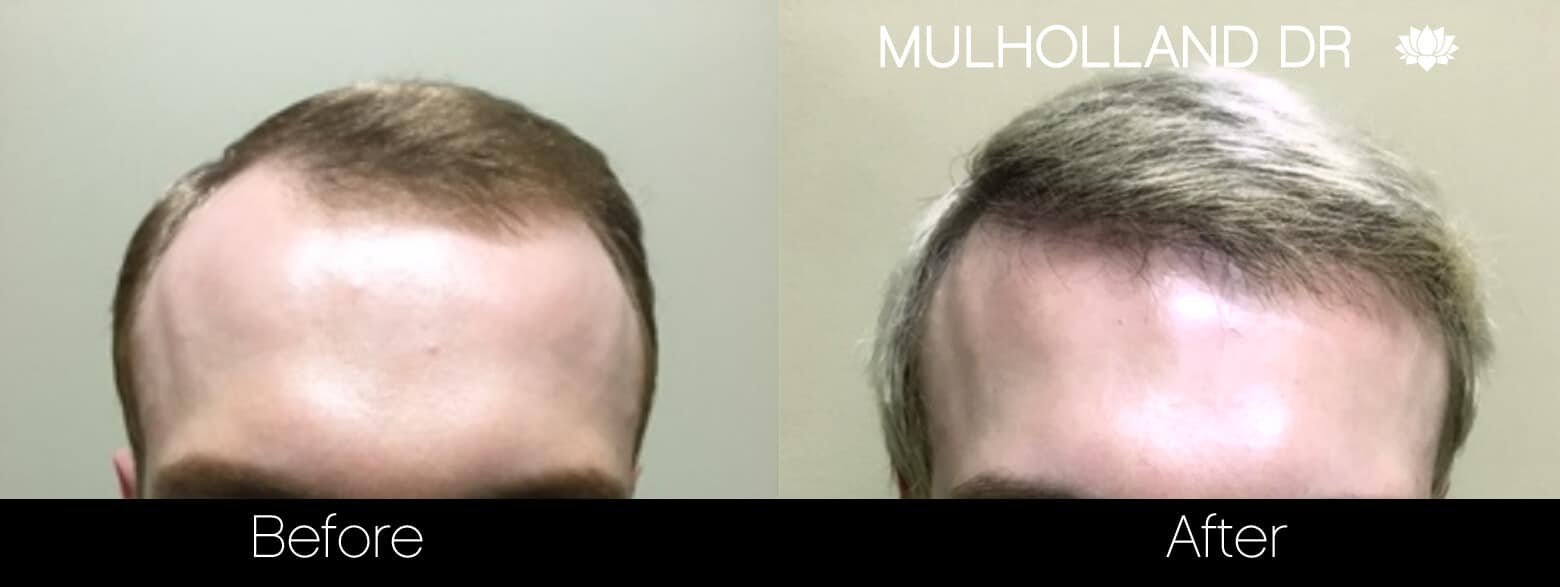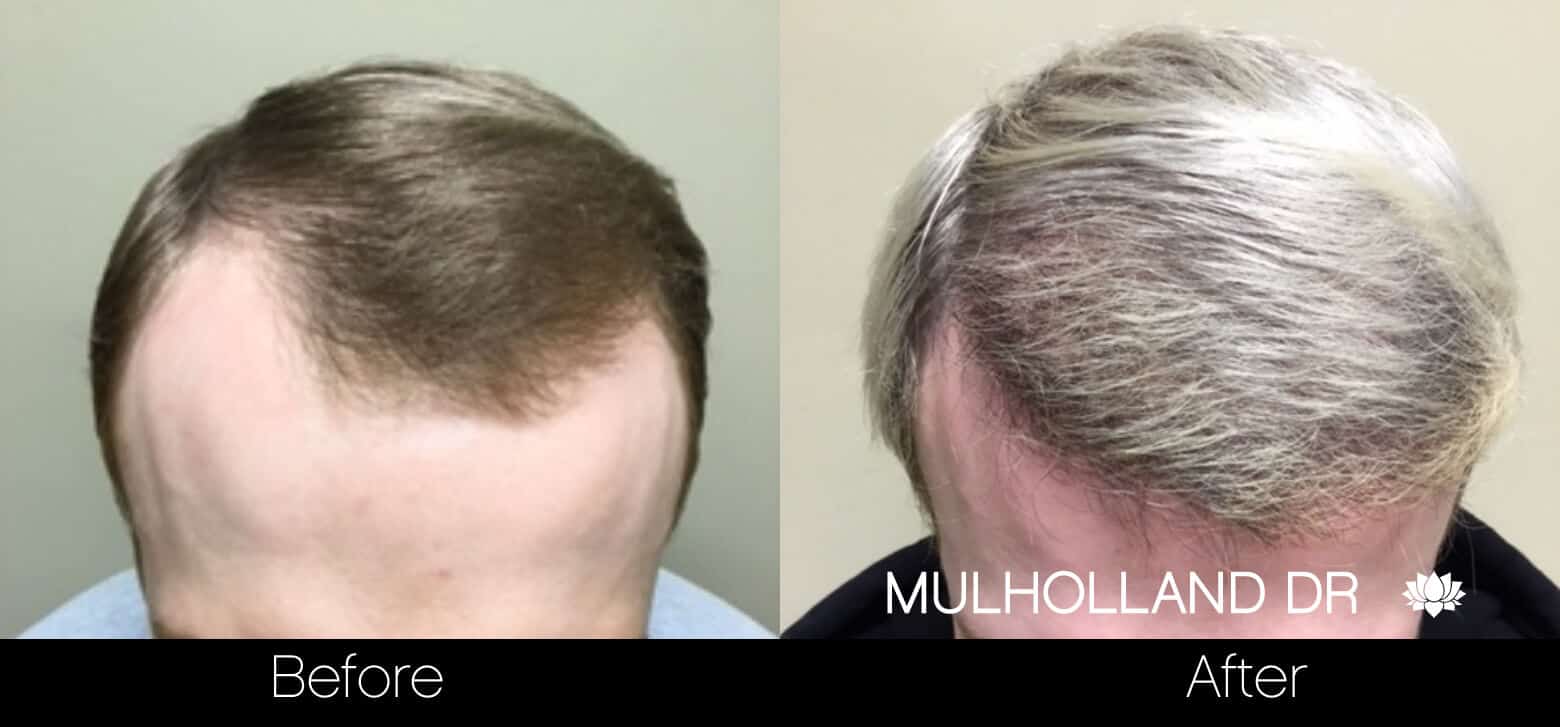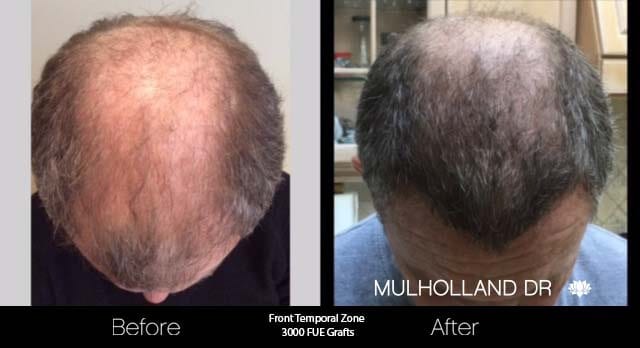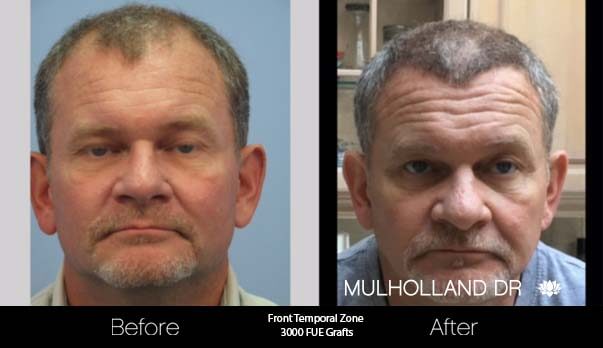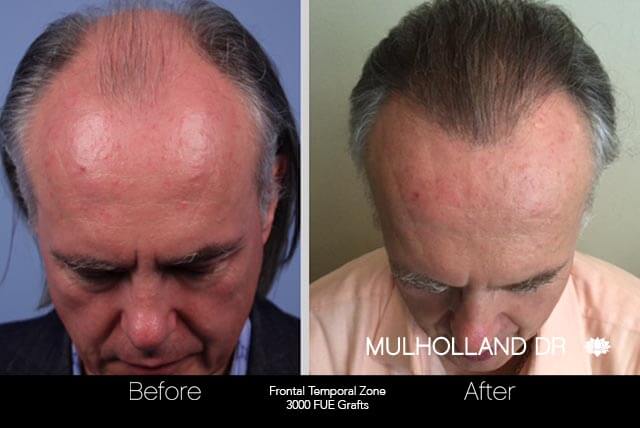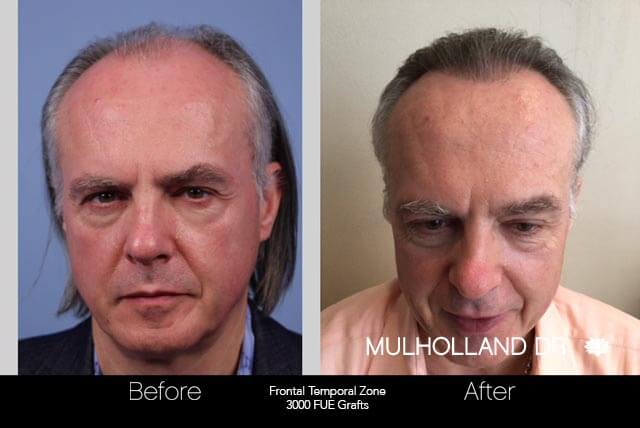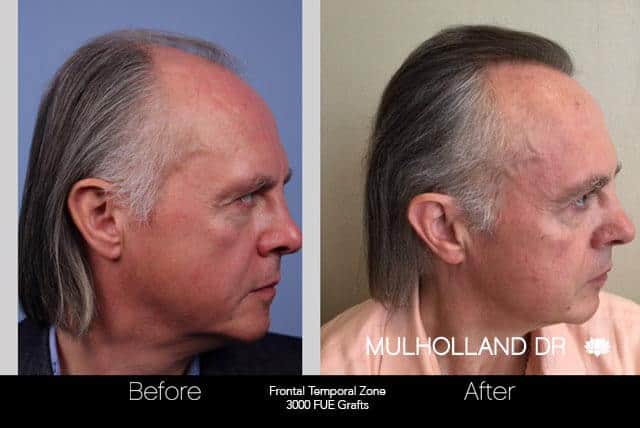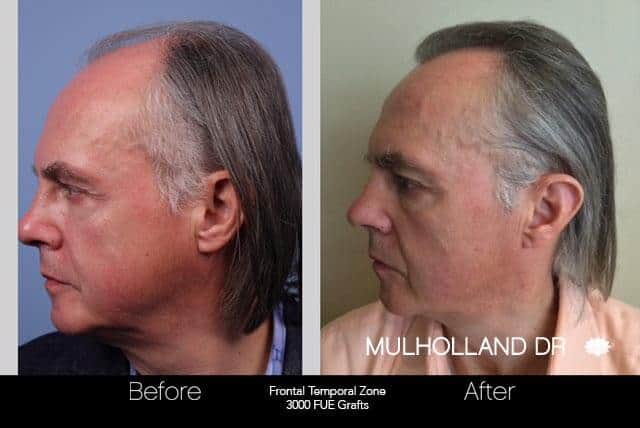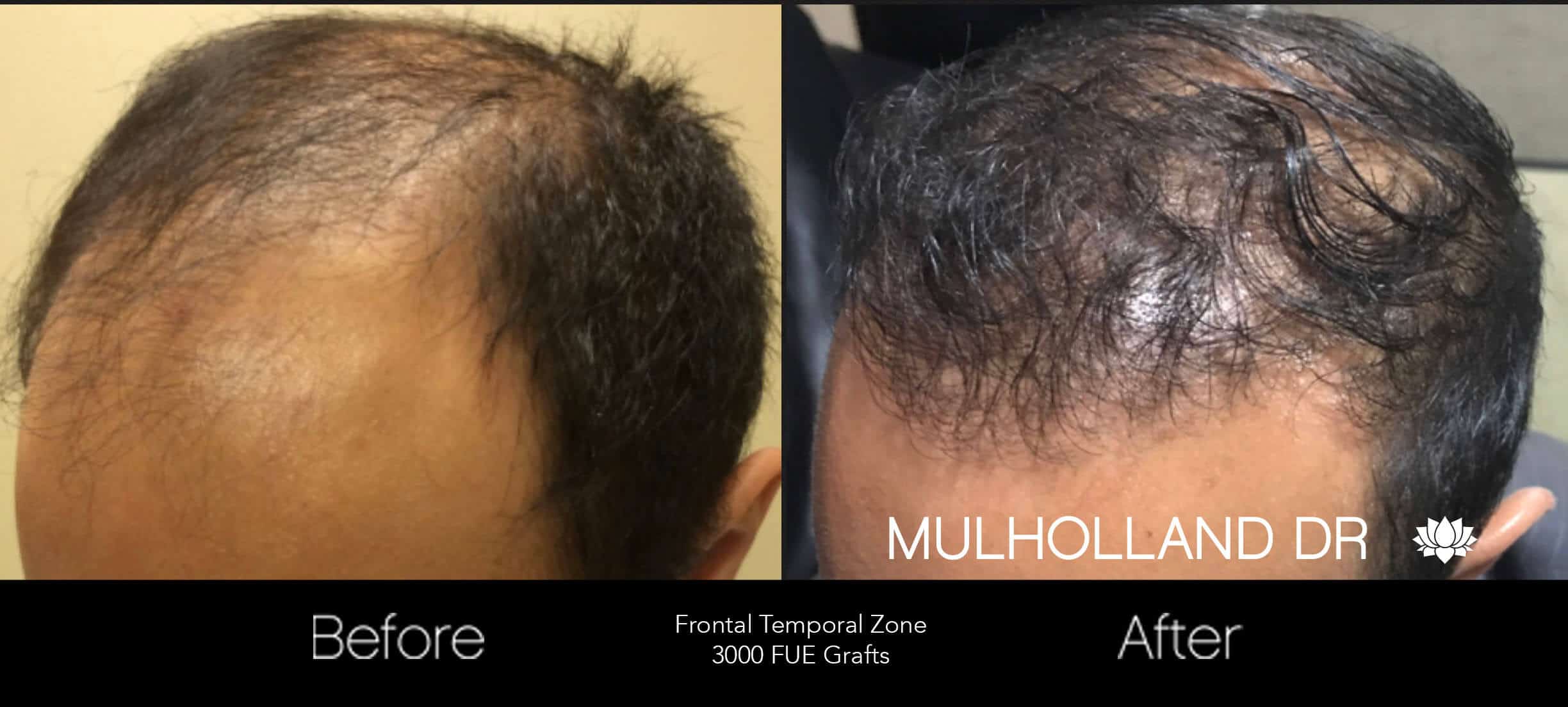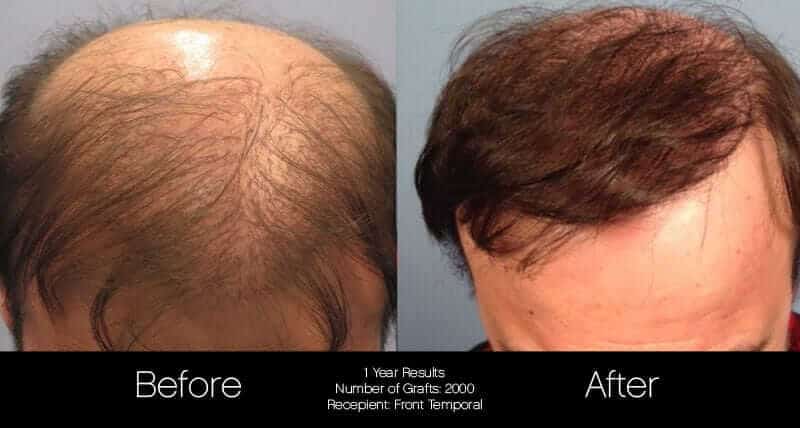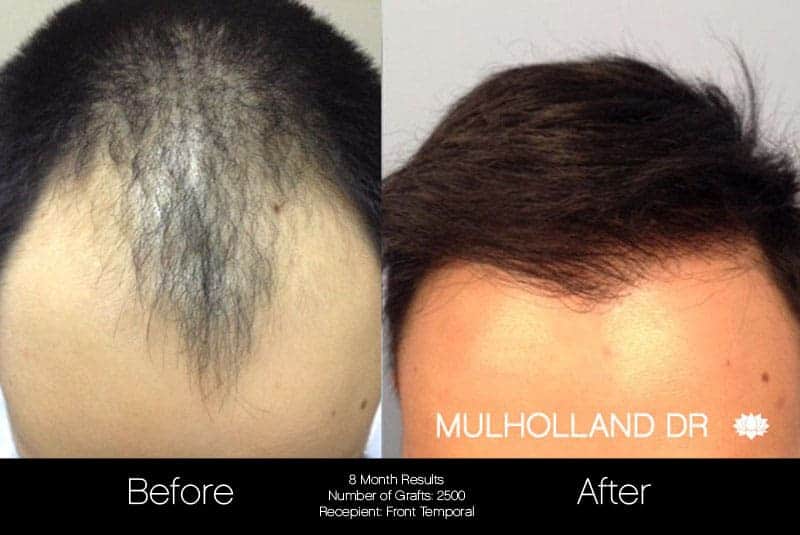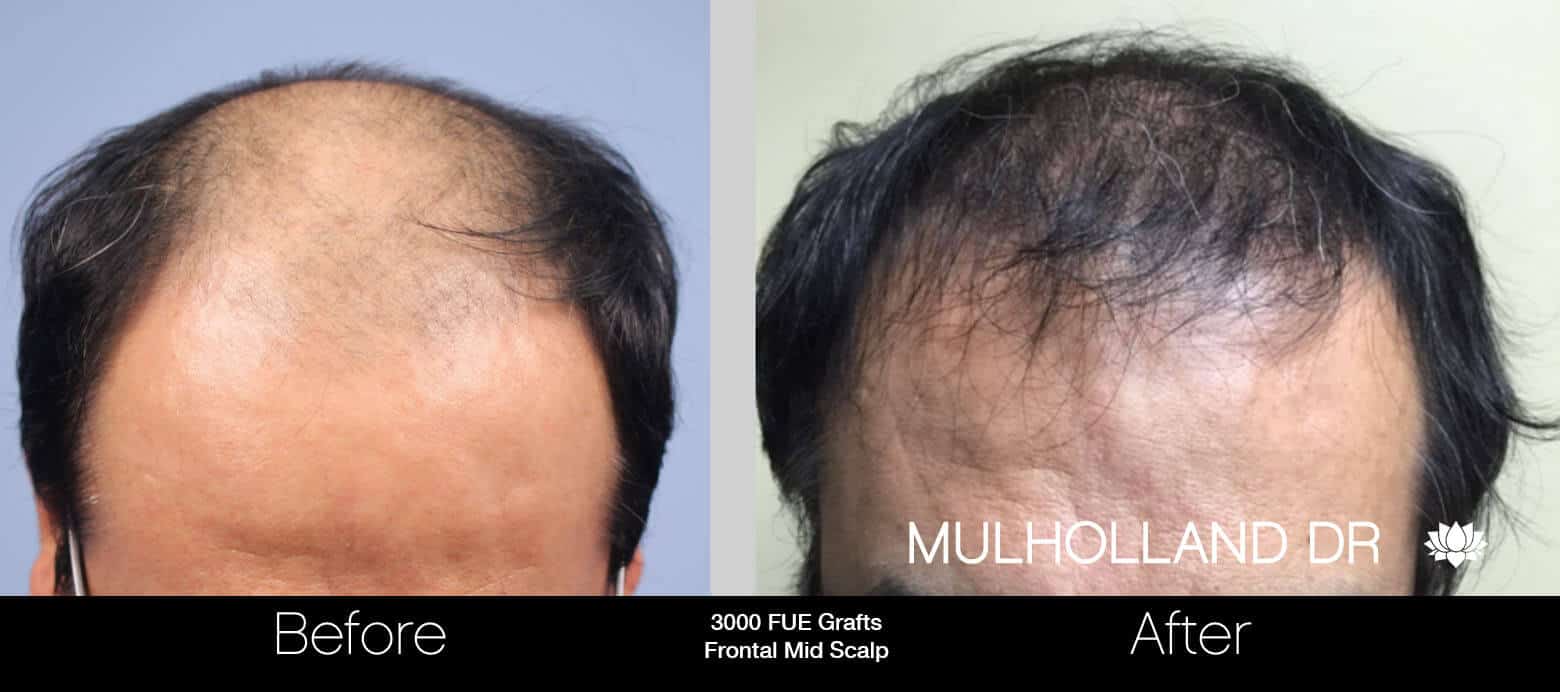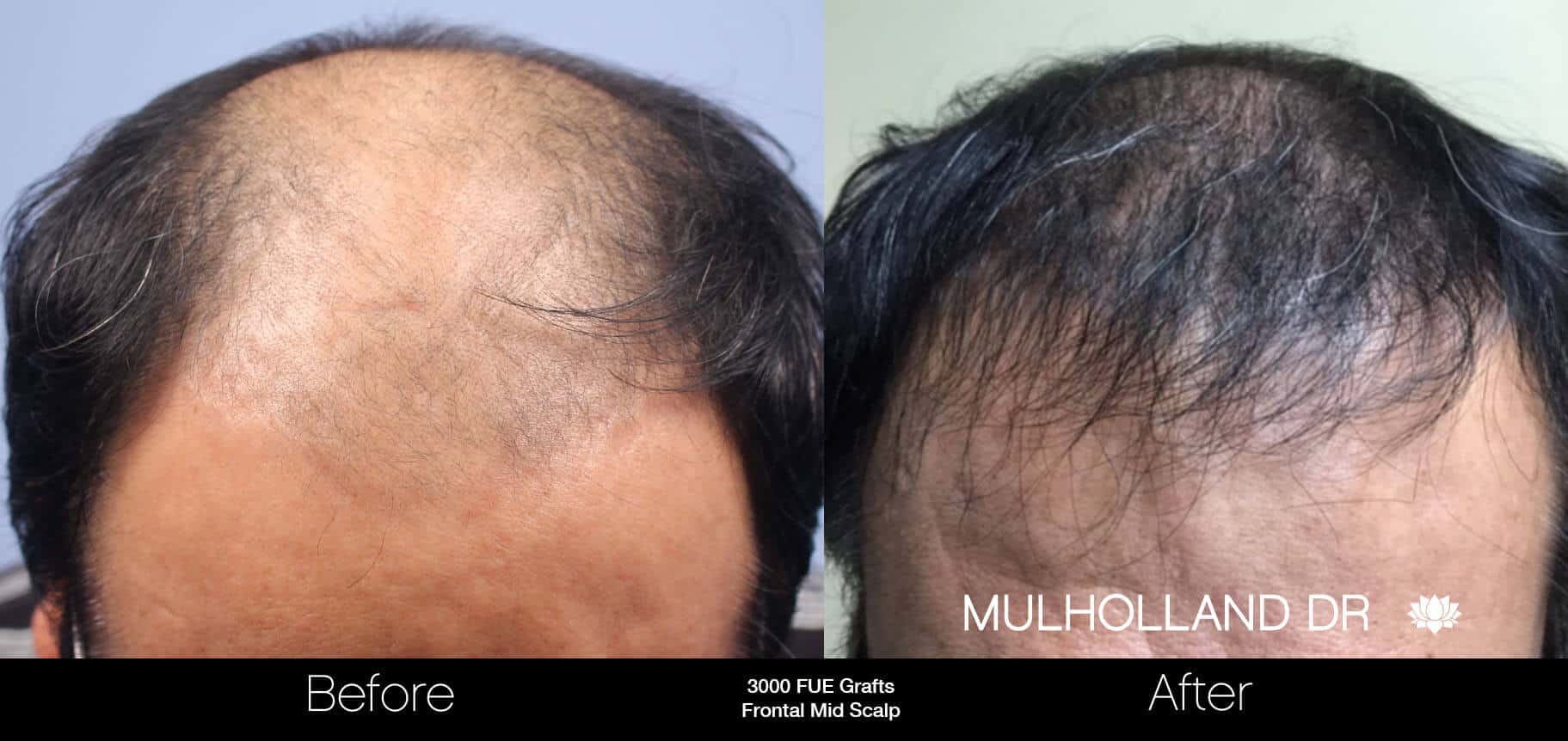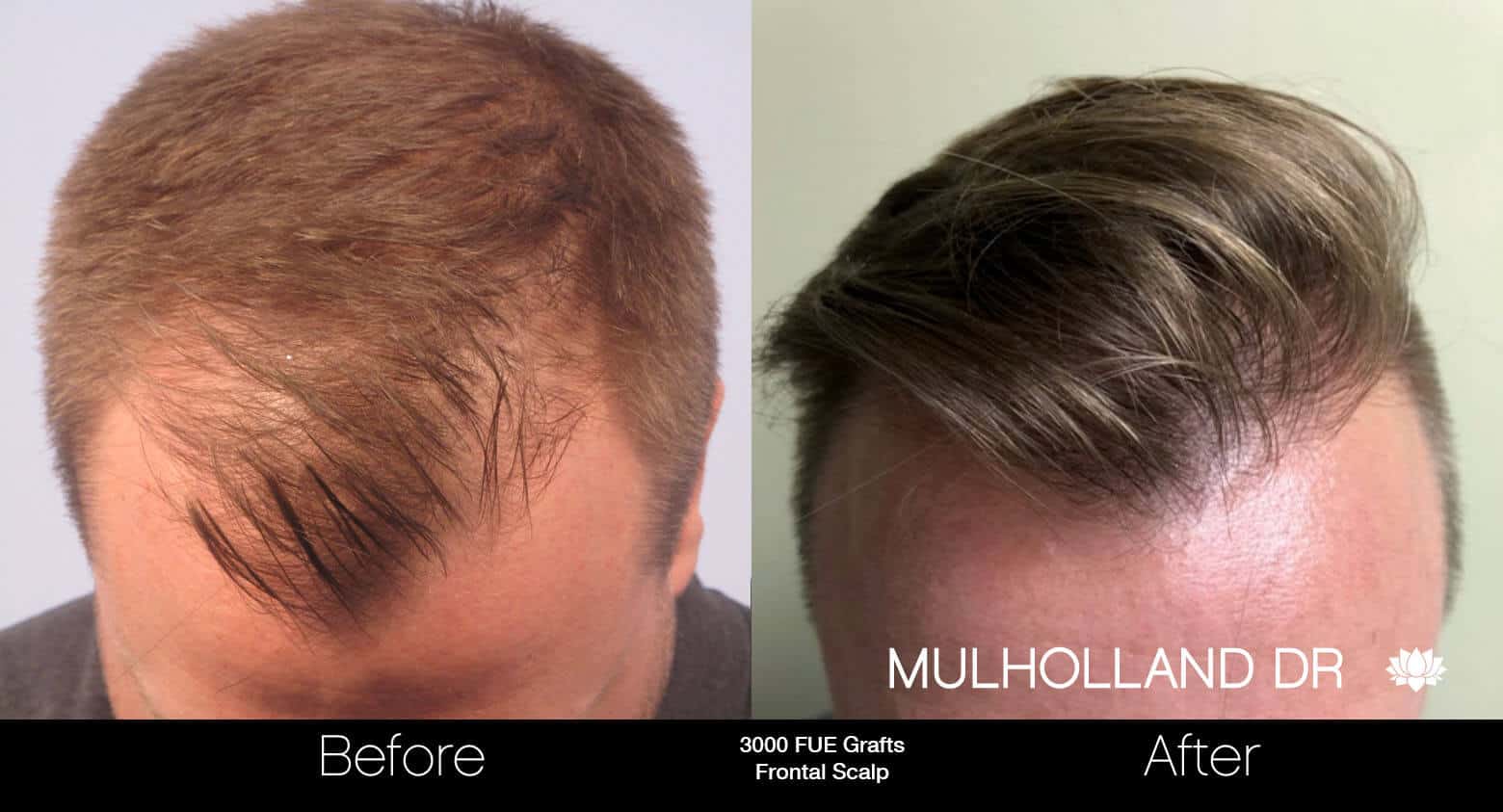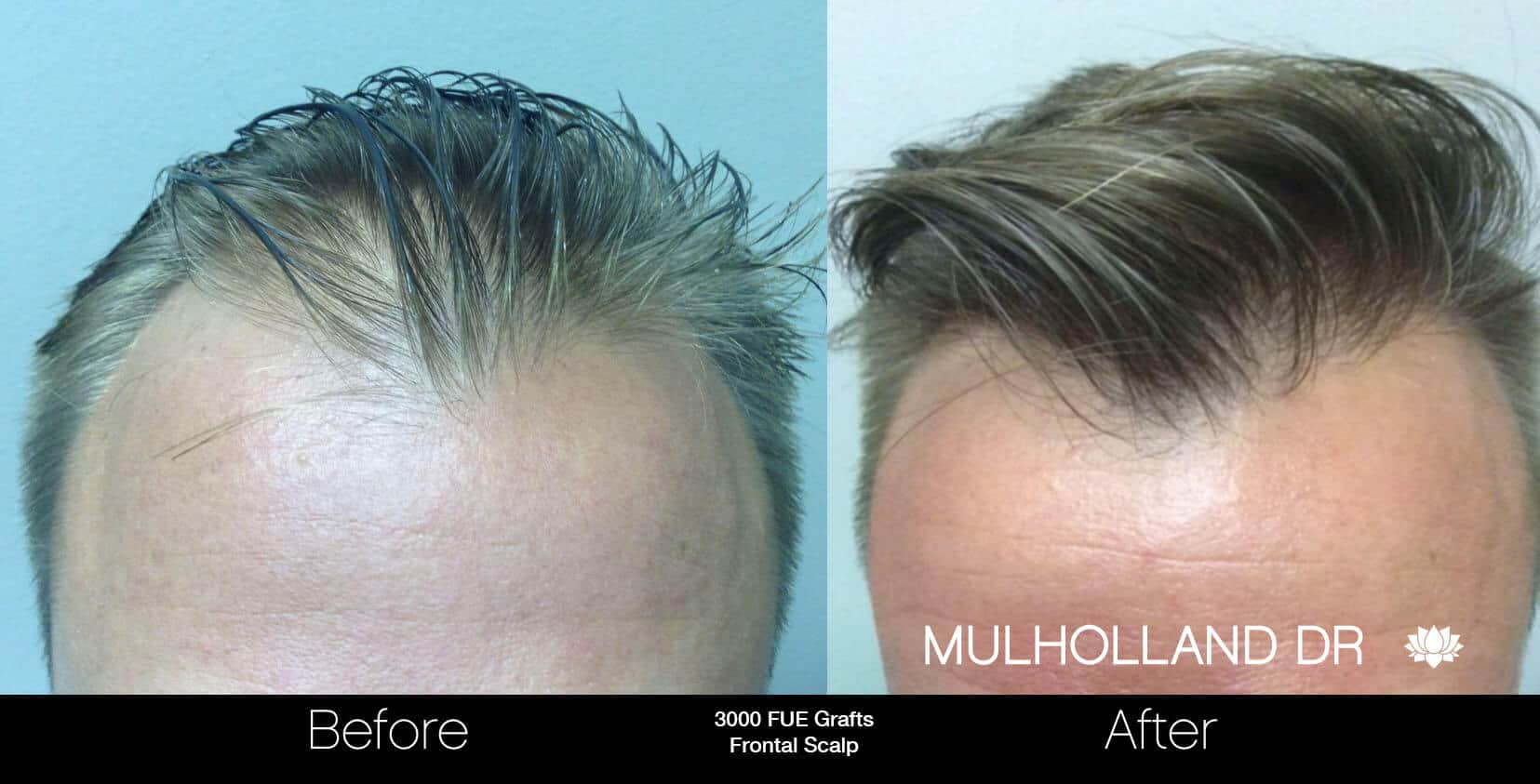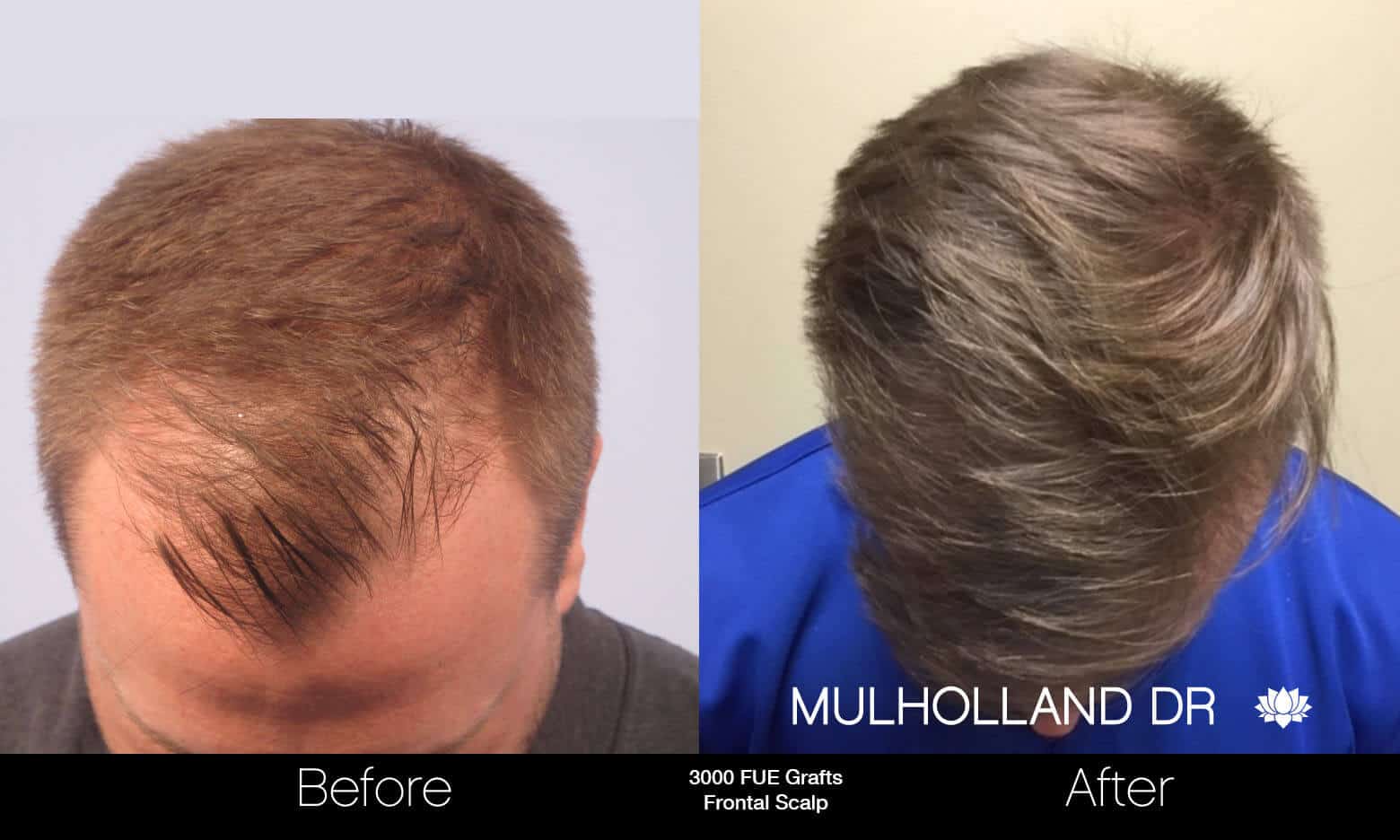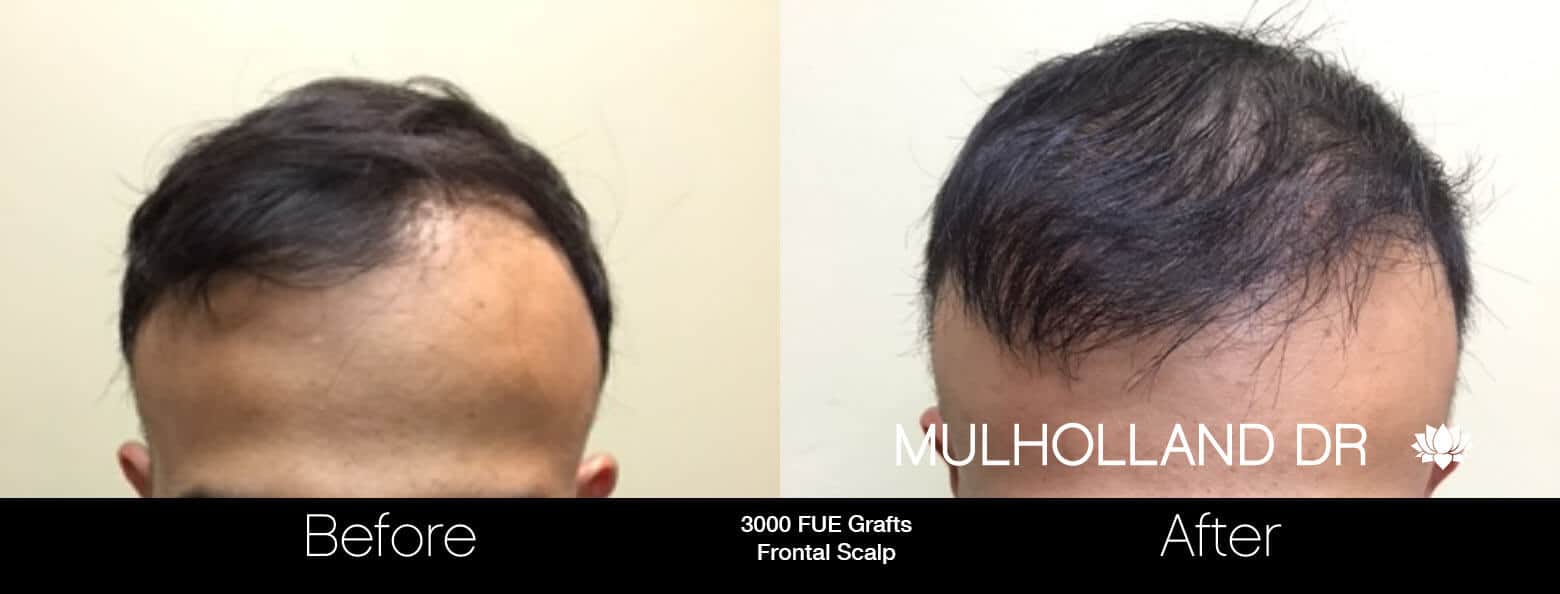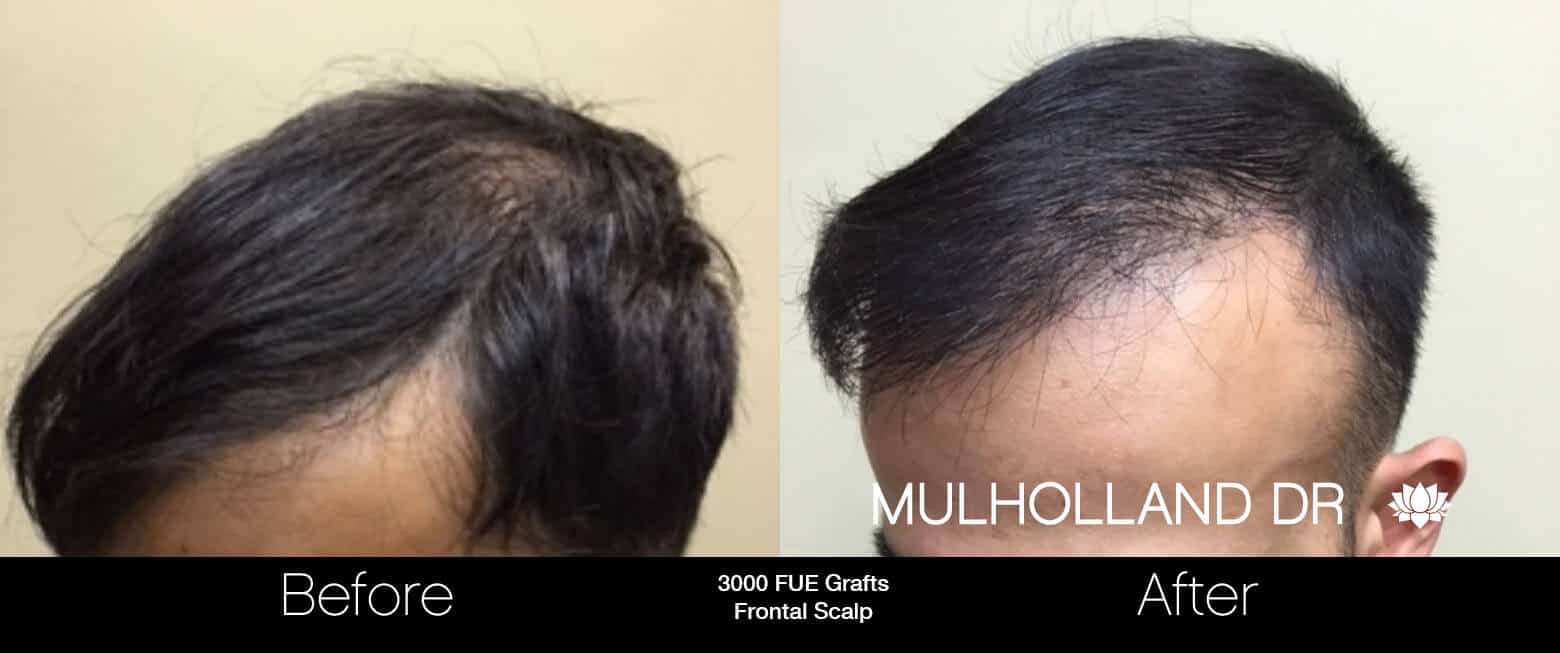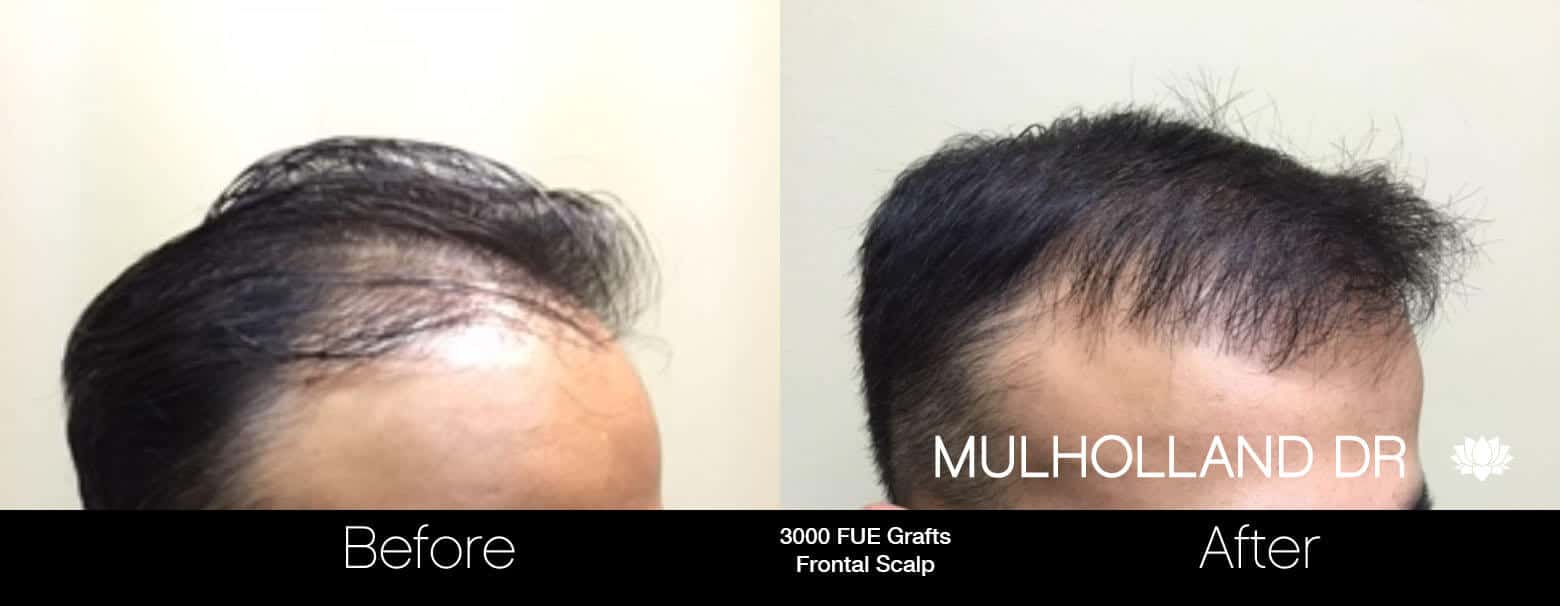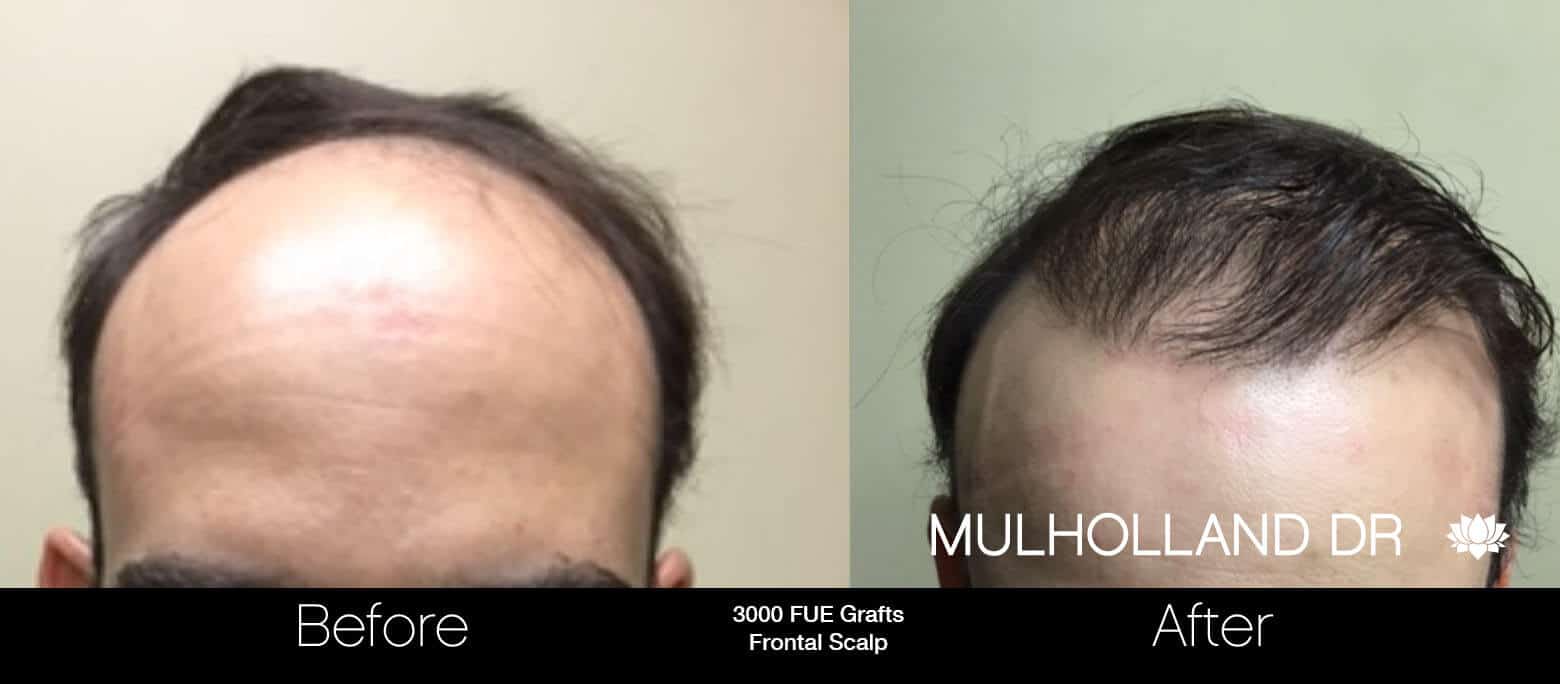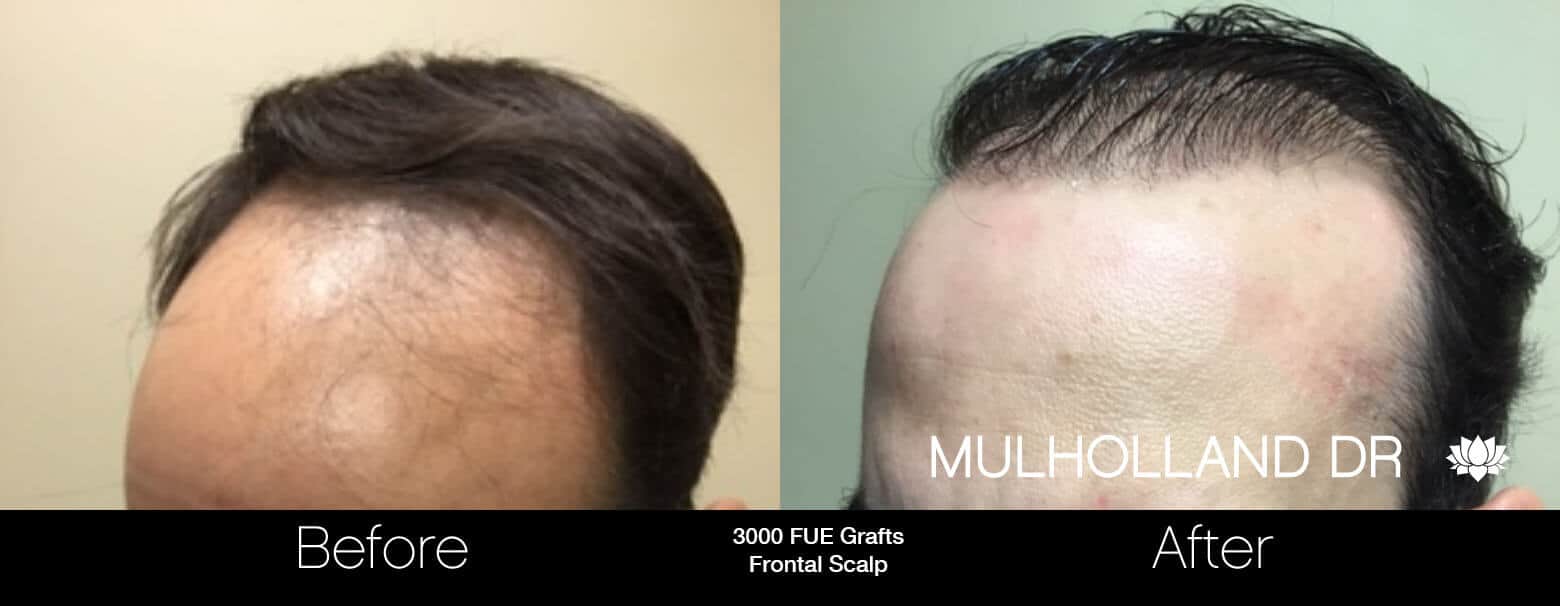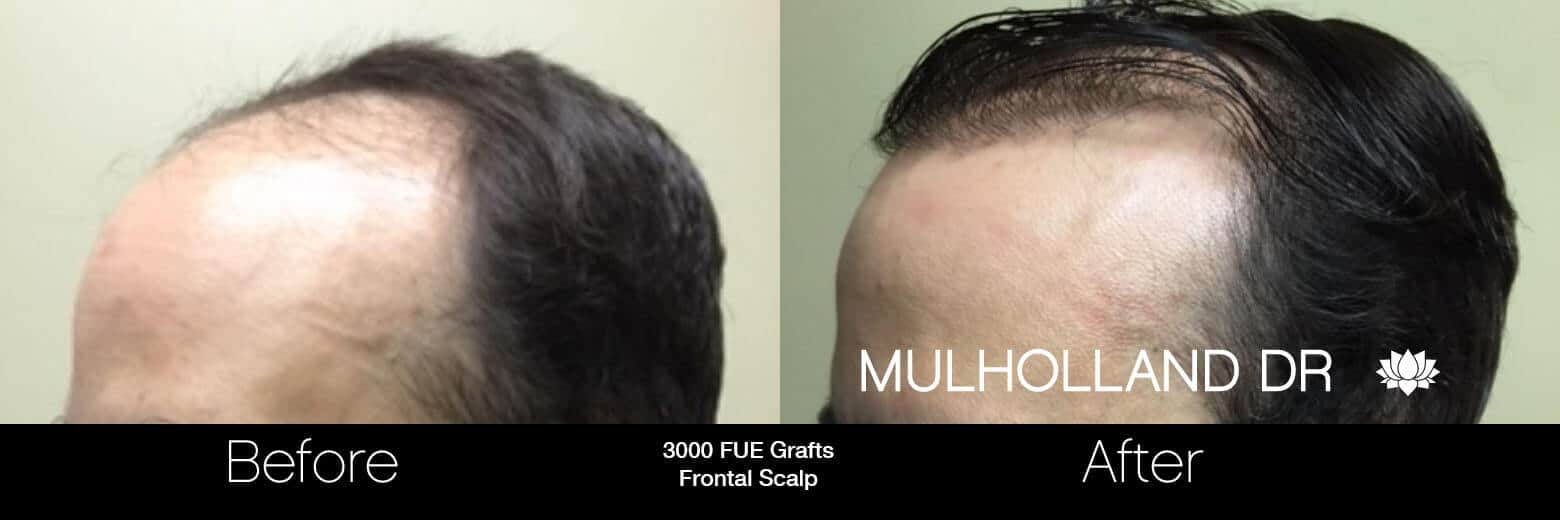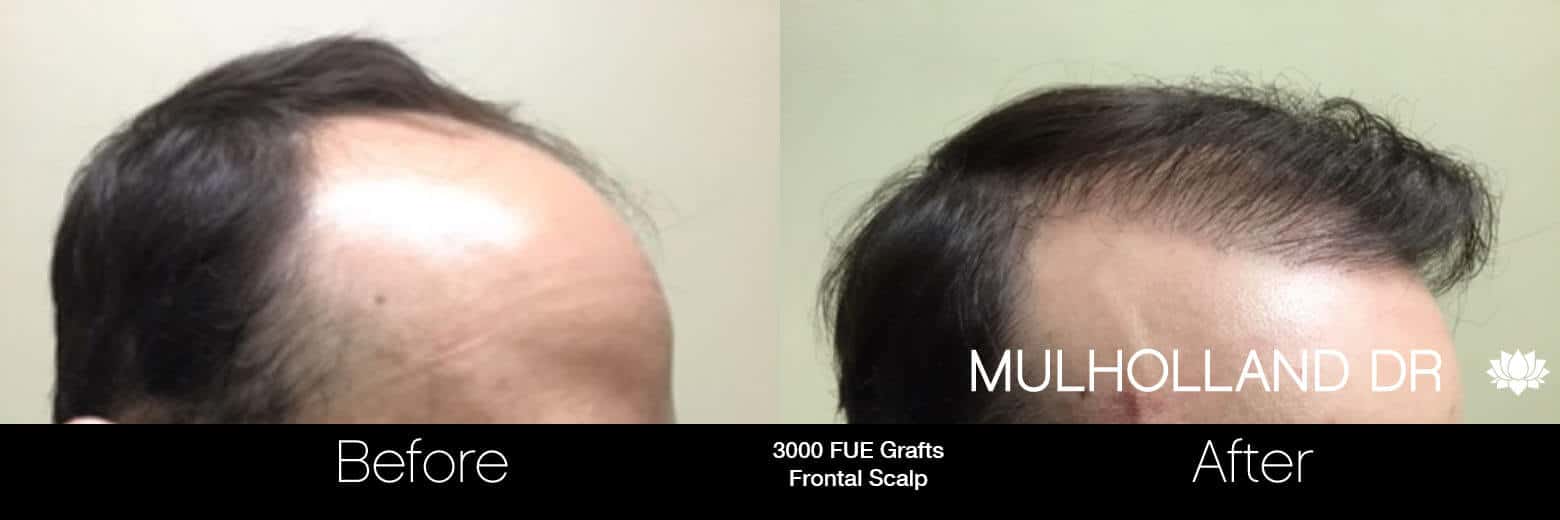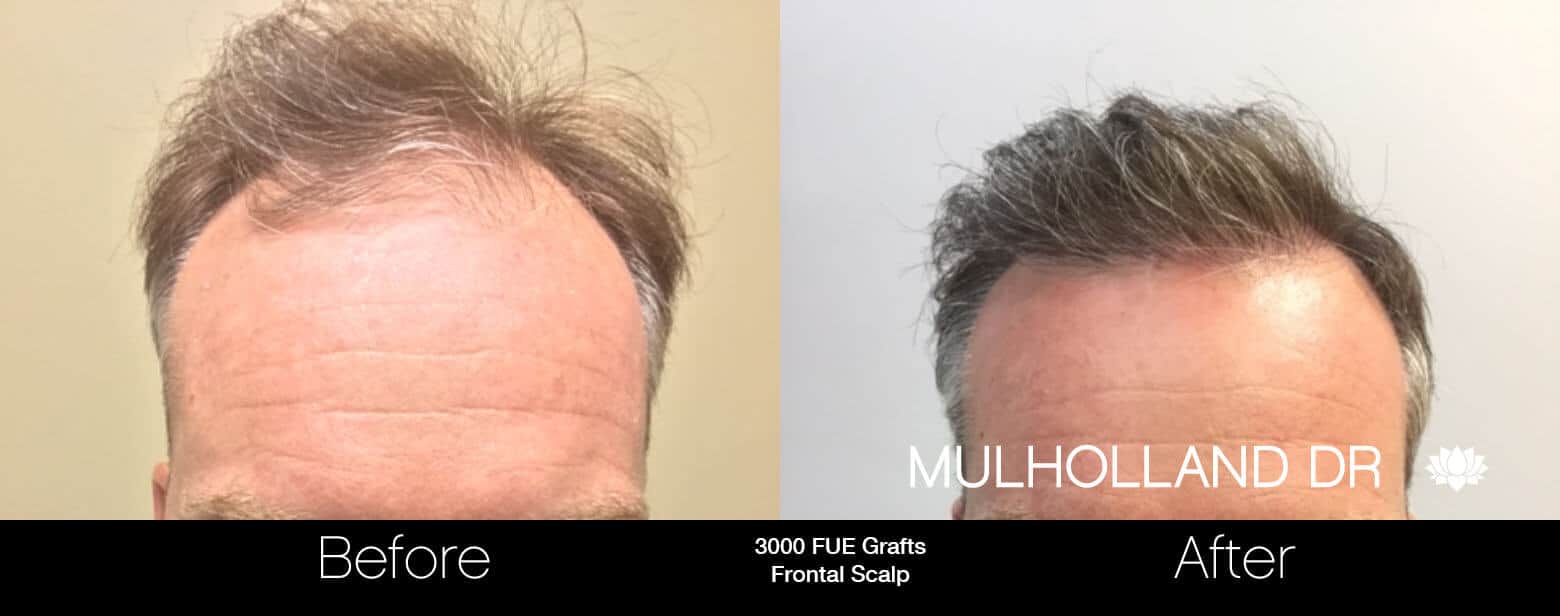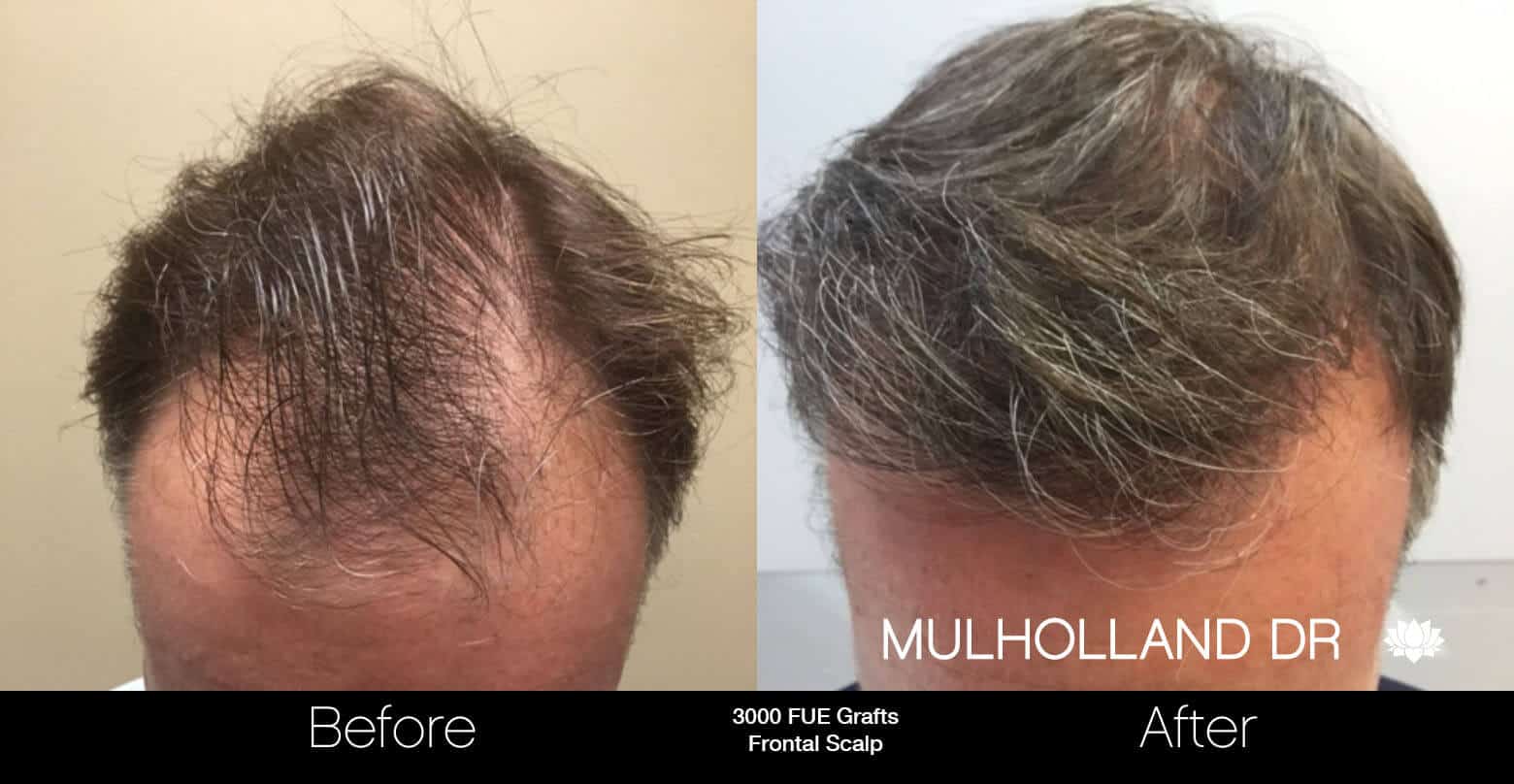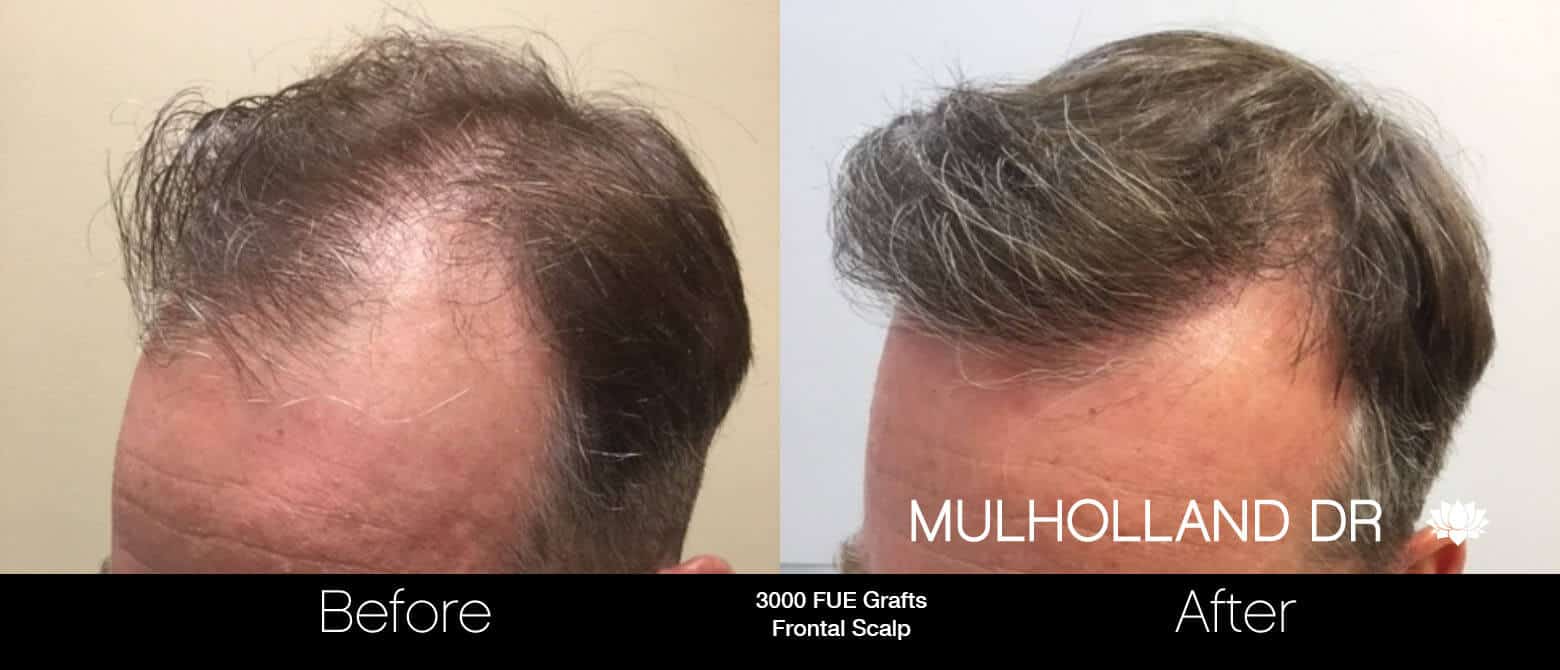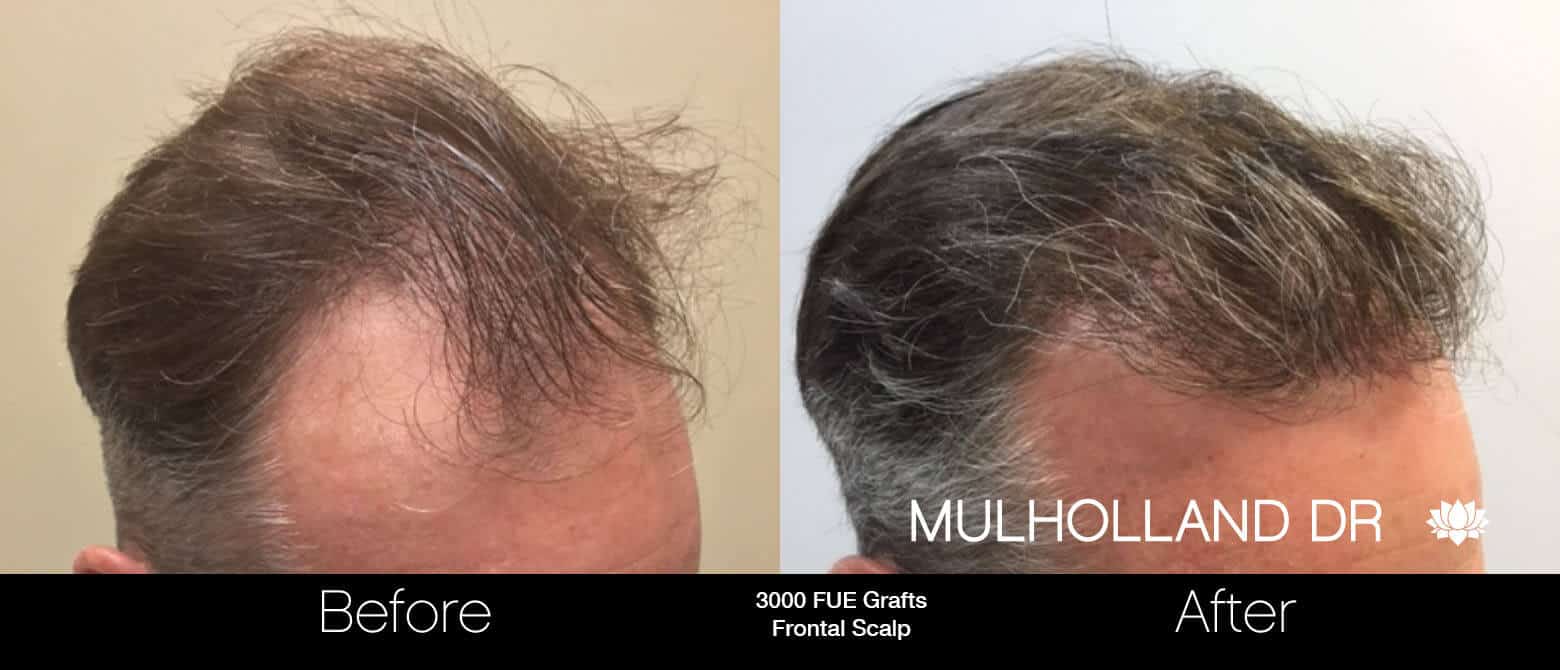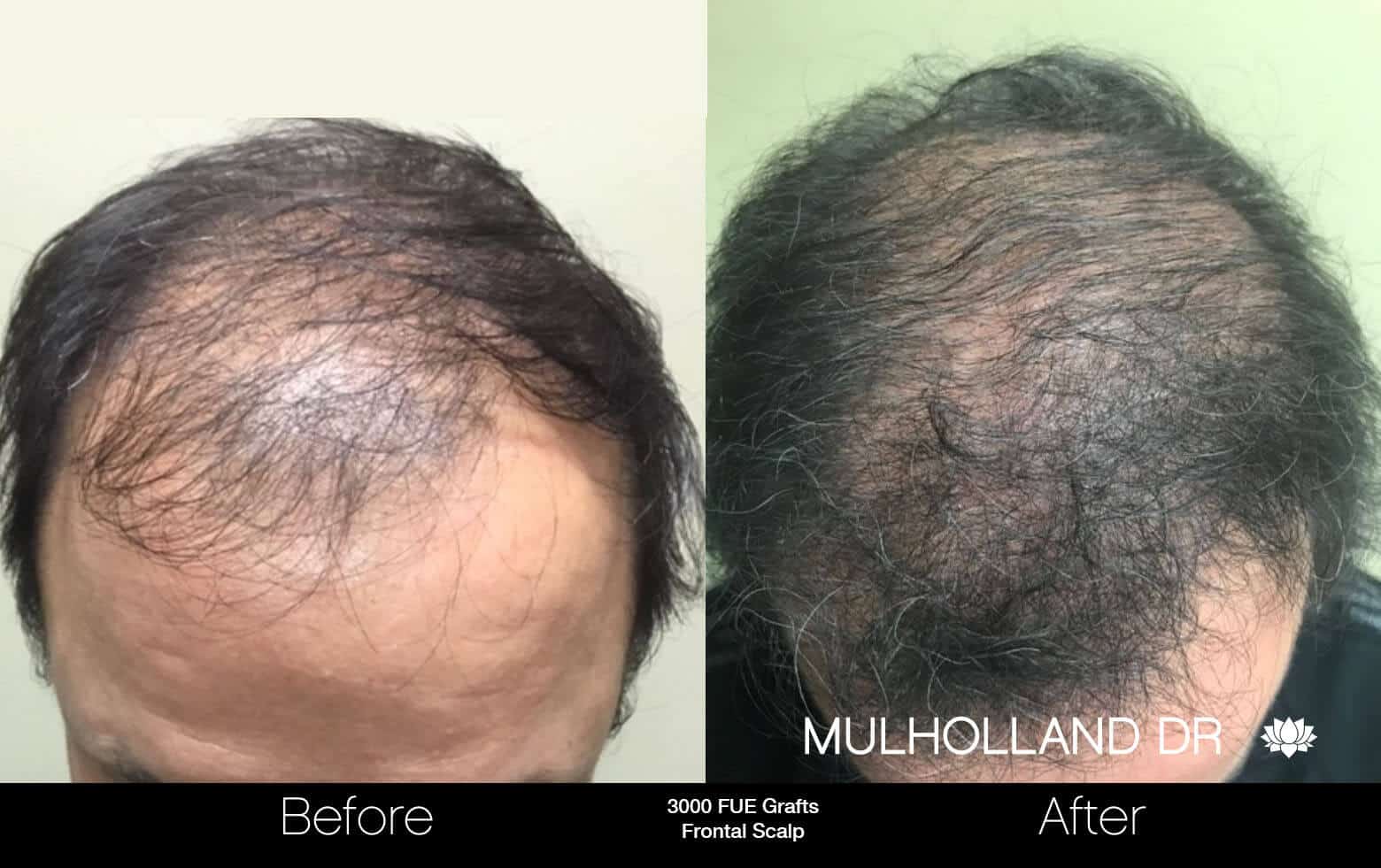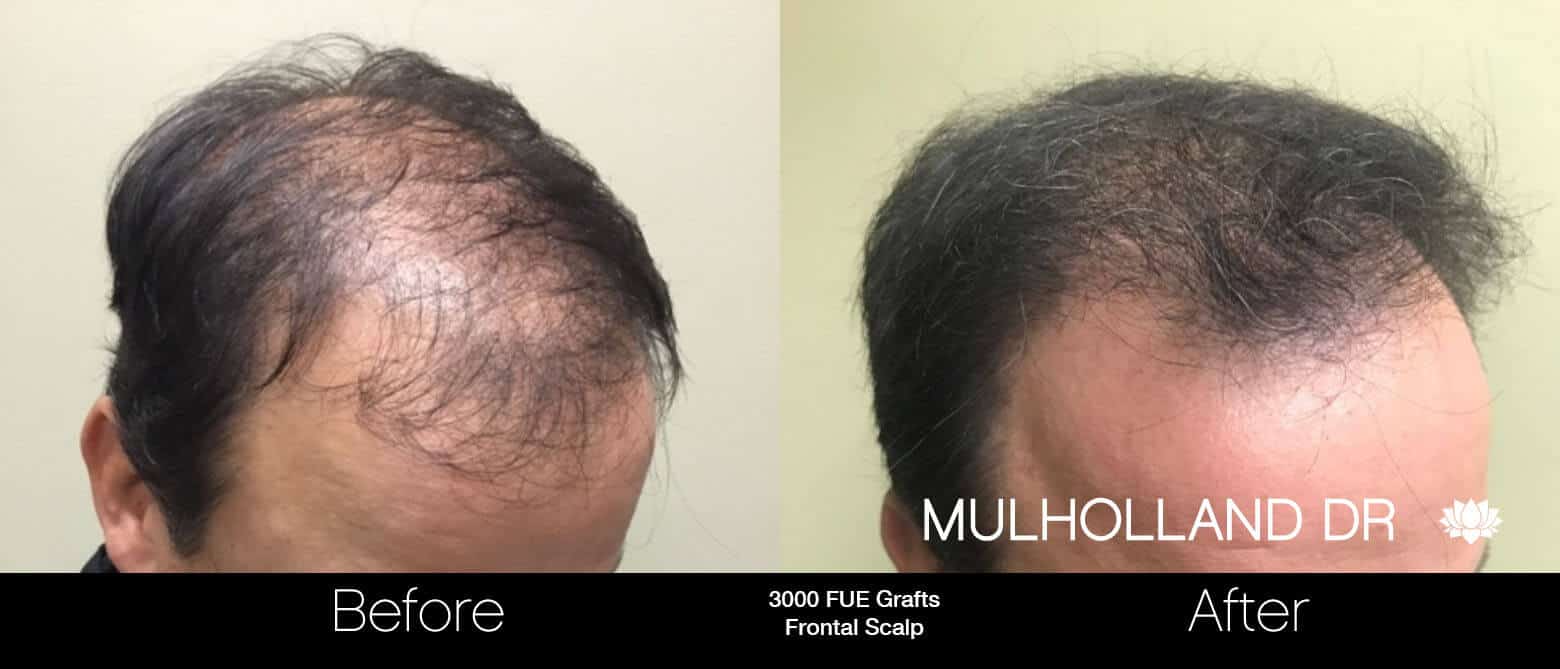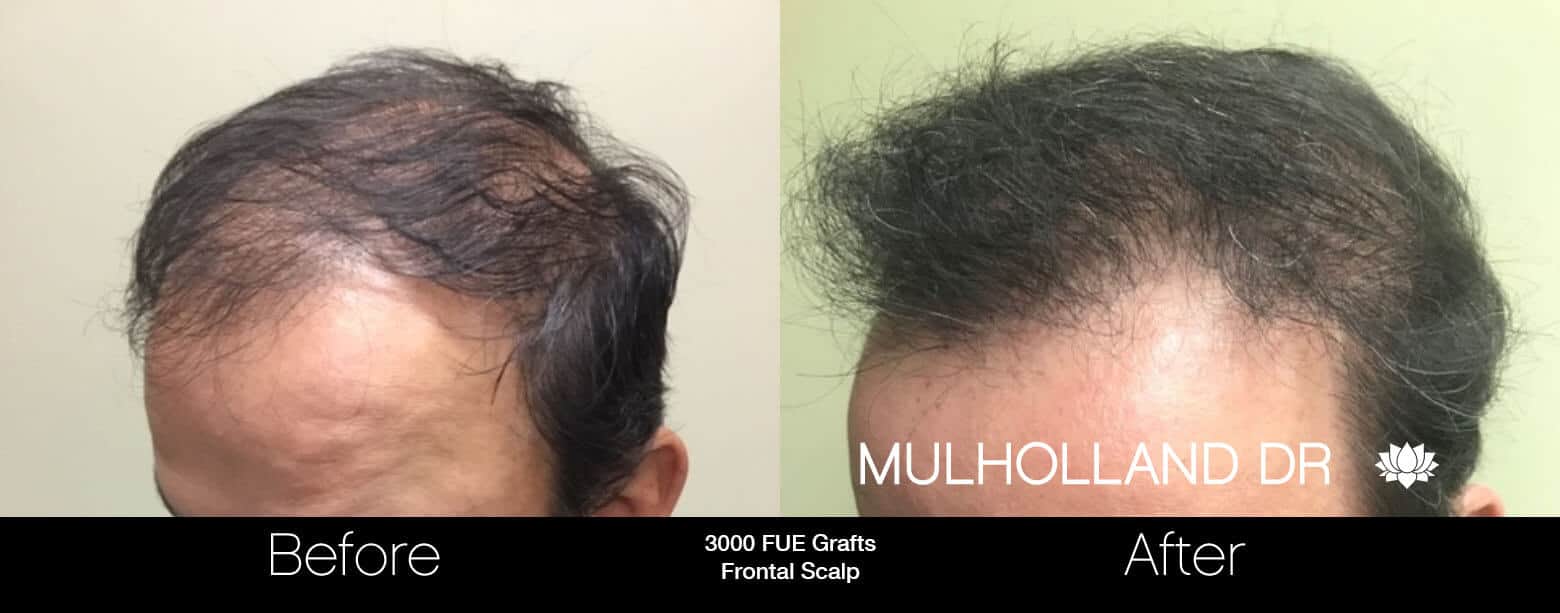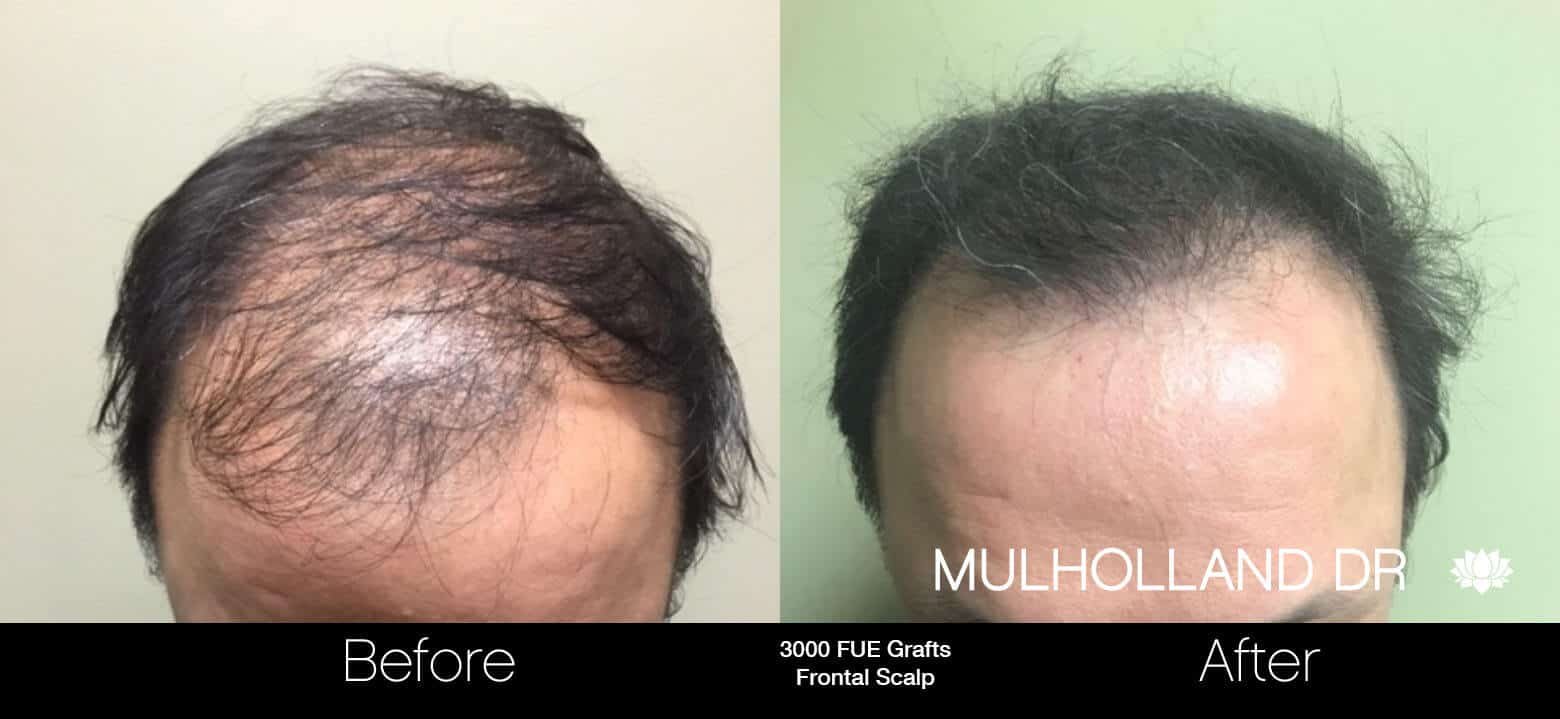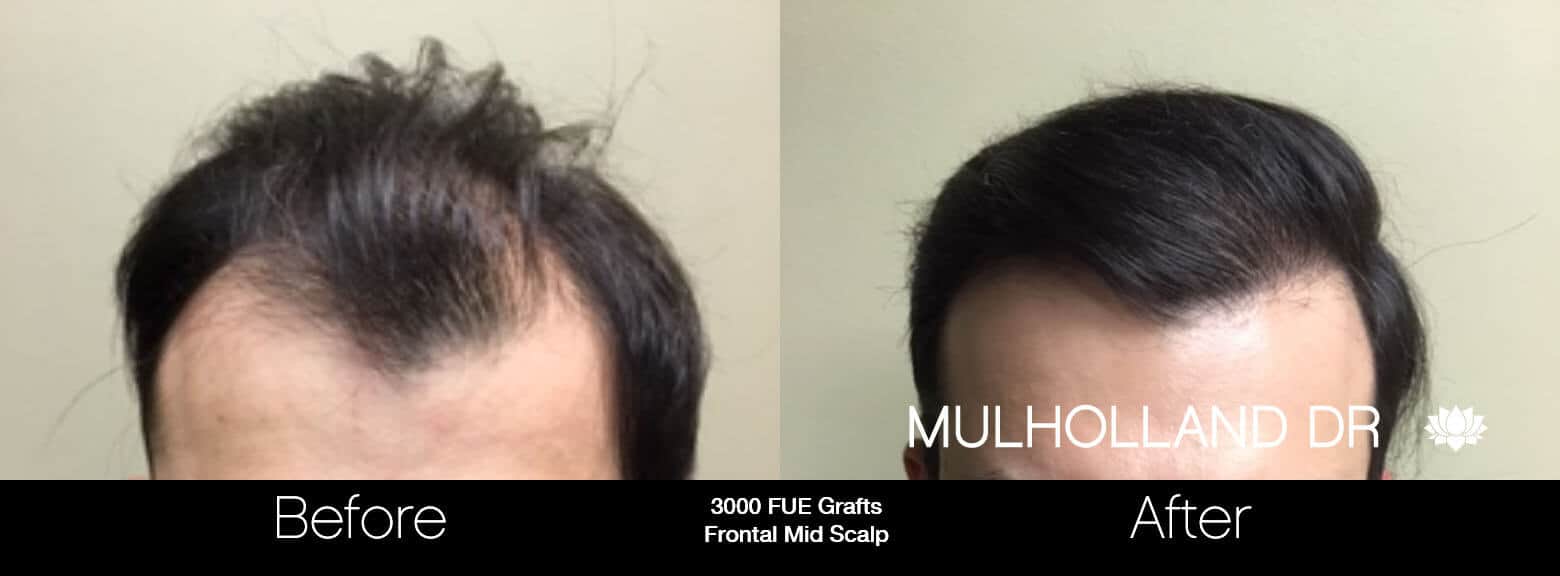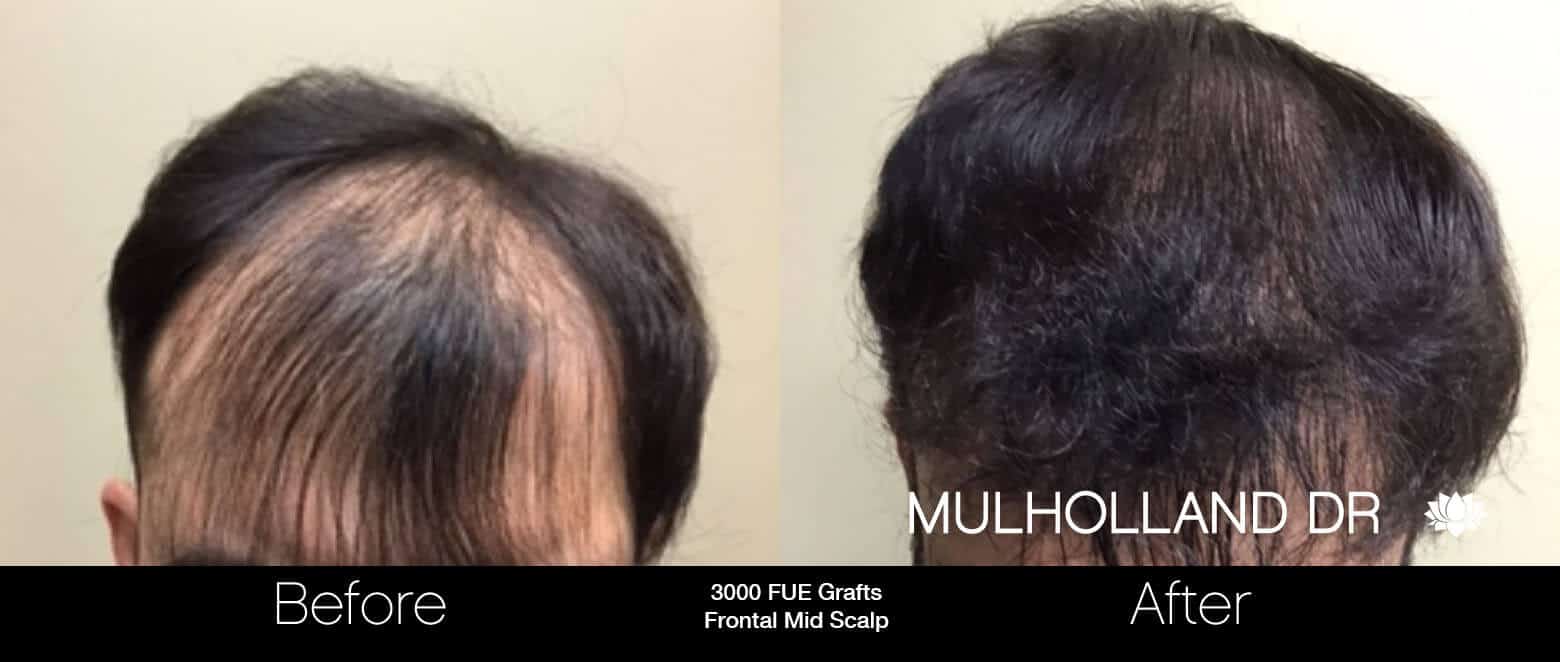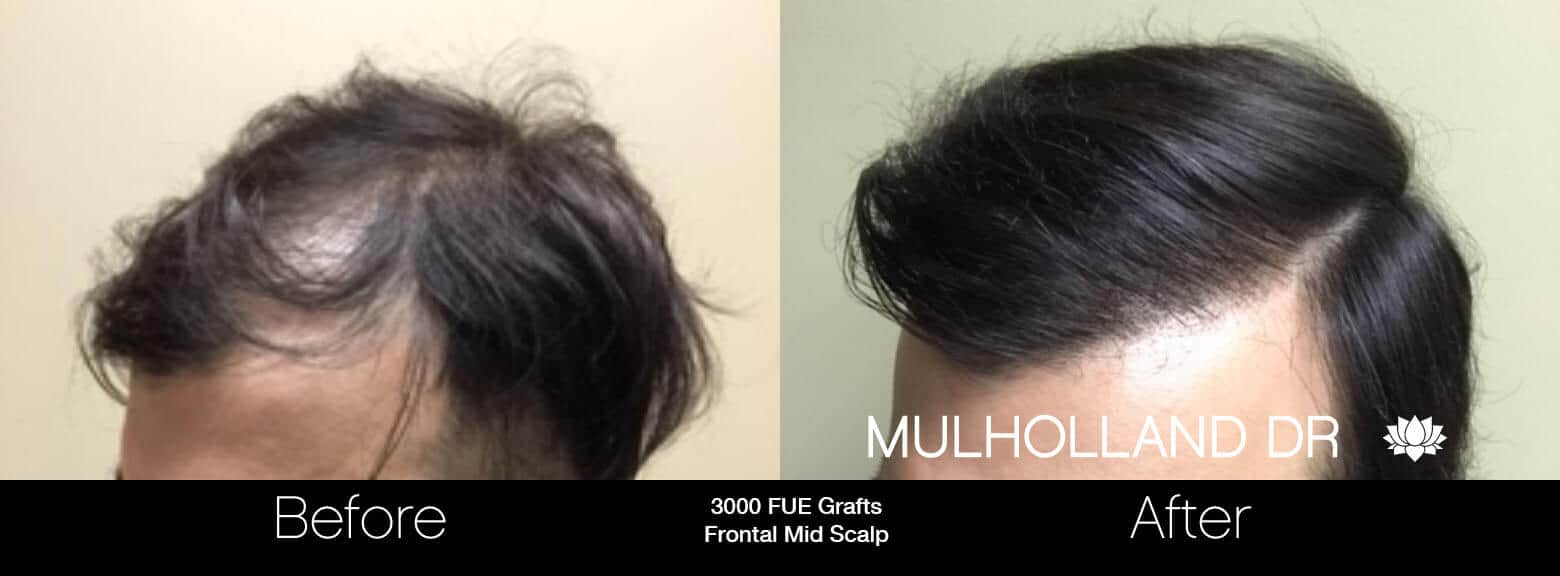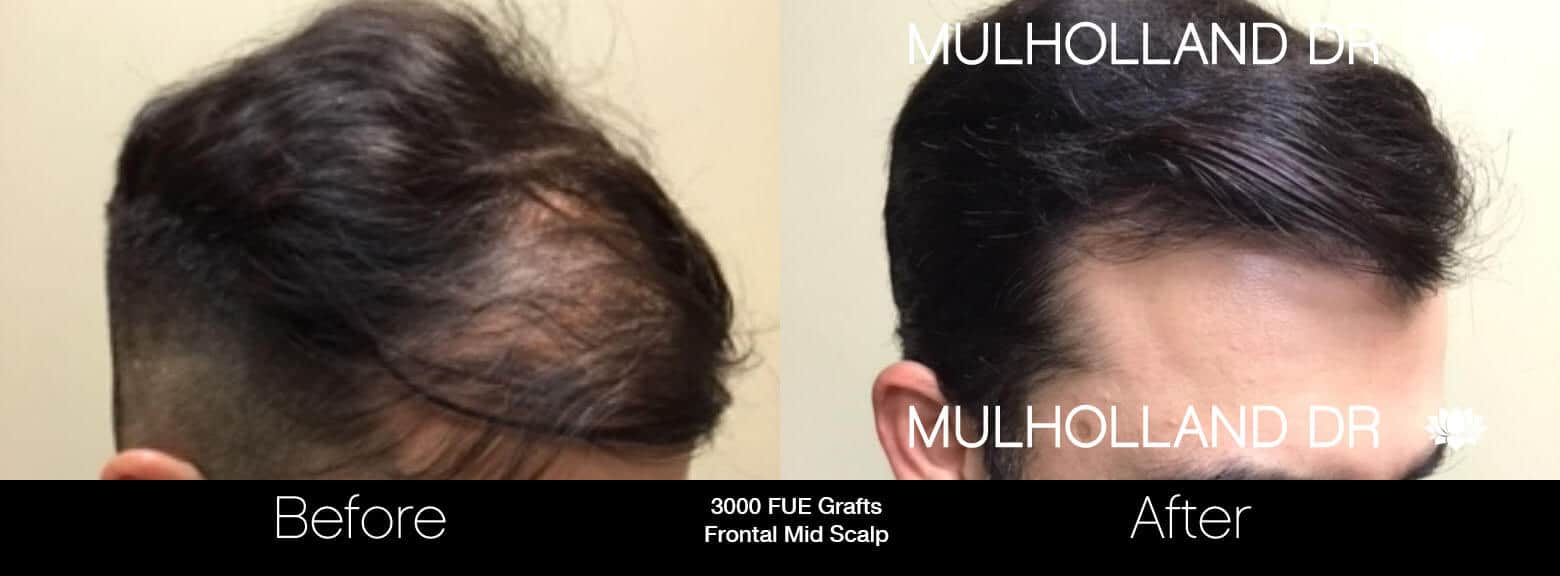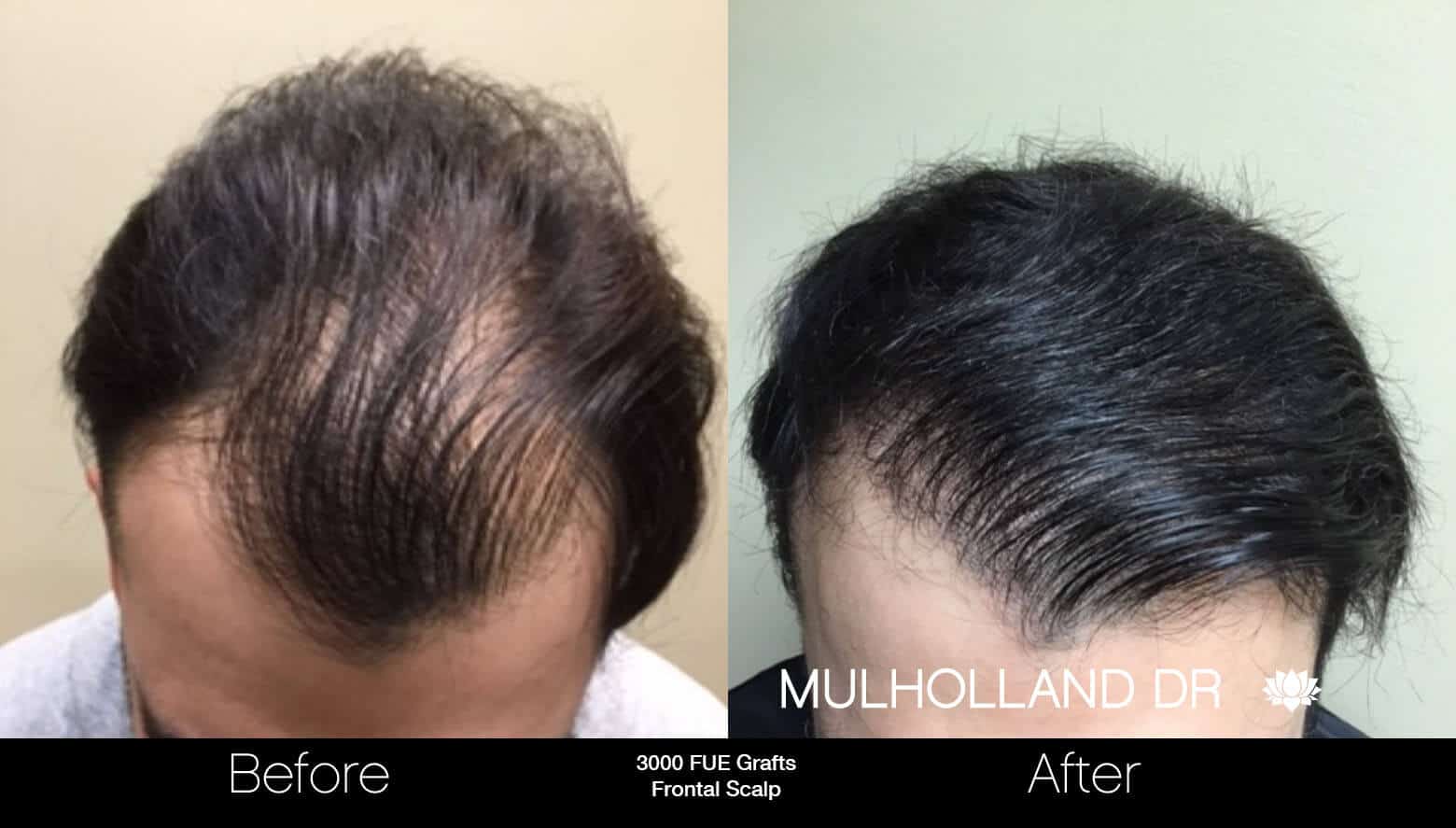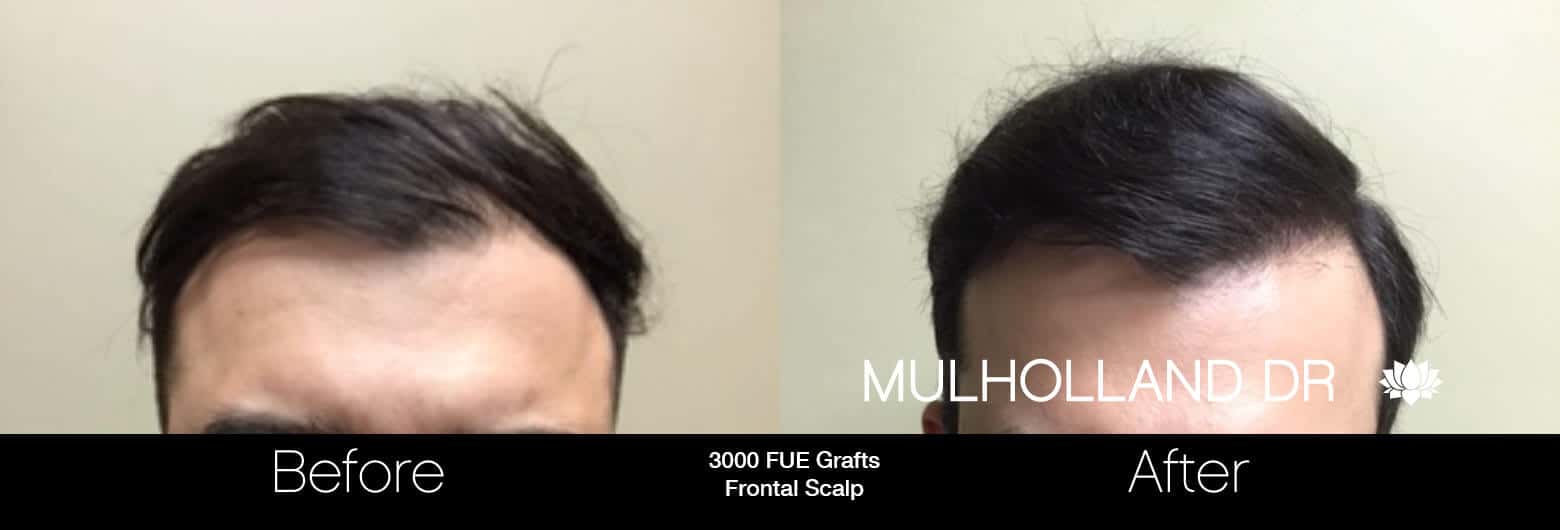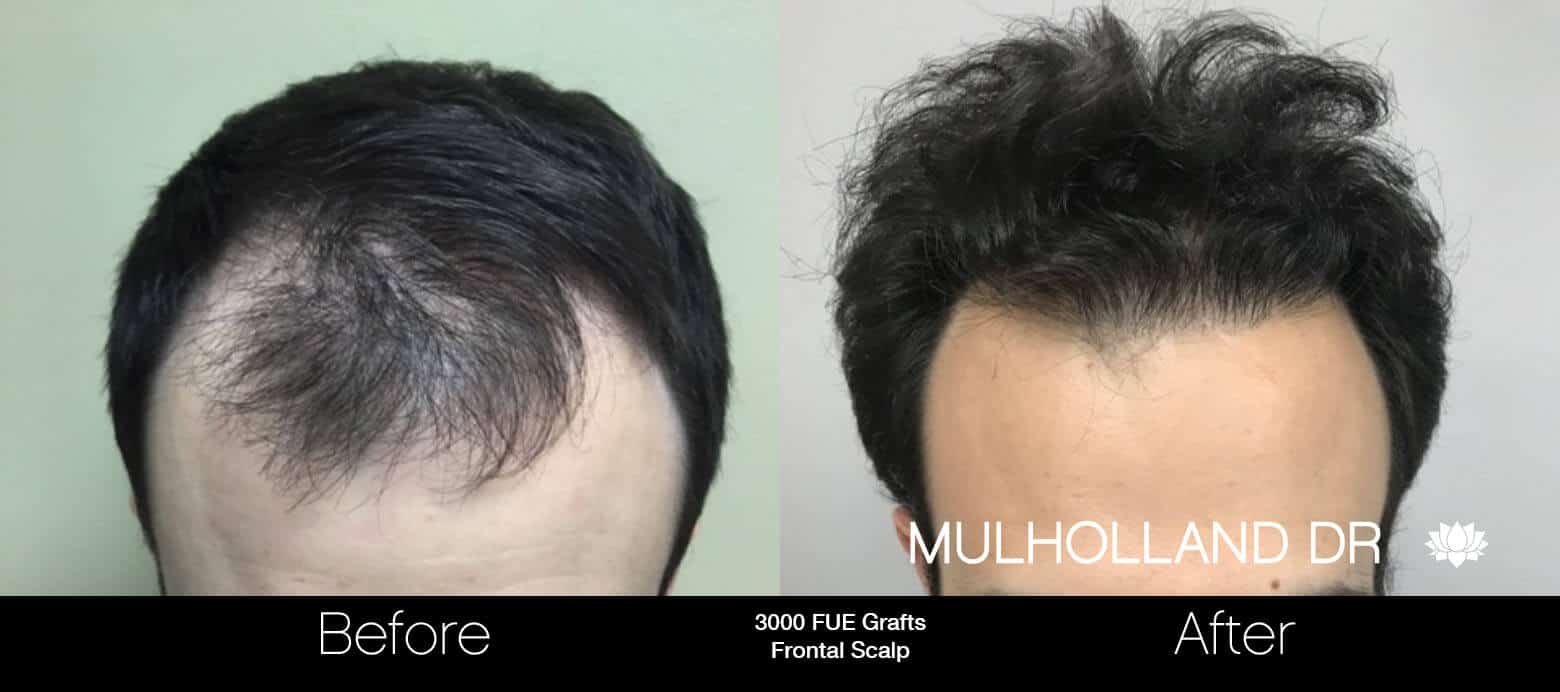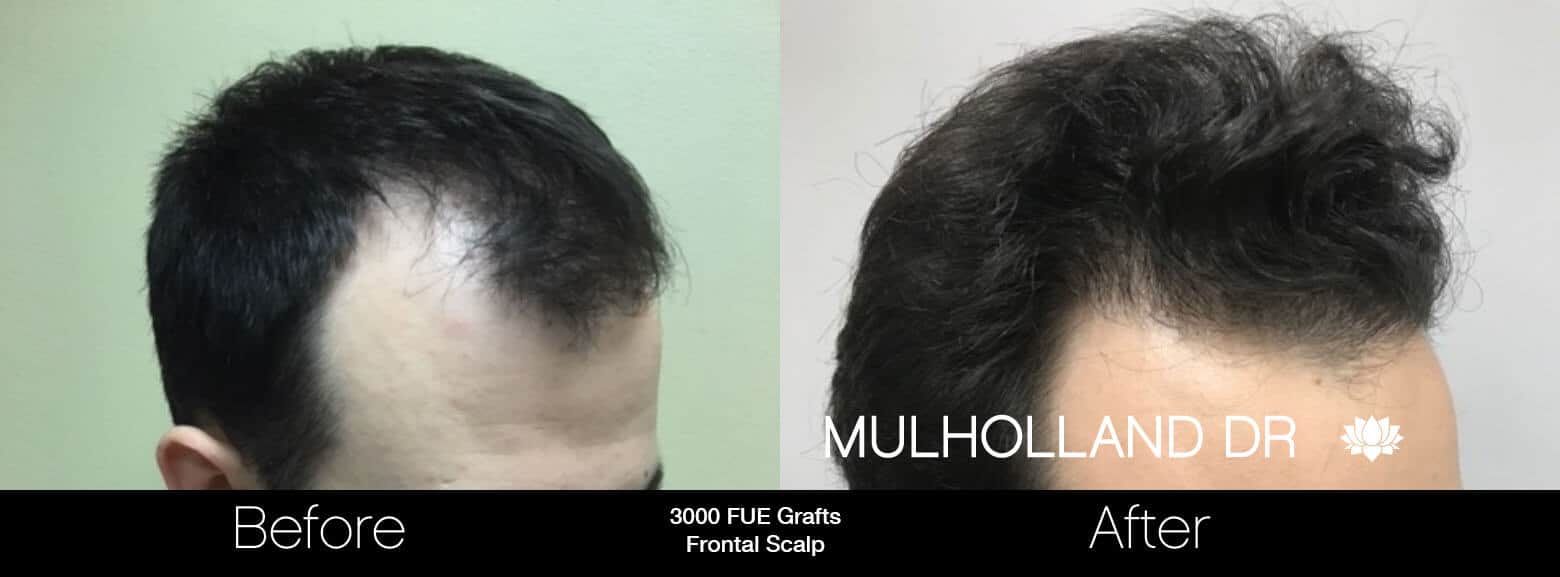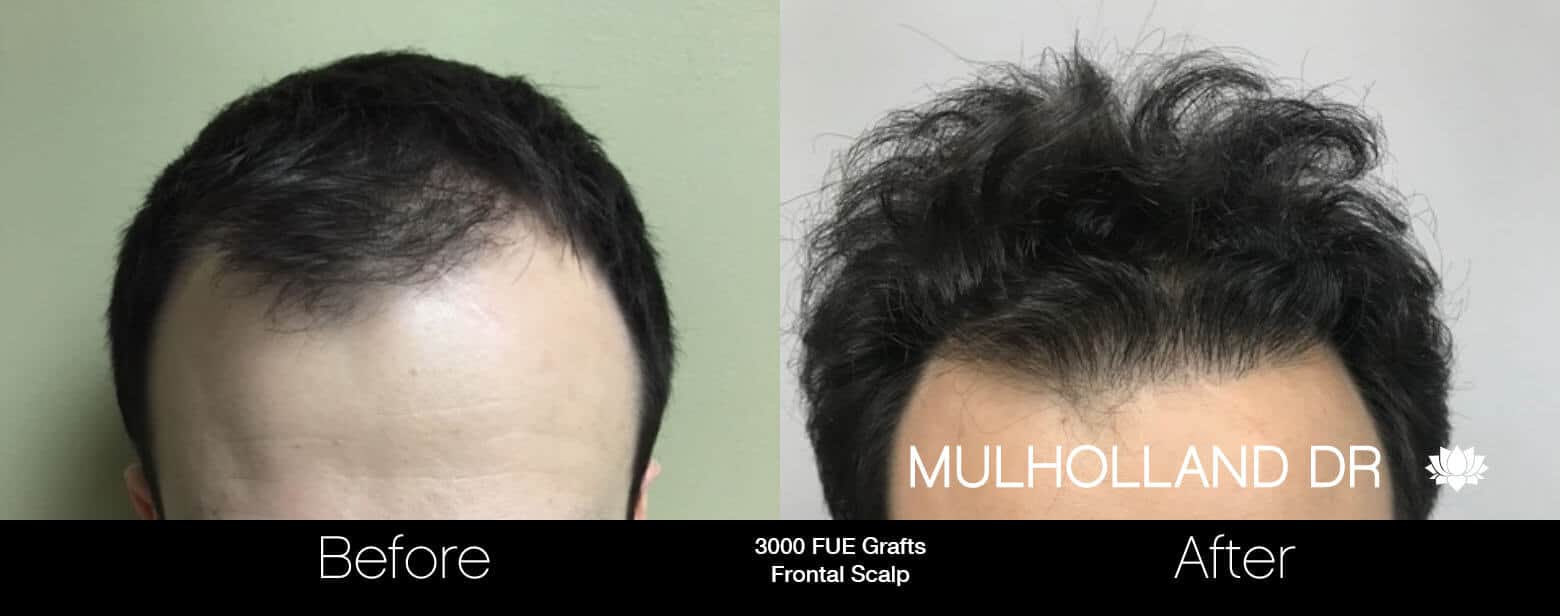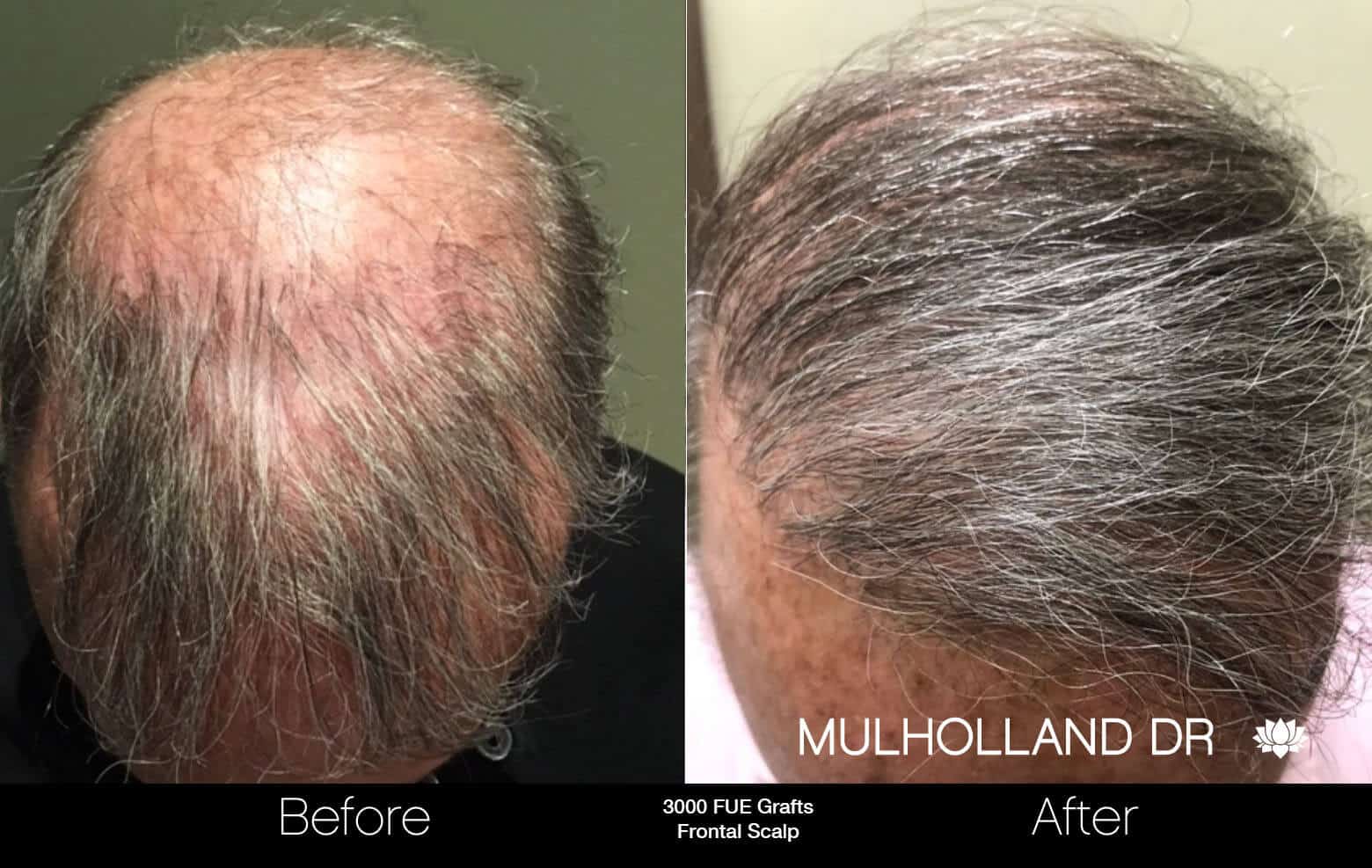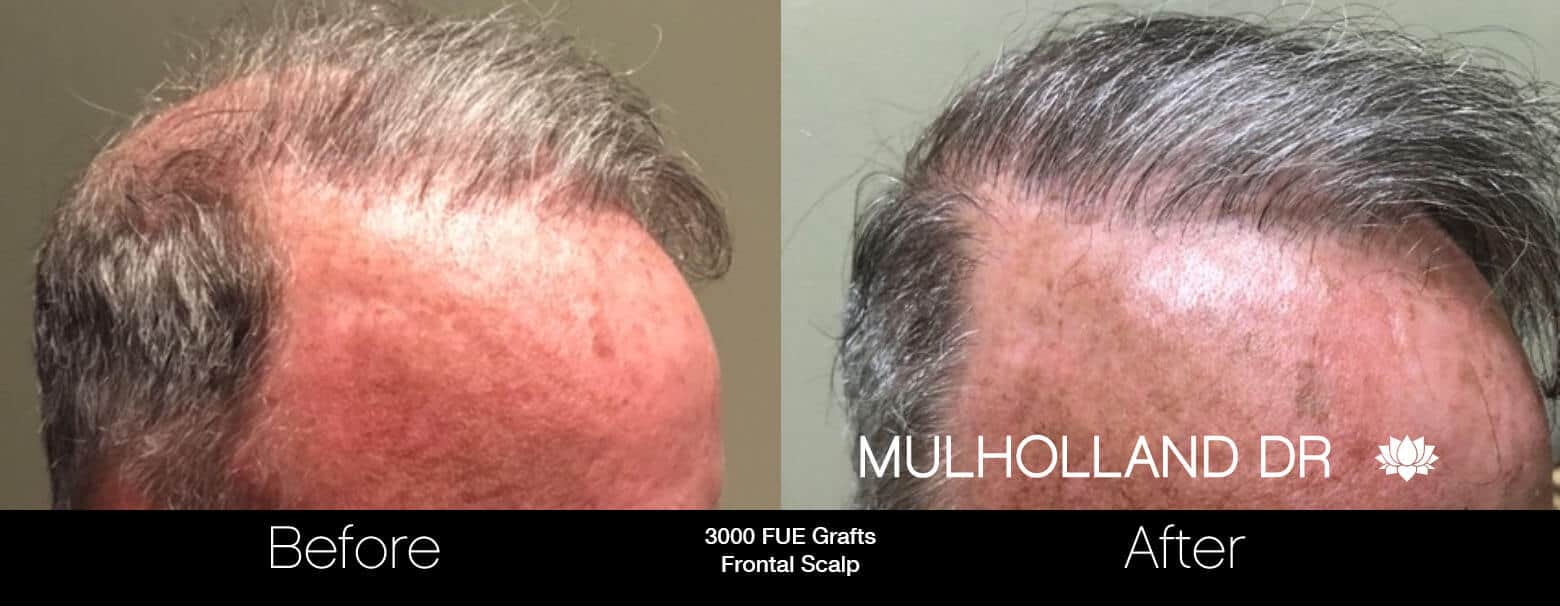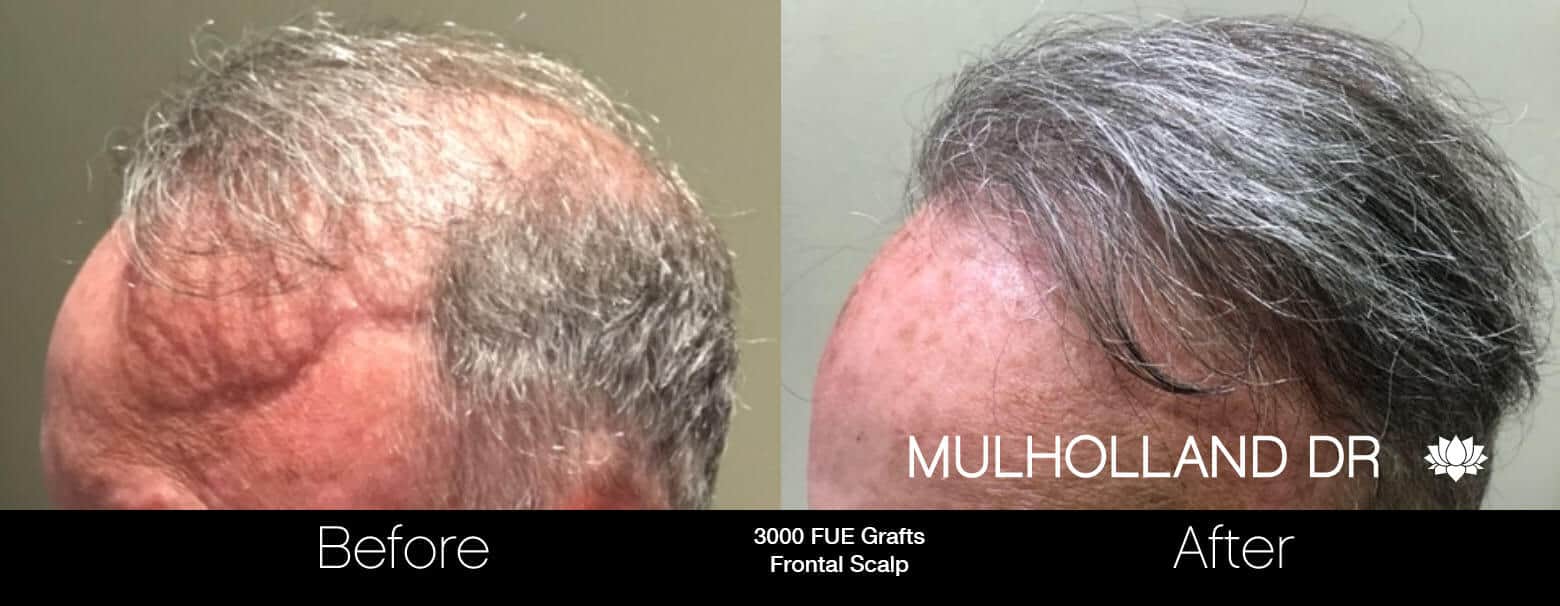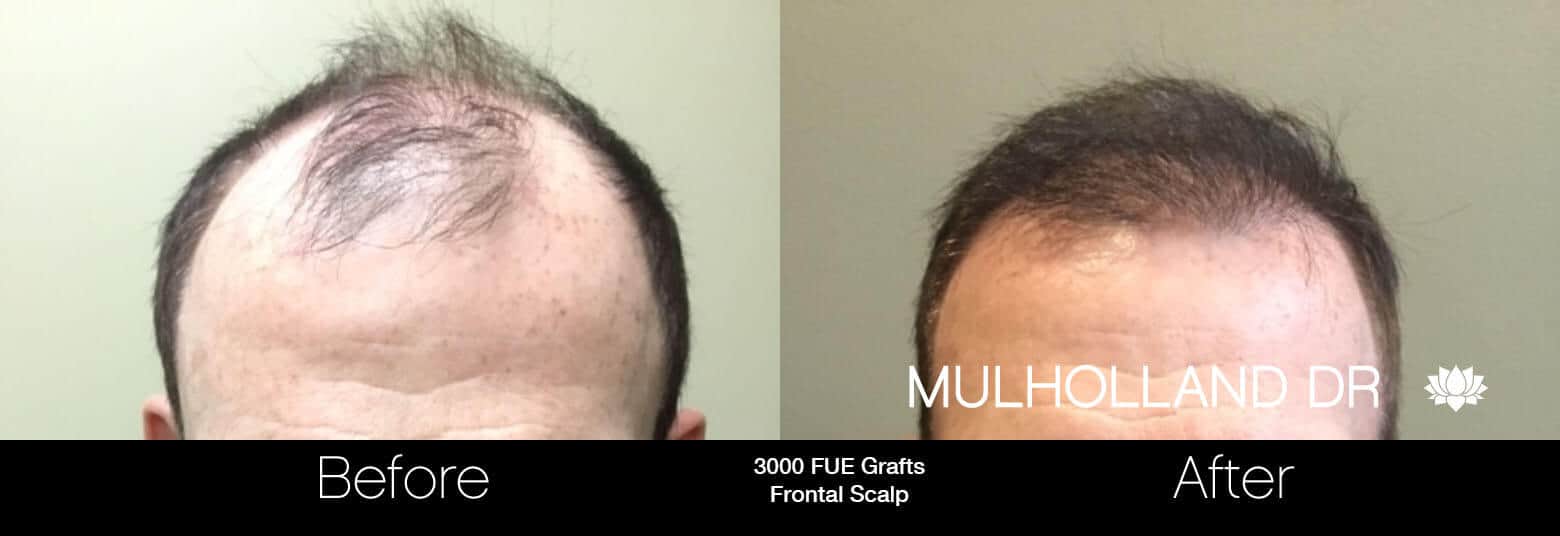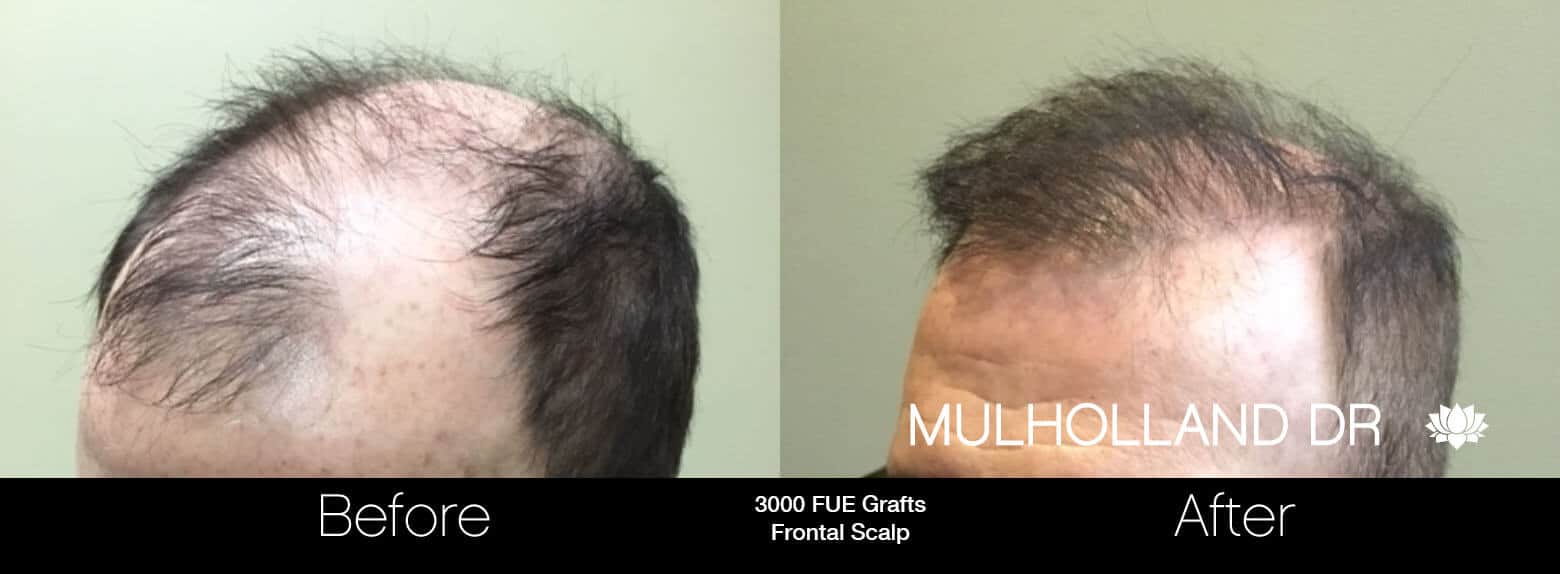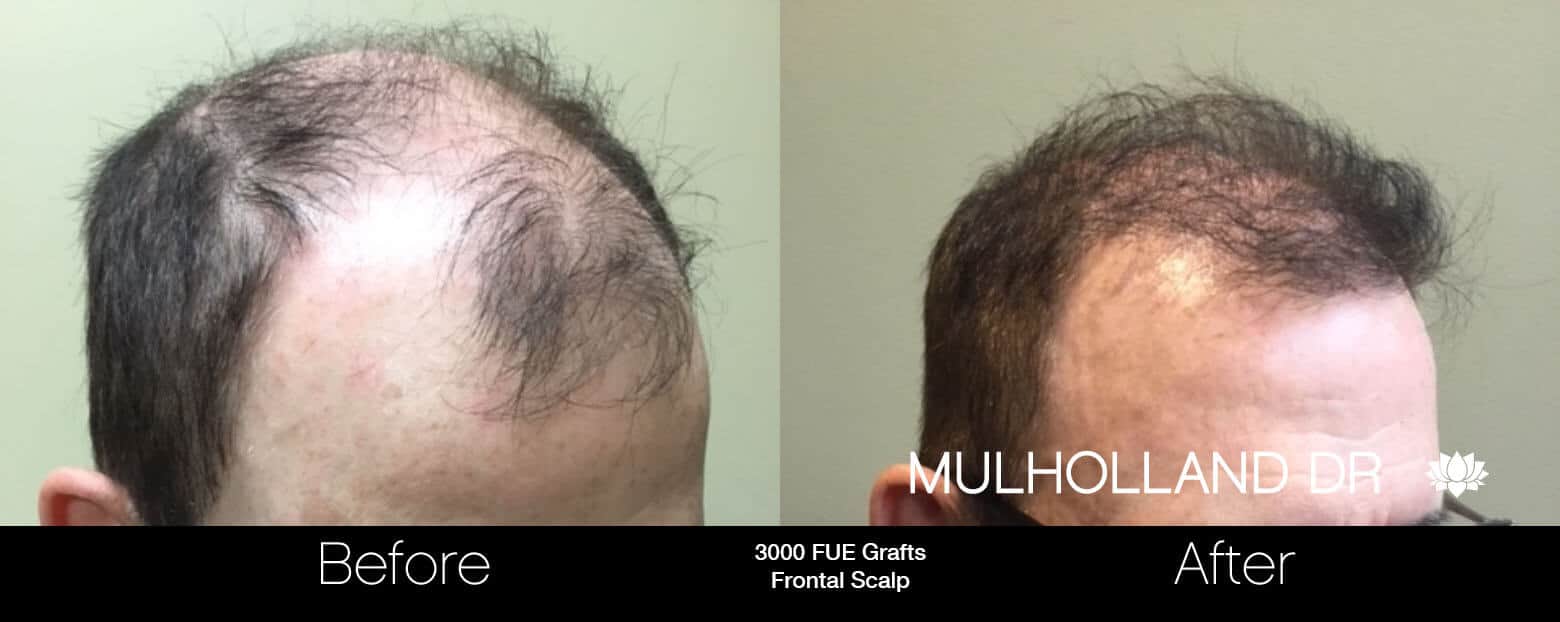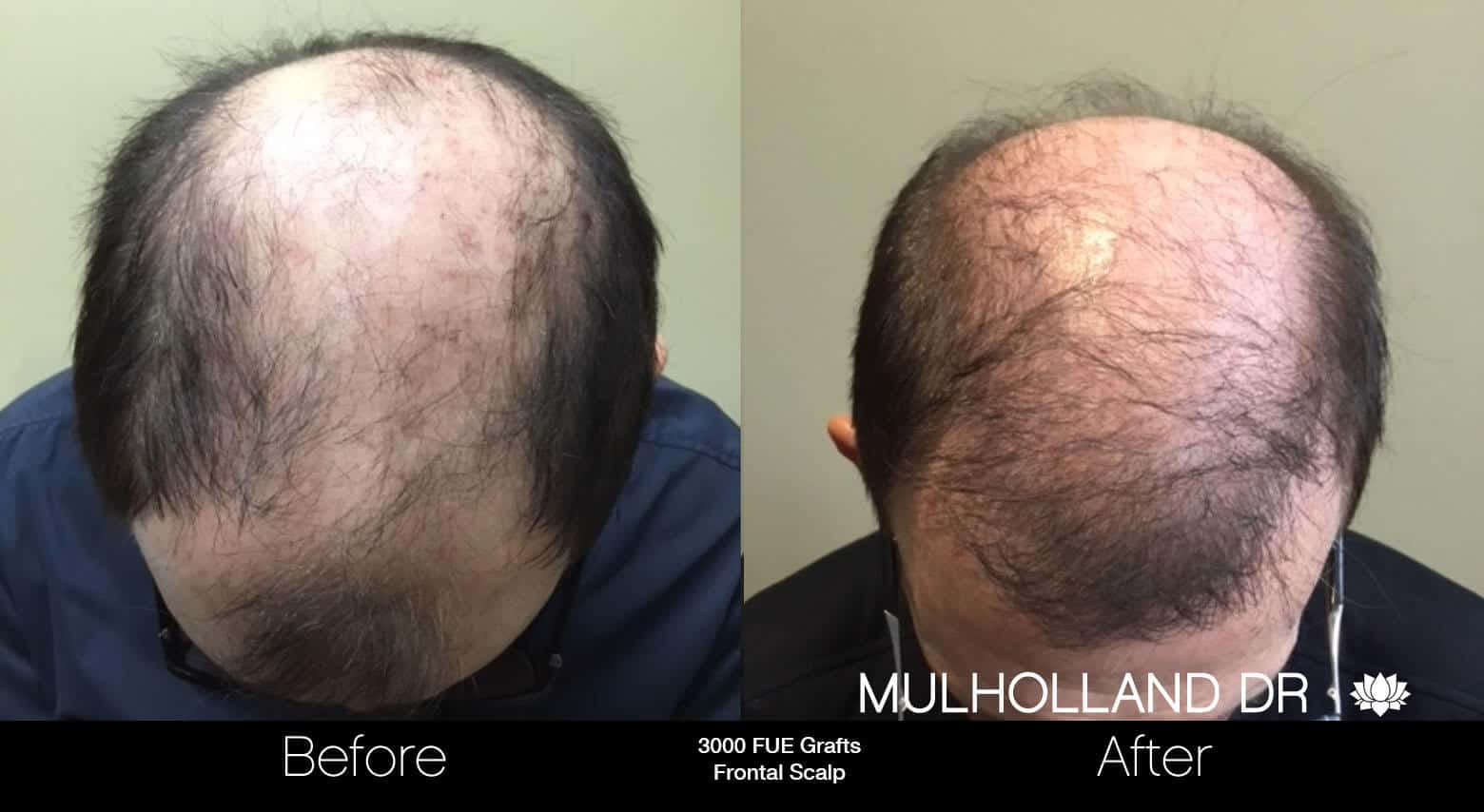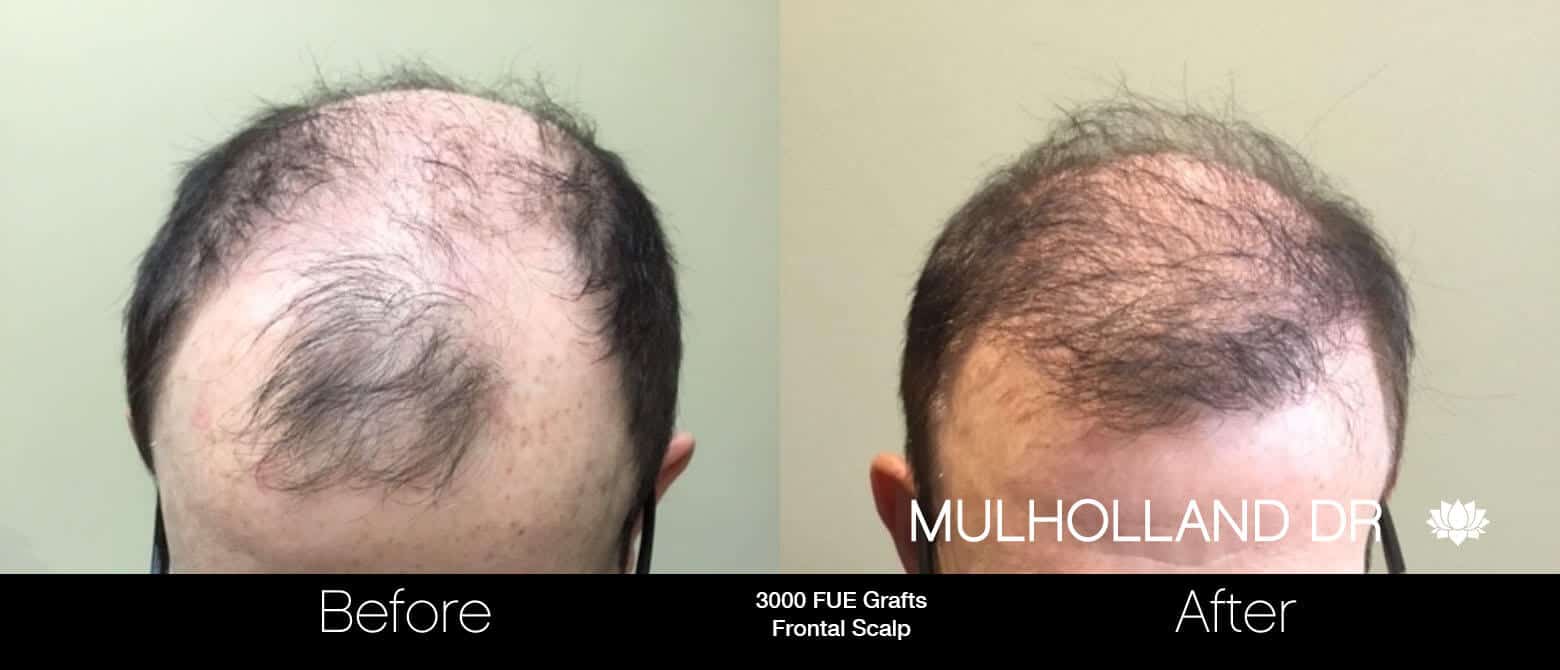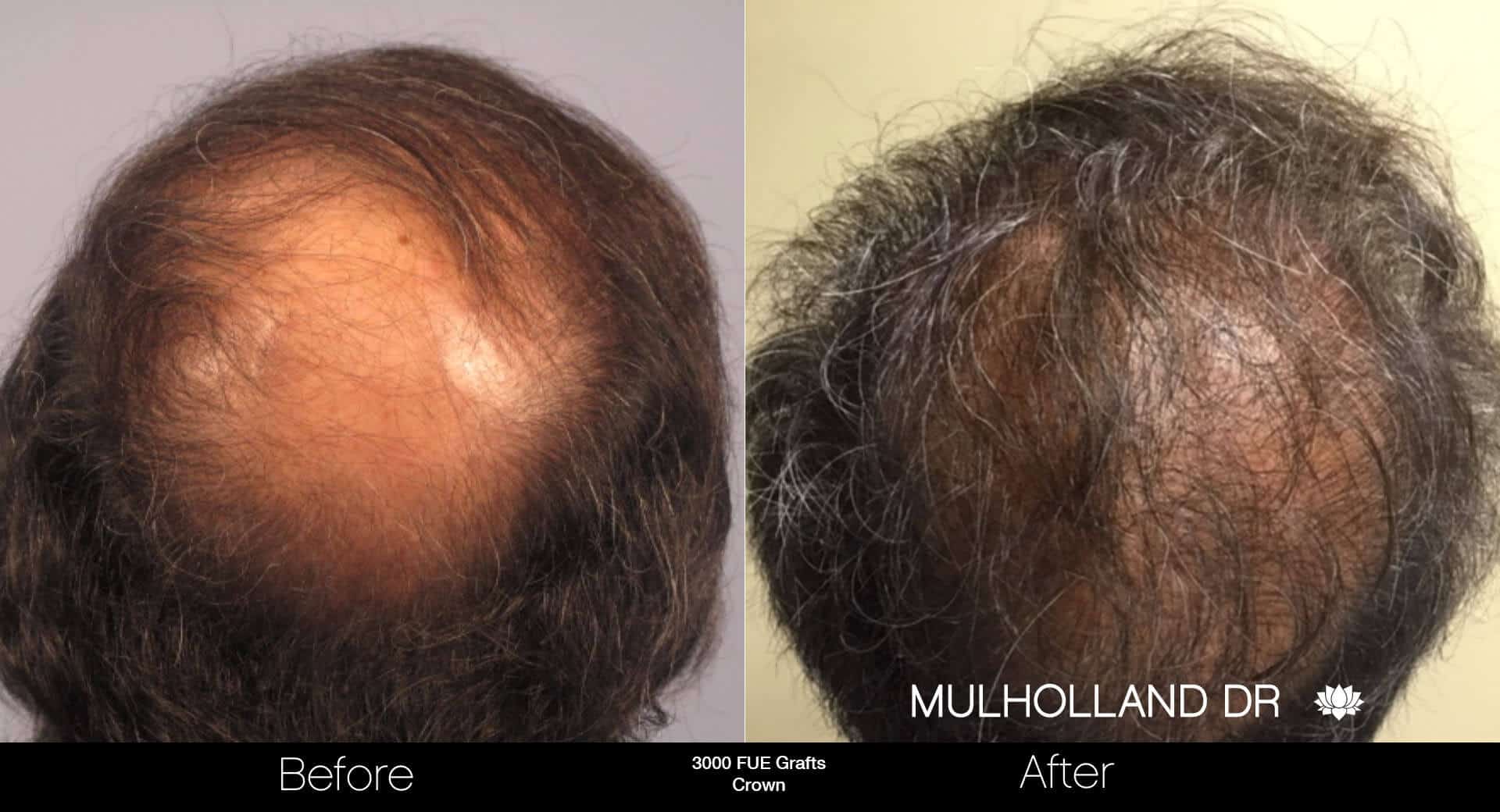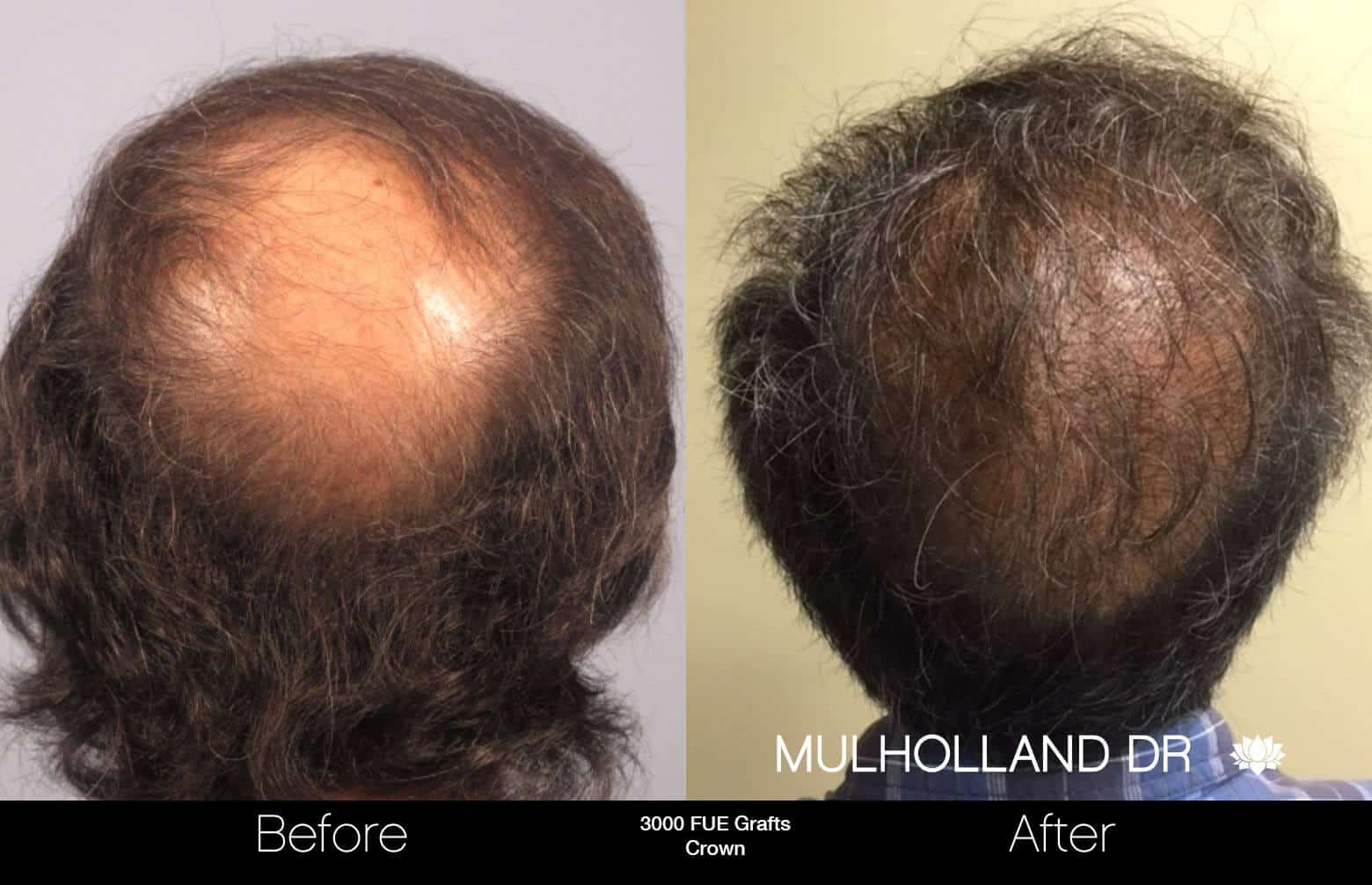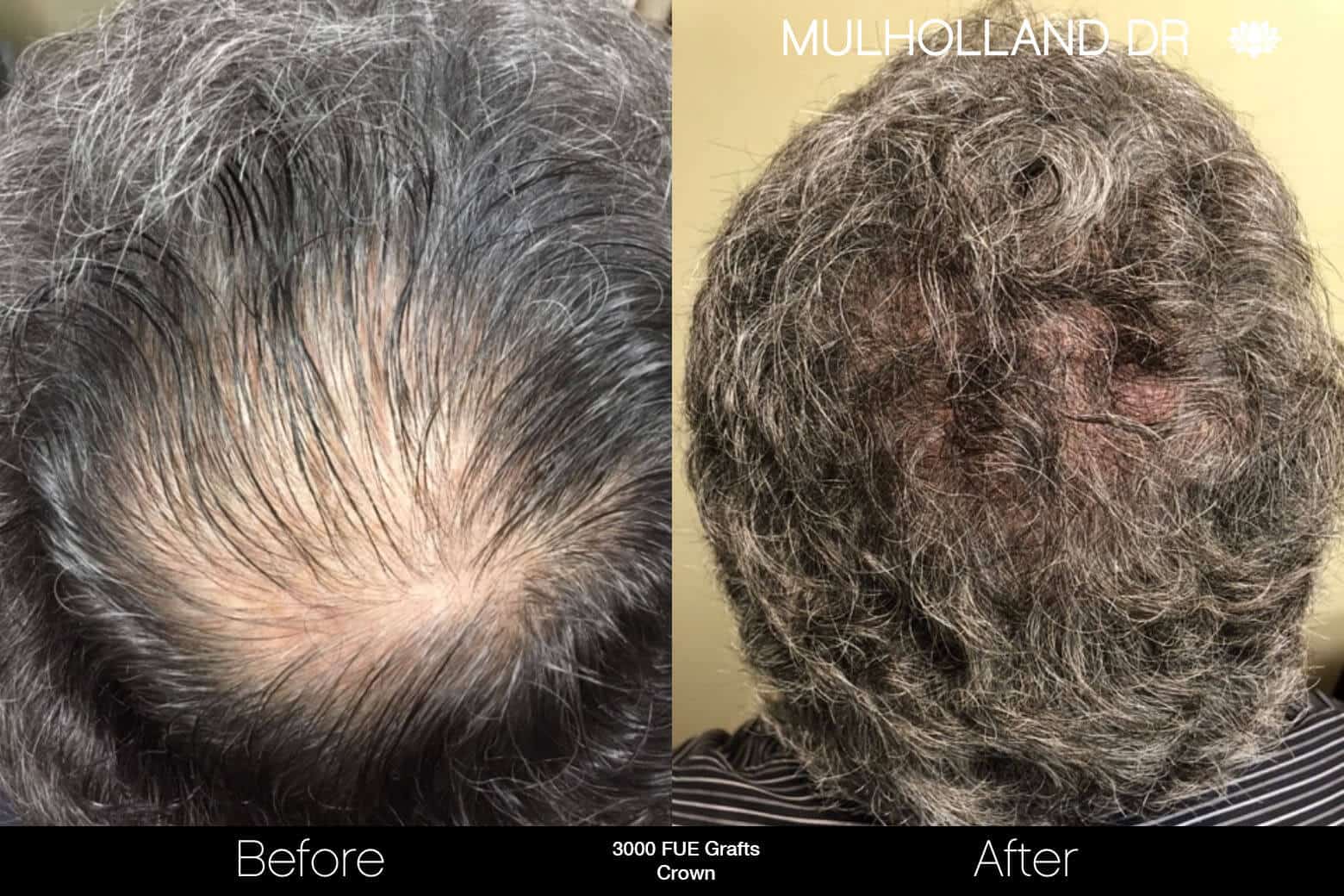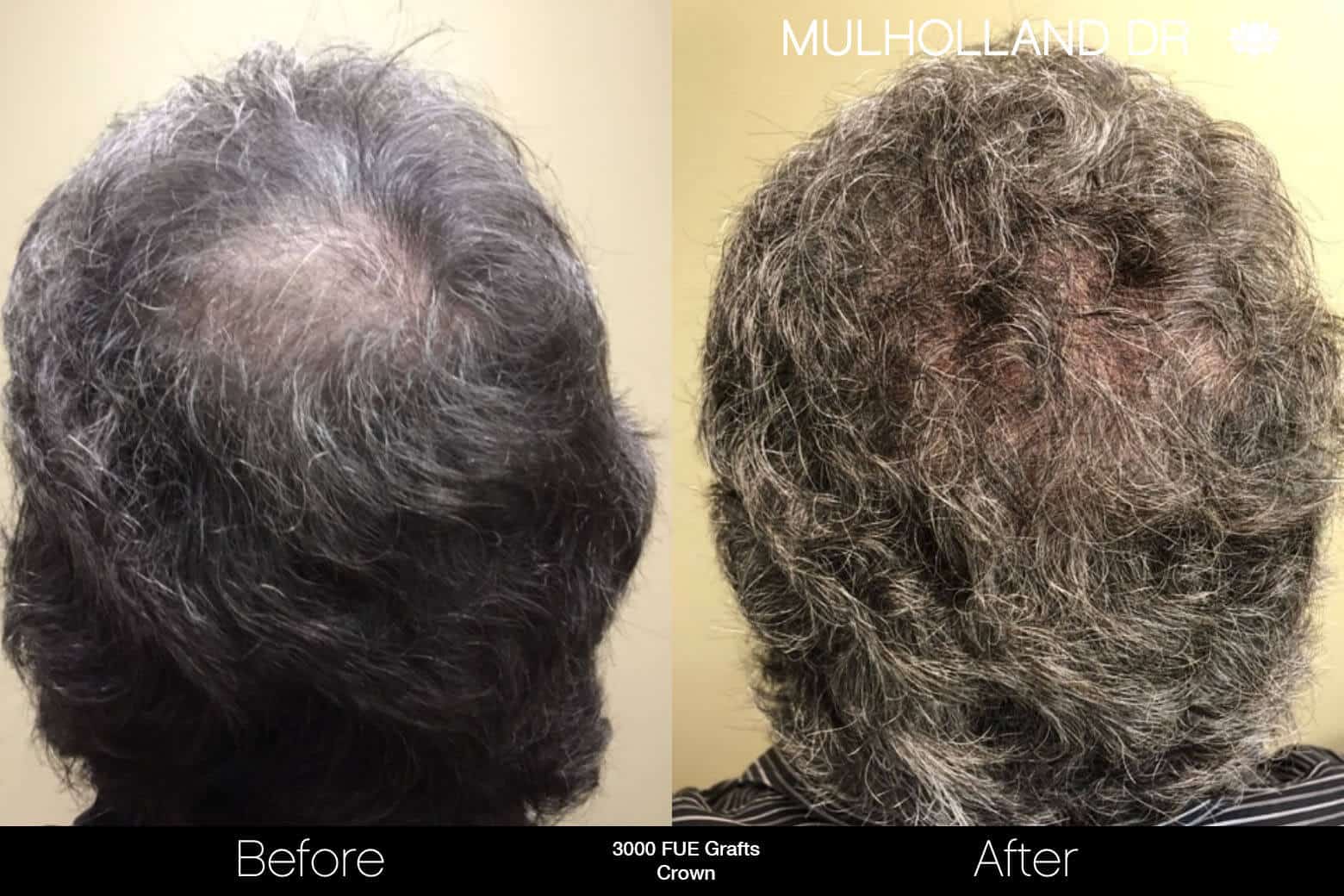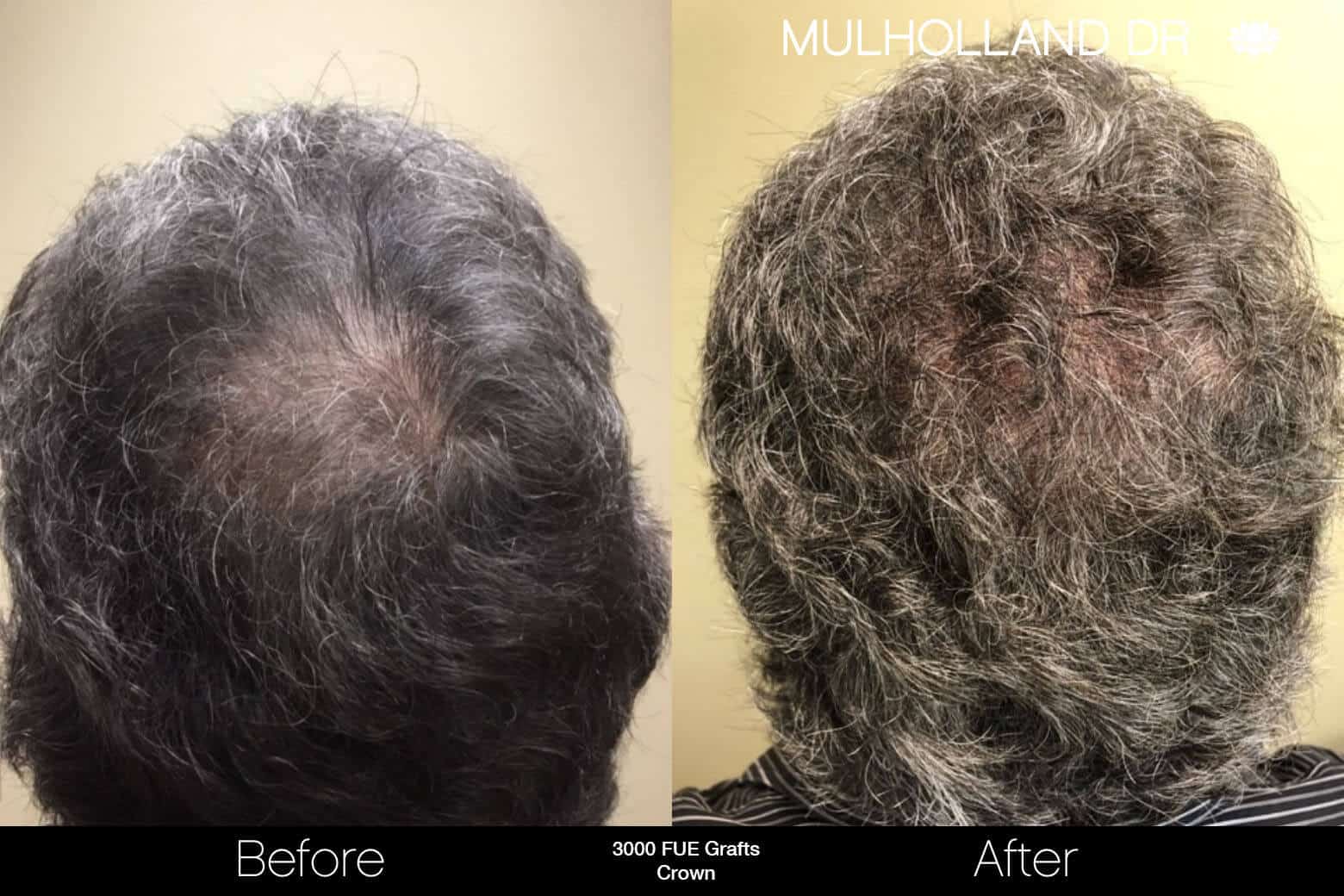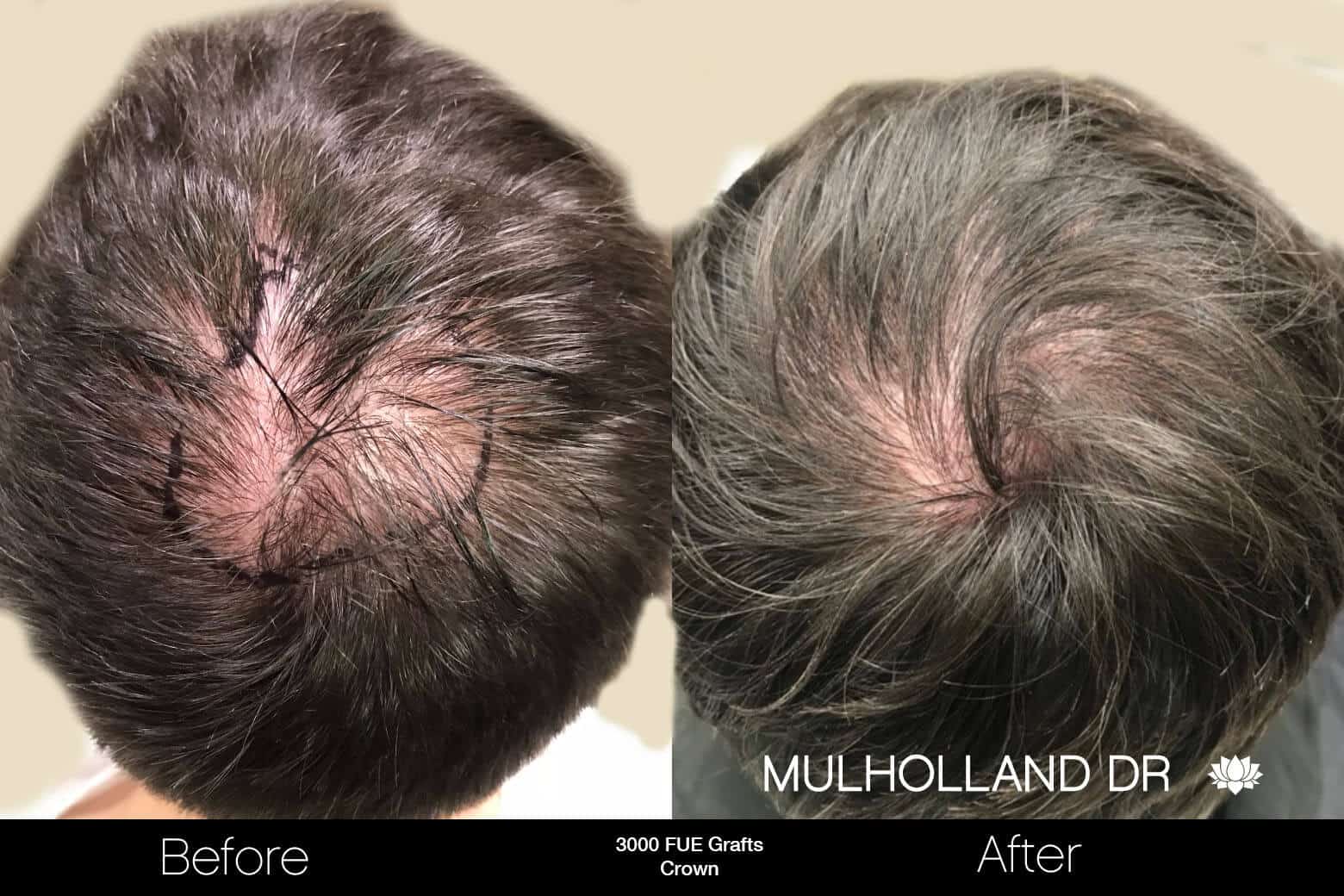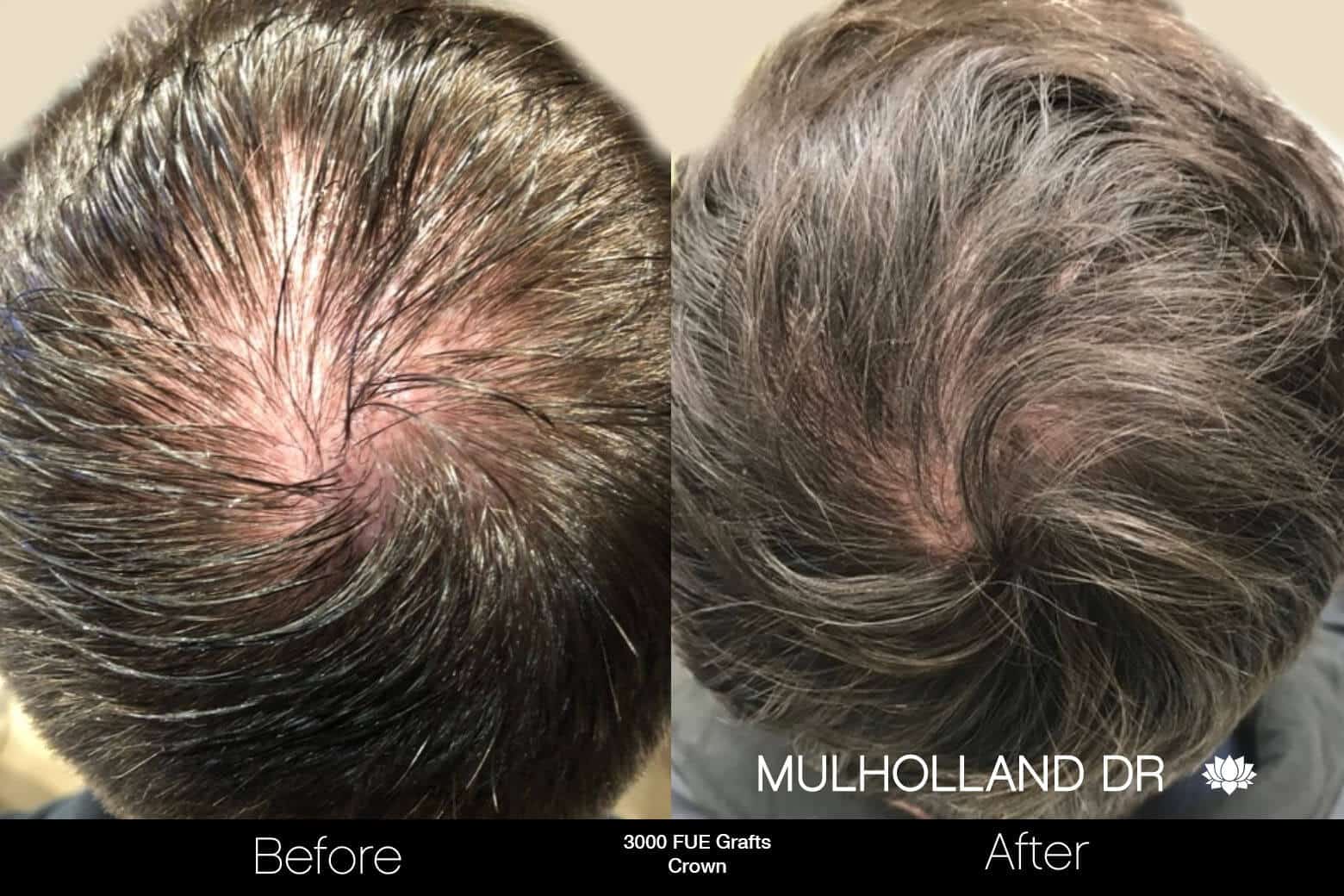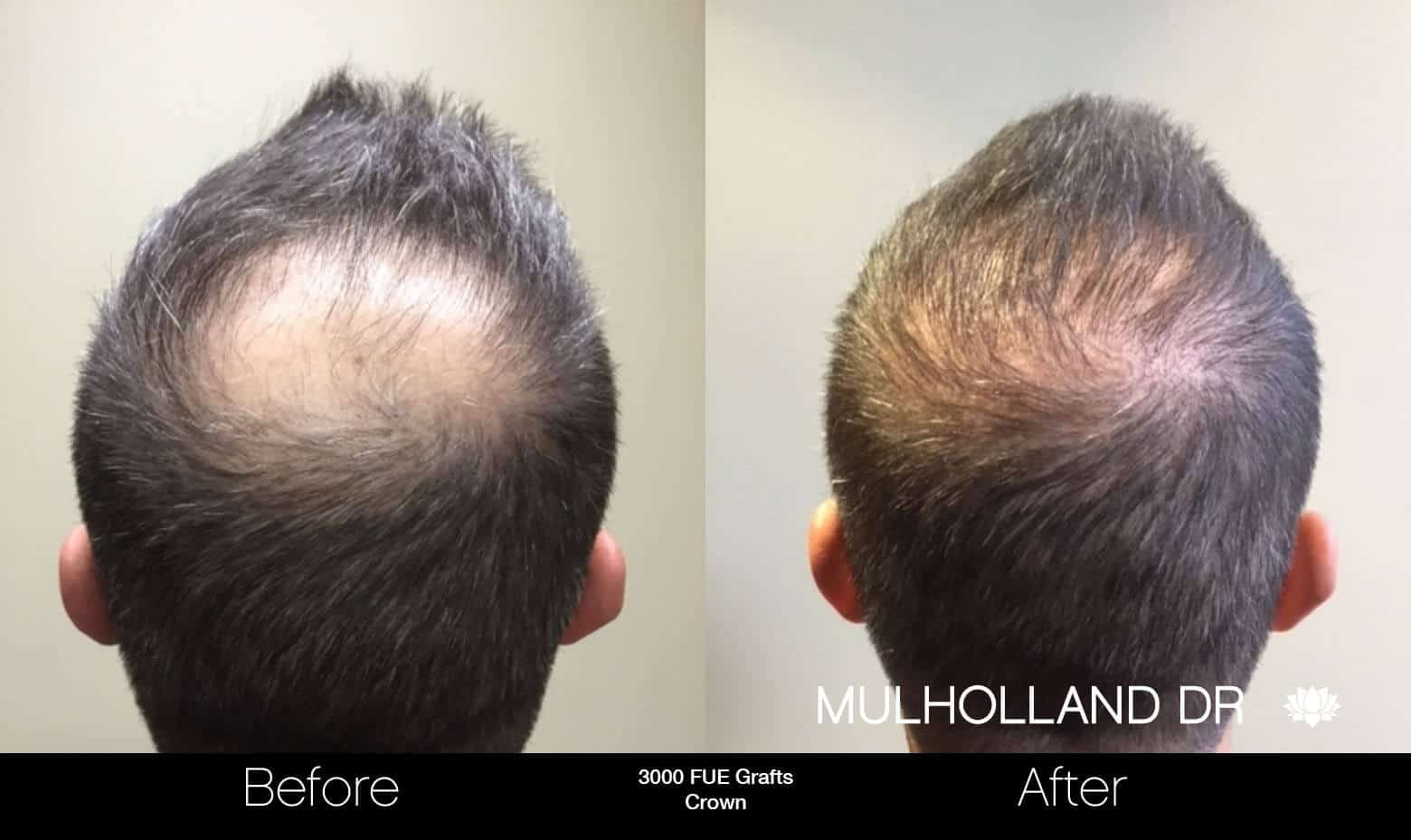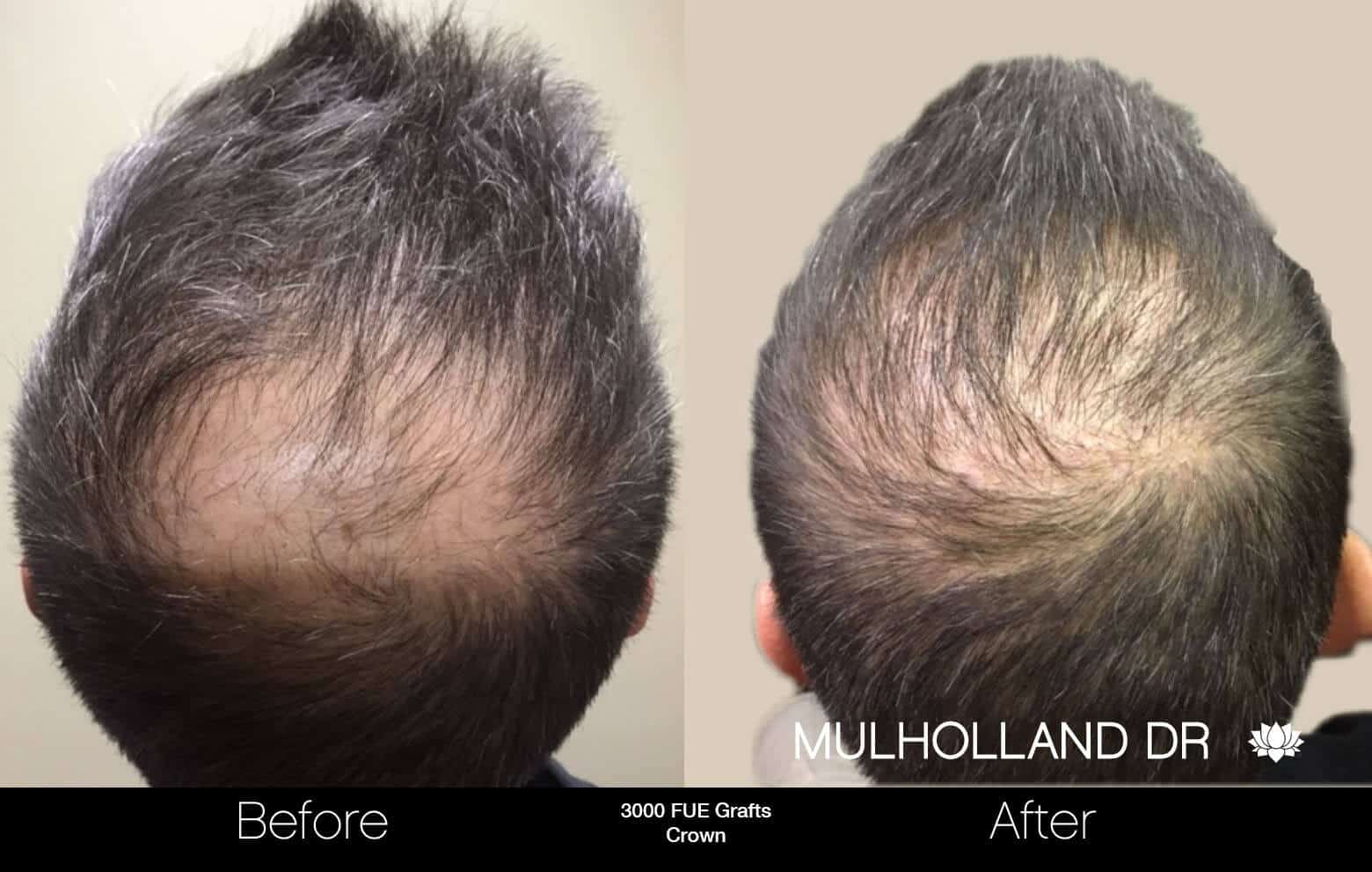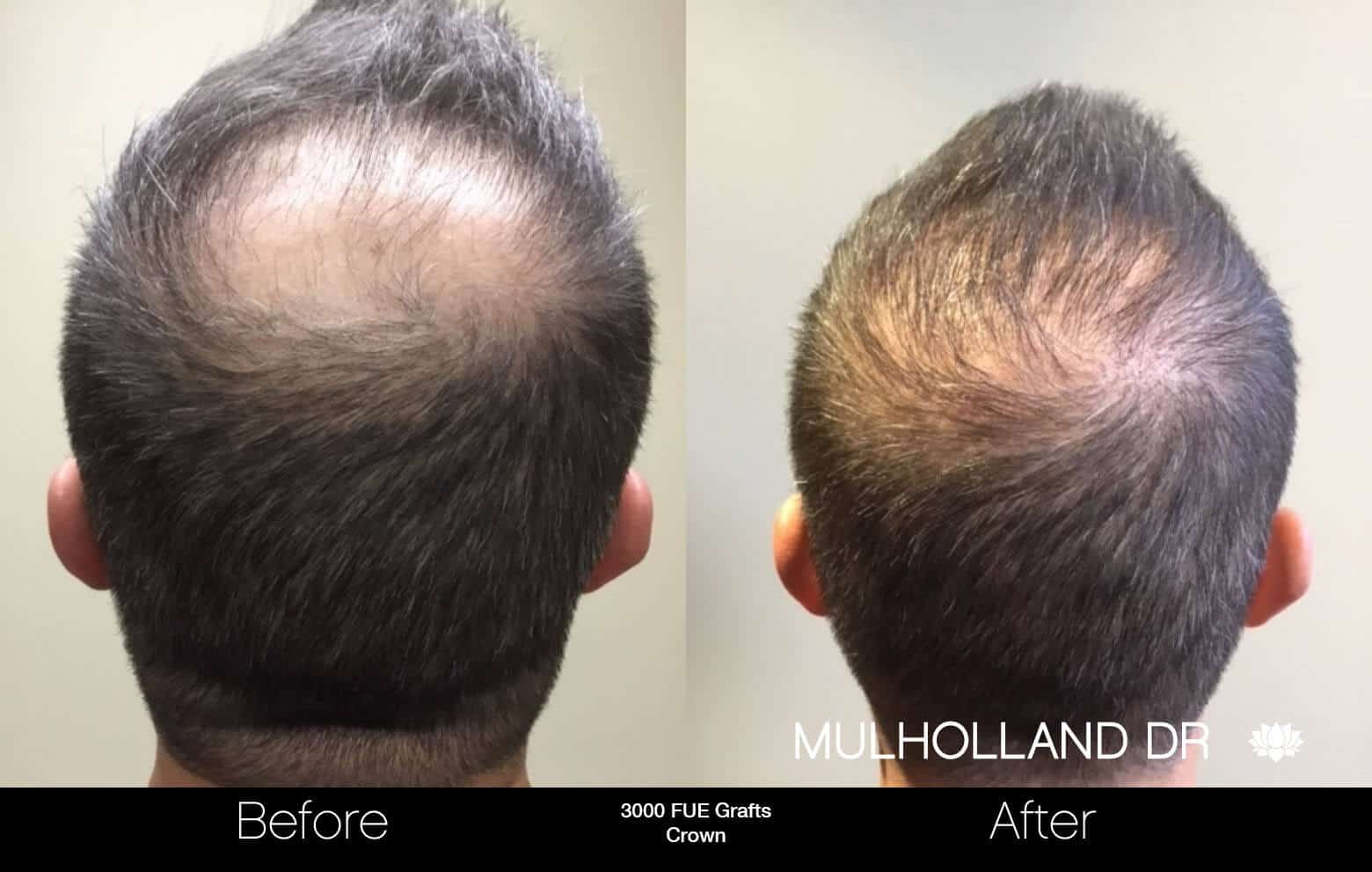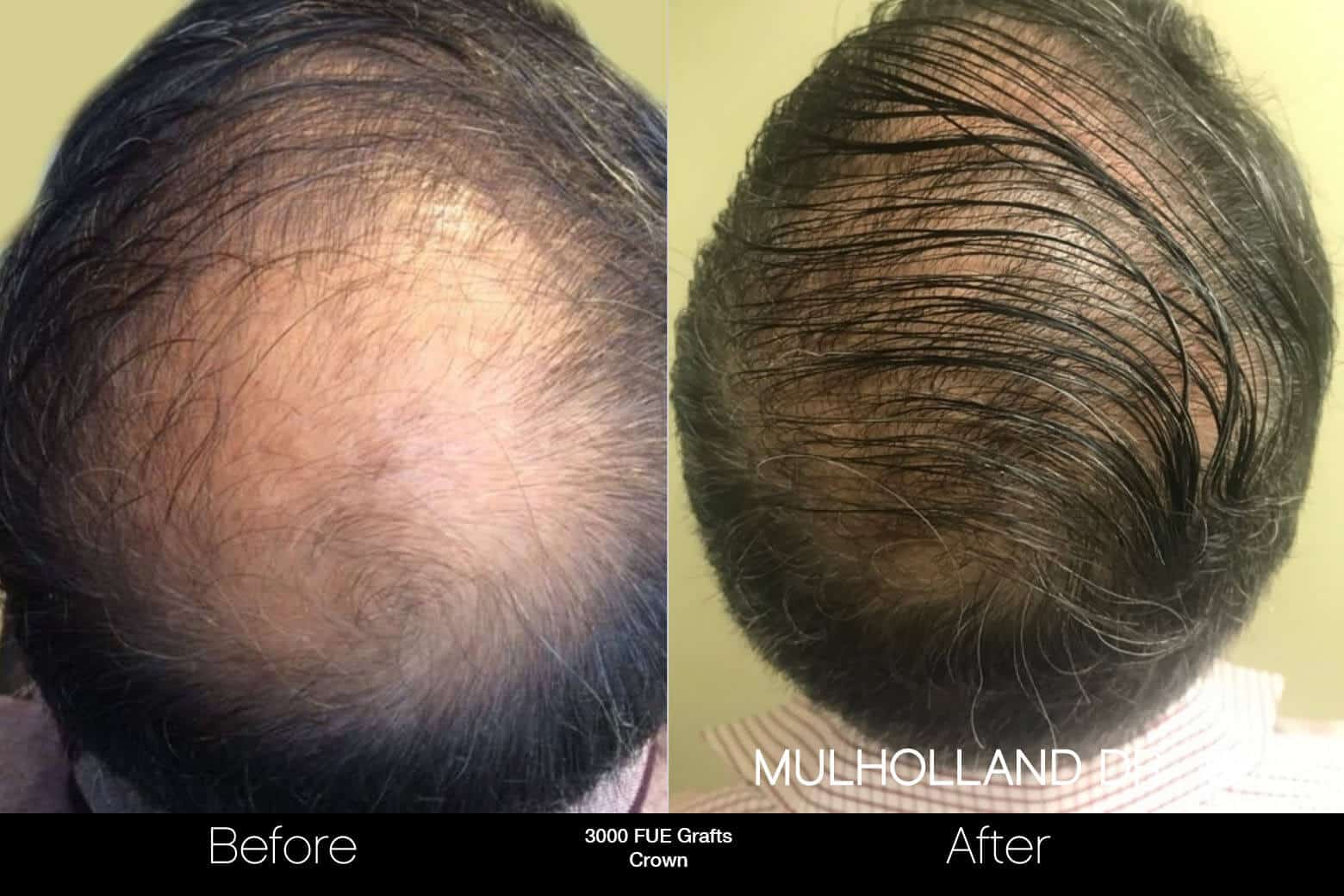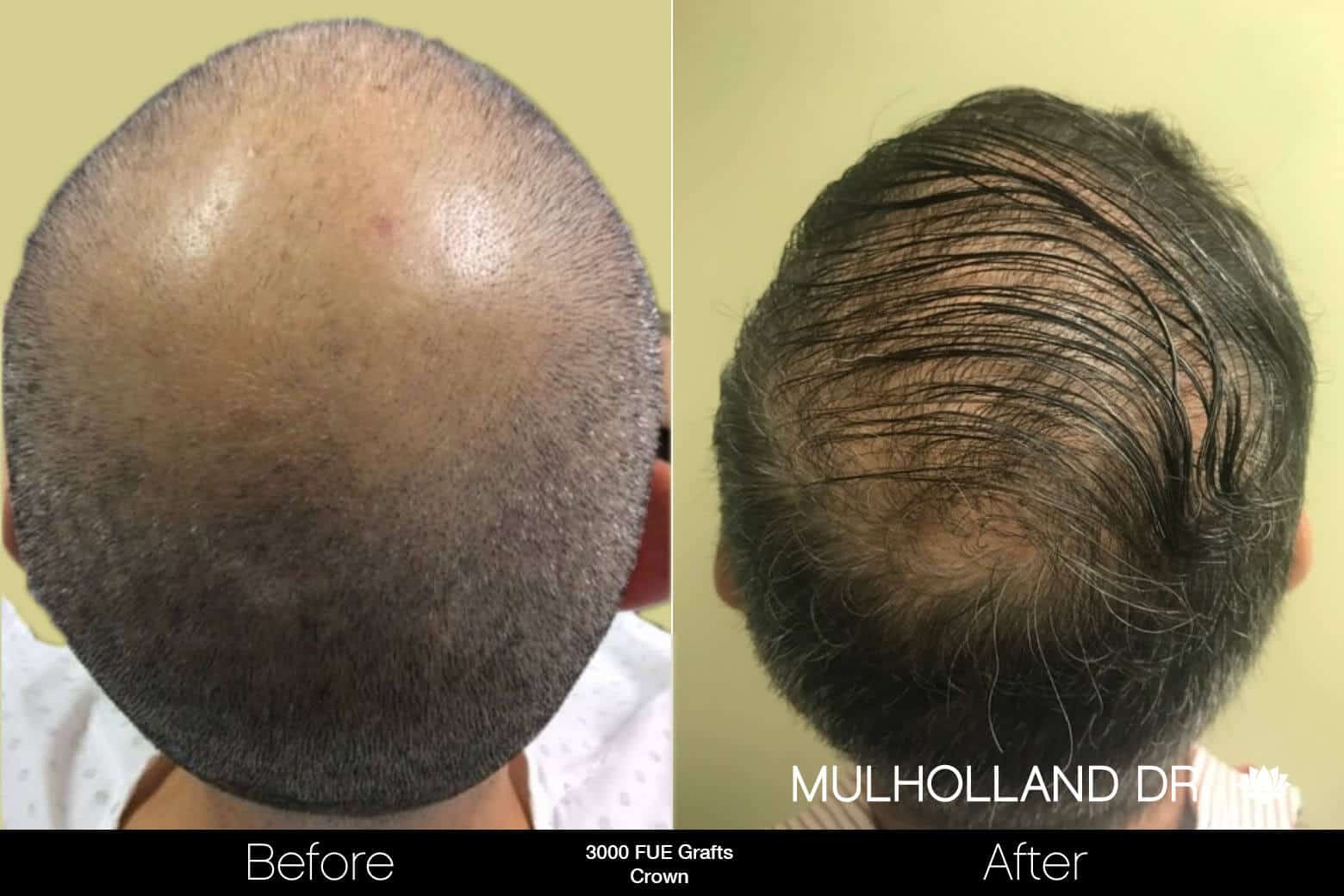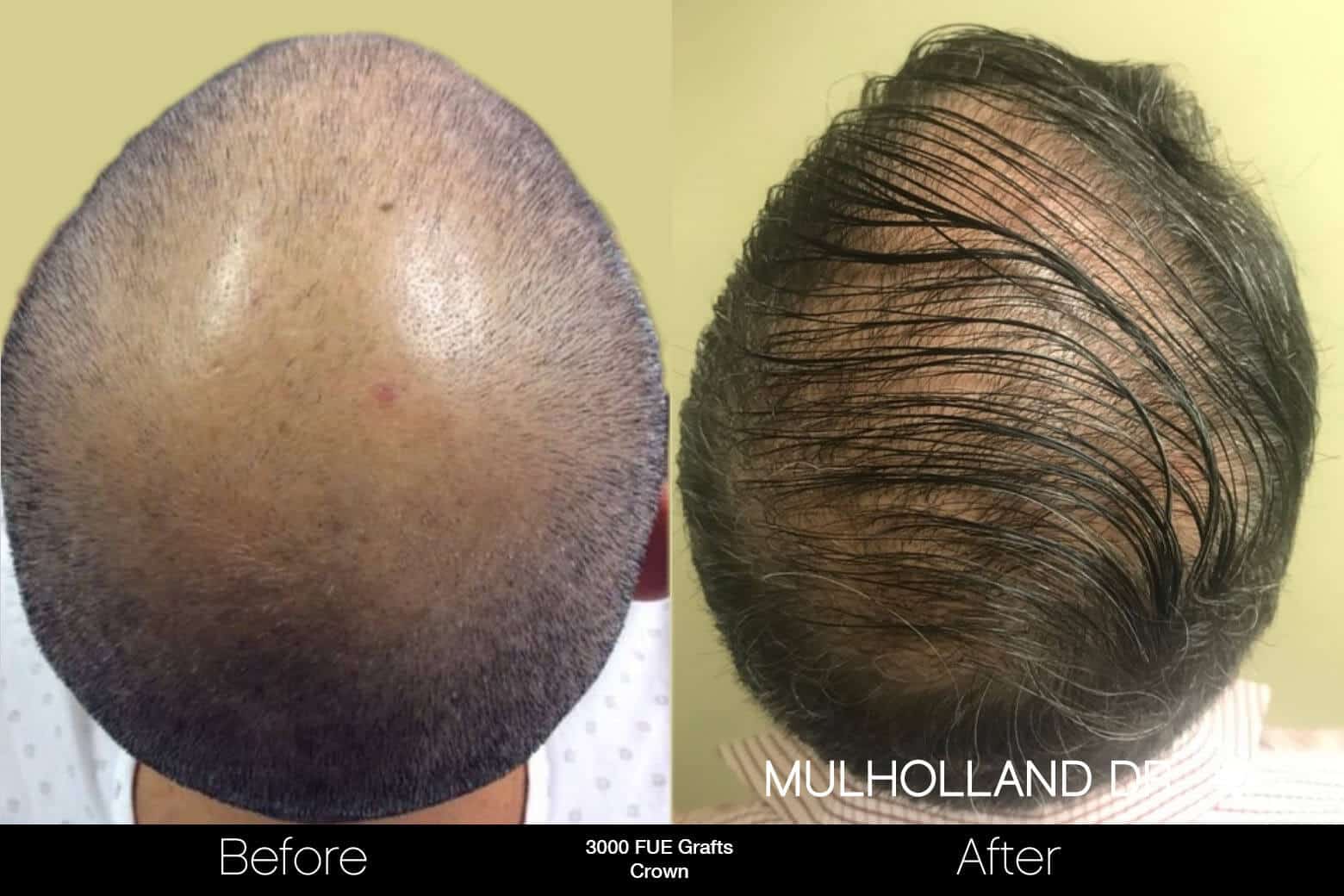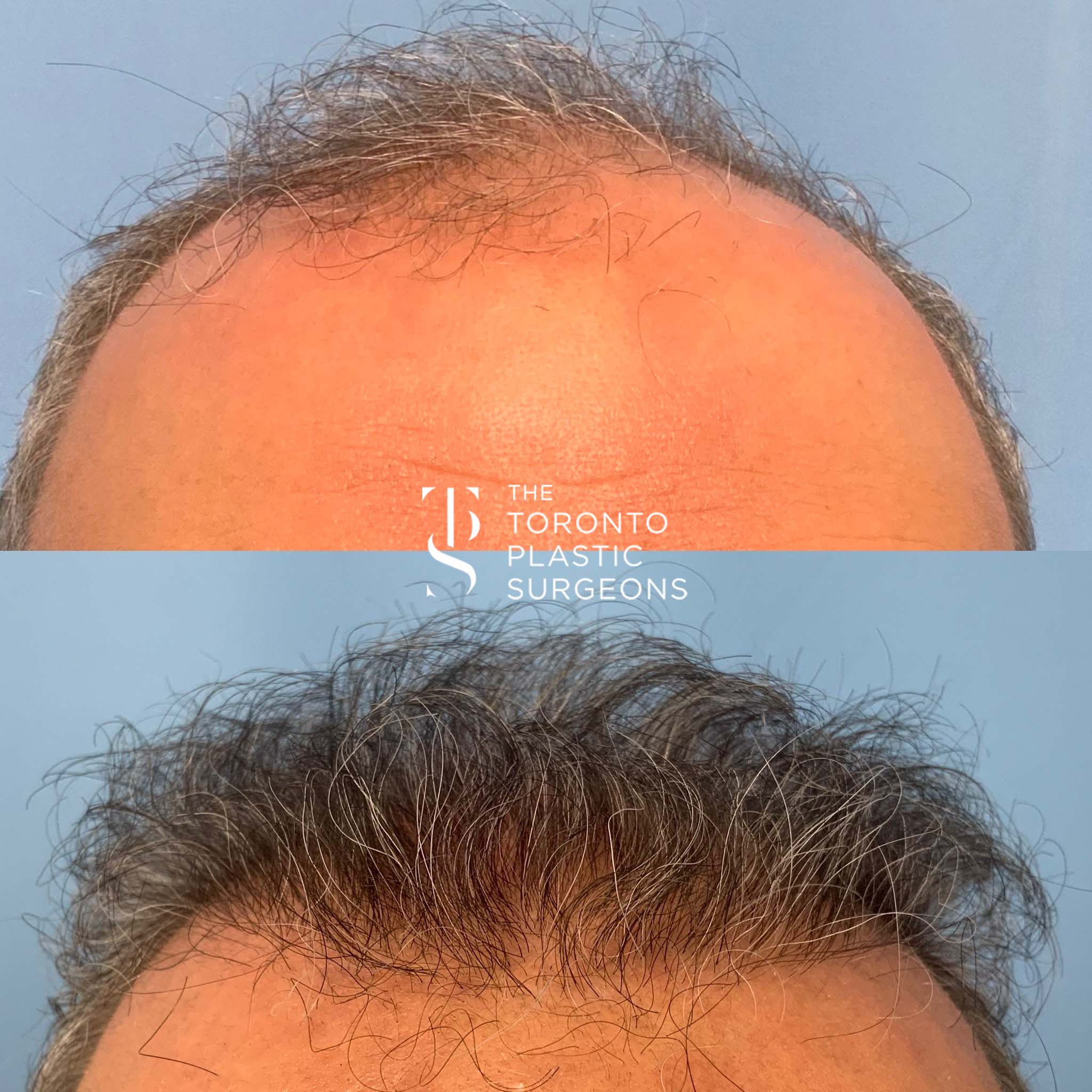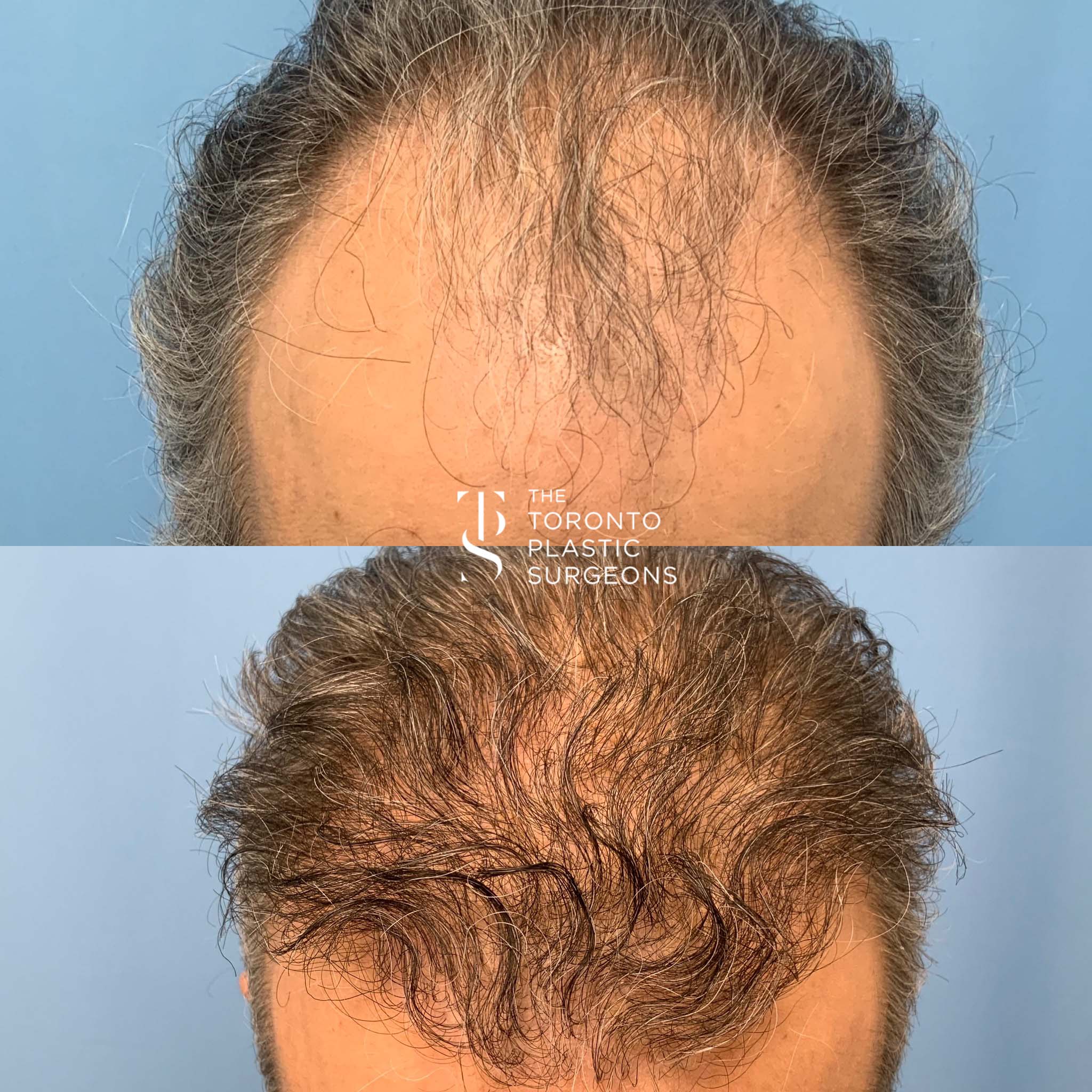-
 Price starts at $5,999
Price starts at $5,999
-
 Procedure Time 4 hours
Procedure Time 4 hours
-
 Recovery Time 7 days
Recovery Time 7 days
How Much Does a FUE Hair Transplant Cost?
The cost of the FUE hair transplant in Toronto varies according to the number of hair grafts needed to restore hair loss in the targeted area. Typically, pricing for an FUE hair transplant starts at $5,999. This price includes the low-level light therapy and nutrient shampoo that is necessary for post-operative care.
How Long Does it Take to Recover from a FUE Hair Transplantation?
While it will take months for the final results of the procedure to become apparent, patients can typically return to work 7-10 days after undergoing transplant. During the first few days, a soft dressing will be used to cover the donor area situated at the back of the scalp.
How Long Does a FUE Hair Transplant Procedure Take?
The Toronto Plastic Surgeons can perform the procedure in approximately 4 – 10 hours, depending on the number of grafts needed and the size of the targeted area. Before they are discharged, patients will receive post-operative instructions from their doctors.
What is a FUE Hair Transplant?
Follicular unit extraction (FUE) hair transplants involve taking individual hair follicles from your skin and implanting them elsewhere, usually on the head. The result is a hairline that looks thicker and fuller.
This type of hair transplant was developed to replace traditional follicular unit transplantation (FUT) techniques, which involve removing a piece of skin or scalp and grafting it elsewhere.
Types of FUE Hair Transplants
Neograft FUE Transplant
When using the NeoGraft technique, hair follicles are removed with a wand that extracts them with suction.
NeoGraft is highly accurate and advanced, and your surgeon will not need to make an incision for new hair follicles. Rather, a special tool is used to make the incision and implant the follicles at the same time.
This procedure is different from traditional FUE in that it does not require your surgeon to make individual extractions and implantations themselves.
4 Benefits of a FUE Hair Transplant
Permanent Hair Loss Solution
The results of FUE hair transplants are intended to serve as a natural-looking and long-lasting solution to hair loss.
Restore Youthful Appearance
An FUE hair transplant procedure is designed to restore a patient’s youthful appearance by making dramatic improvements to the hairline.
Minimally Invasive
A follicular unit extraction hair transplant involves no stitches or scars. In addition, all the hair follicles are extracted in natural units.
Short Recovery Period
Due to the procedure’s non-invasive approach, many patients can return to regular “light” activities within days of their FUE hair transplants. Patients will also not have to deal with the noticeable scarring that characterized older techniques, such as the Strip Graft.
Risks of a FUE Hair Transplant
Like every procedure, a FUE hair transplantation has a small chance of complications. The best thing patients can do to minimize the likelihood of complications is to select a trusted surgeon. With years of experience performing follicular unit extraction hair transplants, significant complications are uncommon and, in the rare event they occur, are expertly managed.
- Adverse Anesthesia Effects: In some cases, the anesthesia used in the surgery can have an adverse effect on the patient. For this reason, the Toronto Plastic Surgeons carefully review the medical history of every single patient that walks through their doors.
- Possible Healing Complications: An FUE hair transplant procedure can sometimes result in damage to existing hair follicles. Good preparation and careful technique can diminish this risk.
- Itchiness: Patients may find their scalps itchy immediately after surgery. However, this should subside in the days following the procedure.
- Redness: As with itchiness, the redness should subside not long after the follicular unit extraction hair transplant.
Who is a FUE Hair Transplant Candidate?
While there are no specific traits that dictate candidacy, proper physical health and realistic expectations can make the recovery process more seamless. Fundamentally, a candidate for an FUE hair transplant is someone who would like to reverse the effects of hair loss and patterned baldness. In addition, it is imperative that patients have a healthy set of hair in their donor site.
We invite all those interested in this procedure to reach out to Toronto Plastic Surgeons for a consultation.
How to Prepare for a FUE Hair Transplantation?
To ensure a successful surgery, the doctor will advise that you follow certain preparations in the weeks leading up to your procedure date:
- Smoking should be discontinued two weeks leading up to the procedure and two weeks after. Those who continue to smoke will have a longer recovery period and a greater likelihood of complications.
- Two weeks before your procedure, patients must cease taking Aspirin or any medication that contains Aspirin.
- The night prior to your surgery, patients must stop consuming any food or drink. Small sips of water are permitted, however.
- On the day of the surgery, give your hair a deep wash with shampoo and conditioner.
How is a FUE Hair Transplantation Performed at TPS?
Before the FUE extraction, the harvest area is shaved (some patients prefer to shave all their hair) and numbed with local anesthesia. Our team will administer laughing gas (nitrous oxide) to ensure the local anesthesia injection is as painless as possible.
Following local anesthesia, our highly skilled technicians painlessly harvest your FUE grafts using the NeoGraft automated hair transplant system. This second stage involves our team implanting the new FUE grafts into the targeted recipient areas.
TPS uses the stick-and-place technique, which uses a small hypodermic needle to create tiny slits between hairs or along the frontal hairline. The method gives patients the densest, most natural-looking hair you can achieve.
It is important to note that the TPS Hair Restoration team has stopped performing surgical Strip Graft Surgery and Follicular Unit Transfer because of the unsightly linear strip graft scar, painful post-op recovery, potential long-term sensory complications, and unnecessary trauma to the grafts from excisional strip graft surgery.
What to Expect After a FUE Hair Transplantation?
Final hair growth density and length often take up to one year to achieve, but noticeable and pleasing results can occur very early on. The Donor Site FUE rotatory harvest sites are barely visible after 2-3 weeks and are usually painless.
Recovery and Timeline
Day 2: Patients can return to engaging in low-impact regular activities, including work.
Week 1: Any mild pain should subside after the first week.
Week 2: Hair growth will now camouflage the patient’s donor area.
Week 4: Patients may return to engaging in strenuous activities, including exercise.
Can Women Get Hair Transplants?
The transplant is performed the same on a woman as on a man, but optimal results may take longer to reveal themselves if the patient suffering from female hair loss has a longer hairstyle that she wants her new growth area to blend into.
Female Hair Transplant will also take longer, as there is a larger surface area to cover and more follicles to extract.
Why Choose TPS?
By utilizing the latest technology, the Toronto Plastic Surgeons will ensure that the outcome of the procedure best matches the patient’s expectations. In fact, the Toronto Plastic Surgeons is recognized for their renowned hair restoration procedures, as the team’s state-of-the-art clinic features some of the most advanced FUE tools in the country. Rest assured that you’re in safe hands before, during, and after the procedure.
Specialized Hair Transplant Services in Toronto
Hair restoration isn’t just for the scalp. At Toronto Plastic Surgeons, we specialize in facial hair transplants, including options for eyebrows and beards. Using the same precise FUE technique trusted for scalp procedures, we help patients achieve fuller, natural-looking results for their facial hair. Whether you’re looking to enhance sparse brows, fill in patchy beard areas, or restore lash density, our tailored treatments deliver results you can feel confident about. Conveniently located in Toronto, our clinic is here to meet your hair restoration goals—whatever they may be.
FUE Hair Transplantation FAQ
When Can I Return to Work After an FUE Hair Transplantation?
Patients can return to work 7-10 days after undergoing an FUE hair transplantation.
How Painful Is It to Get a FUE Hair Transplantation?
Due to the anesthesia administered during the procedure, the patient will not feel any pain during the hair surgery. Nitrous Oxide (laughing gas) is administered during the local anesthesia, ensuring patients are comfortable throughout. While it is normal to experience some swelling and discomfort after the surgery, there will be no extreme or long-term pain.
Are the Results of FUE Hair Transplants Permanent?
Yes. The results of FUE hair transplants are intended to be lifelong. However, you may have an ongoing loss of existing, non-transplant hair that, over the years, leaves you looking thin again and another FUE transplant session may be required.
How Effective Is a FUE Method?
An FUE hair transplant is very effective, with over 90% successful survival of the grafts. Most patients, as they continue to lose non-transplanted hair, will need 2-4 sessions over the course of their lives, depending on their genetic risk of extended baldness.
Which Is Better: a FUE or FUT Hair Transplantation?
The best transplant for you depends entirely on your needs and goals! While FUT involves the transfer of a strip of hair-bearing skin from the donor area (back of the head), FUE excises follicular units from the donor area individually.
While the survival rate of follicular units is 86% for FUT and 61.4% for FUE, follicular unit extraction may be the best option if you like to wear your hair short and want to avoid the possibility of a linear scar. On the other hand, FUT is well-suited to patients requiring a large number of grafts as it usually provides a higher yield of hair.
What Is the Best Age to Get a Hair Transplant?
Although thinning or balding is most often associated with older men, some men begin losing hair as early as their teens. While there is no rule dictating what age to undergo a hair transplant, younger men are advised to wait until their 30s if possible because while FUT and FUE provide permanent results, hair loss tends to be a progressive condition that might continue for years, making it likely that another hair transplant procedure will be necessary down the line.
The best time for a hair transplant then, depends on your stage of hair loss rather than on your age. The best way to be sure is to schedule a consultation!
Can a FUE Hair Transplant Fail?
In order to avoid the most common factors that lead to hair transplant “failures,” choose a reputable, licensed clinic with experienced surgeons like those practicing here at Toronto Plastic Surgeons.
A skilled surgeon will deliver quality, natural-looking results for every patient, as well as advise expertly on a patient’s suitability, since some hair types and scalp conditions are less suitable to hair transplants than others.
Finally, a qualified surgeon will always communicate clearly what kind of results a patient can realistically expect so there are no surprises! Bottom line: pick your surgeon well, and you can’t go wrong.
Does FUE Leave Scars?
Unlike with FUT, where a strip of hair-bearing scalp tissue is harvested and leaves a linear scar behind, FUE removes each follicle separately with a tiny round surgical punch, which means no linear scar. However, there are still tiny scars with follicular unit extraction – they just tend to be much less detectable than those expected from a FUT hair transplant, even on those with very short haircuts. Of course, if your hair is worn long, no scars will be visible. The size of a FUE scar depends in part on the size of the punch used by your surgeon.
Can You Tell If Someone Has a Hair Transplant?
Good news: hair transplant surgery has advanced tremendously to the point where it is very difficult to tell if someone has undergone a modern hair transplant or not. Results are very natural-looking and tend to be indistinguishable from your untransplanted hair.
Bottom line: if a hair transplantation is done properly, no one should be able to tell, because a skilled surgeon can create undetectable results. So, while those who know you well may notice there’s been a change of some kind, a stranger on the street will likely never be the wiser!
Does Hair in the FUE Donor Area Grow Back?
Although the time it takes for hair to grow back in the donor area can vary between individuals, a healthy scalp usually shows hair regrowth within a few months. Though the recipient or transplant site often temporarily loses some hairs (also known as shock loss), the roots will stay embedded, and healthy new hairs grow in over the coming months.
Your entire hair regrowth process for both donor and recipient sites may take 12 months or more. We will ensure that your scalp is healthy and healing well during a series of follow-up appointments.
Is It Ok to Wear a Hat Post Hair Transplant?
Typically we advise patients to avoid wearing any sort of head covering during the first five days post hair transplant procedure. Hats (particularly tight ones) increase the risk of compressing and/or dislodging newly implanted hair grafts, and any damage to your grafts at this early stage could create empty areas on the scalp, which defeats the point of the entire procedure.
After about six days, your hair grafts are usually secure enough to wear a hat. If it is necessary to cover your scalp before the sixth day, go with a very loose-fitting hat or light hood–as long as it doesn’t come into contact with the grafts.
Can You Style Transplanted Hair?
Of course, once you’ve healed, go ahead and choose any hairstyle you want! While many patients are forever loyal to the shaved look, we recommend you start growing your hair out longer so that you can actually see the full extent of your results. While longer hair may not have looked natural pre-transplant, it will now.
It’s best to avoid all styling products and dyes for at least six weeks. In general, chemical products and high peroxide dyes are not good for your scalp and can irritate your grafts, so should be minimized, as should hair dryers and straighteners, as they can damage new follicles.
What Is the Best Type of Hair Transplant?
Hair loss medications and specialty shampoos can only go so far. For those experiencing significant hair loss, surgical hair transplantation is the only trusted way to truly restore natural hair growth to areas where balding or thinning has occurred. Advancements in hair transplant surgery have made both FUT and FUE procedures a lot easier on patients by reducing both discomfort and downtime. Results are more natural-looking, and there’s a high patient satisfaction rate. Of these two types of hair transplant methods, the best option for you will depend on your individual needs and your surgeon’s recommendations.
How Short Can I Cut My Hair After a Hair Transplantation?
How short you are able to cut your hair after a hair transplant depends mostly on which surgical technique has been used, as well as how self-conscious you are about revealing any scarring. It is possible to shave your head after a FUE hair transplant (up to a number 1 or 2 grade cut), but we recommend waiting for 8-10 days before doing so. Some patients even manage to shave their hair to a grade 0. However, individuals who have undergone FUT surgery may need to wear their hair at grade 4 or longer in order to conceal the linear scar that is left by the procedure.
FUE Hair Transplantation Testimonials
“Testimonial 1: I had an FUE procedure a few days ago at TPS, and it was probably the best decision I ever made. Isaac and the team were excellent, helpful and made me feel comfortable pre-op and post-op. If you are looking to get a hair transplant, I would highly recommend TPS. I have spent months researching and I am so glad I decided to go with Isaac. Thank you so much!!!” – J (Google Reviews).
“Testimonial 2: Went to the clinic at 2 today. Surprised it’s one of the few clinics that actually attend to their patients at the designated time. Thank God. Been losing a few strands of hair the past couple months. Wanted to get it checked. More than the usual. Was suggested hair transplant for a longer term solution. Going to consider it after speaking with family. Overall had a good time and ended up learning lots about hair restoration. I liked the fact that I was shown few sample before and after pictures.” – Yelp.




